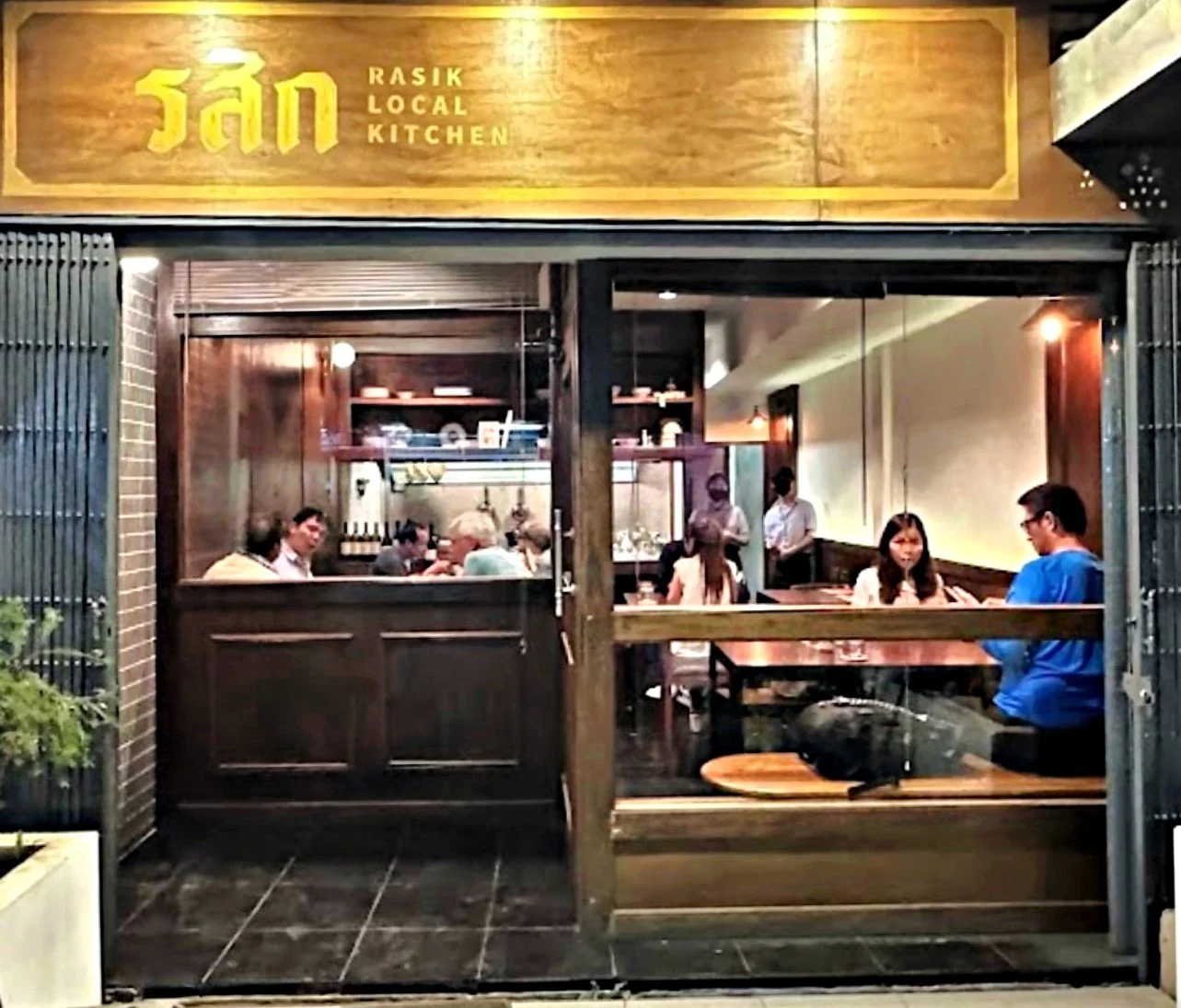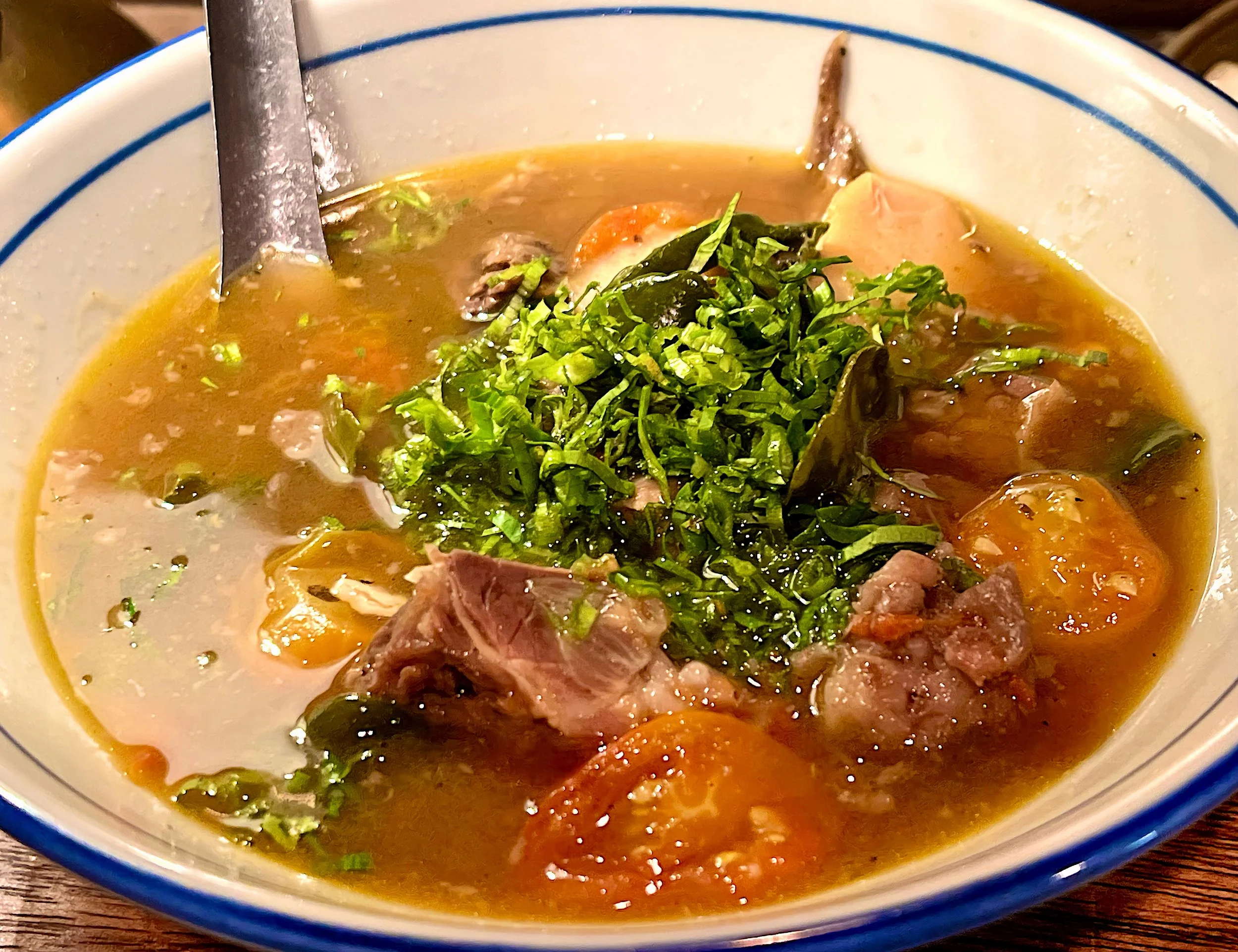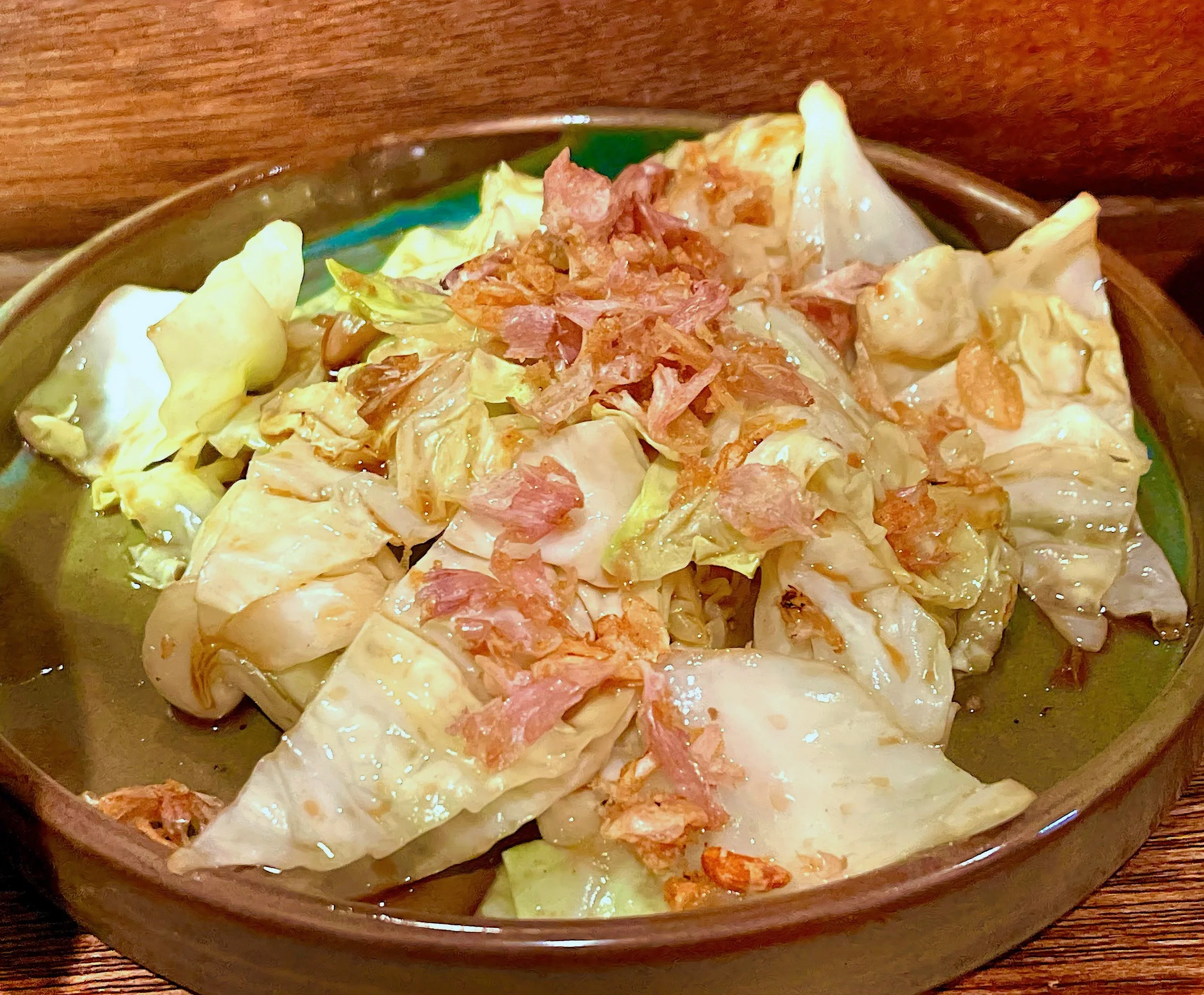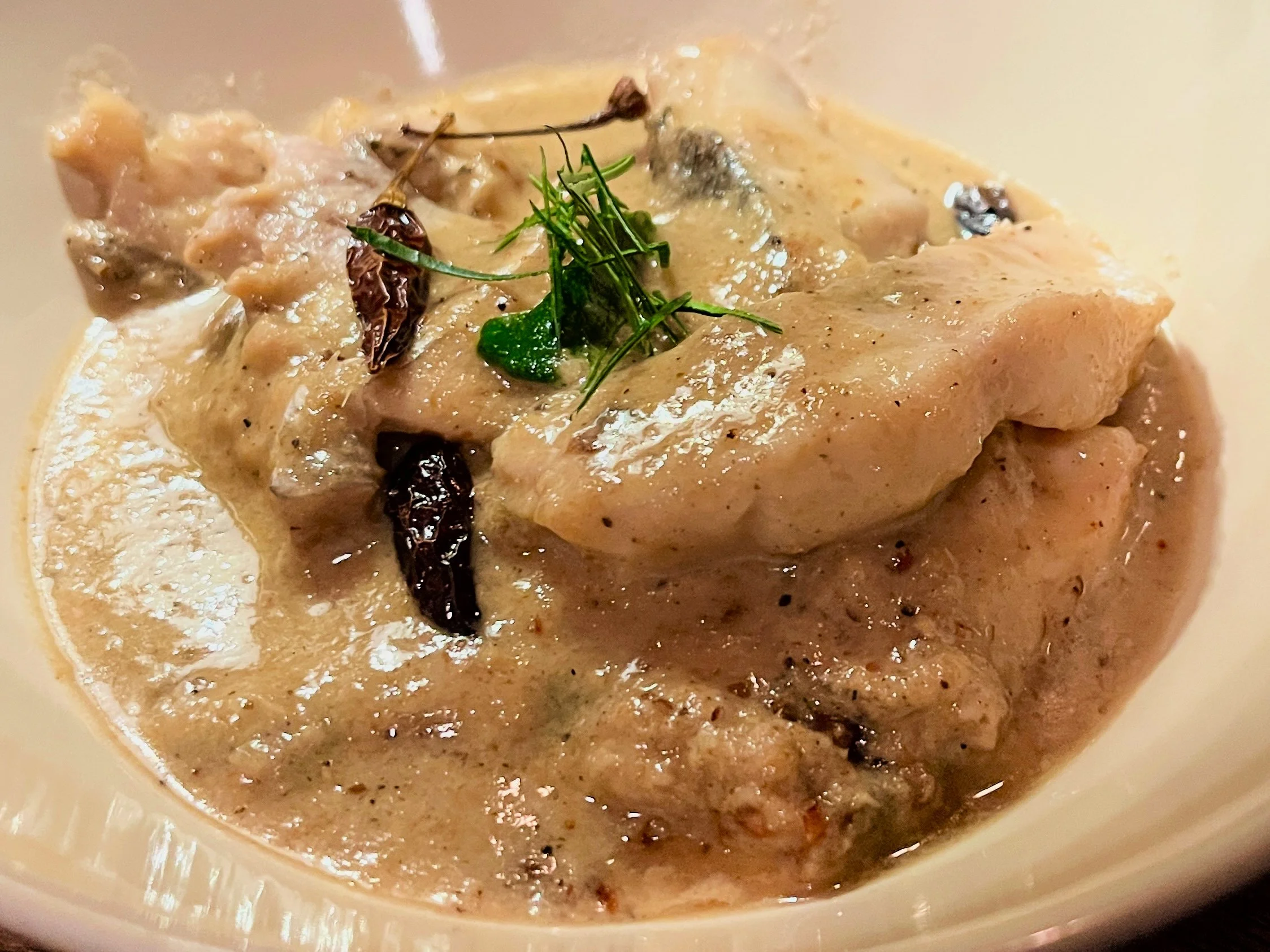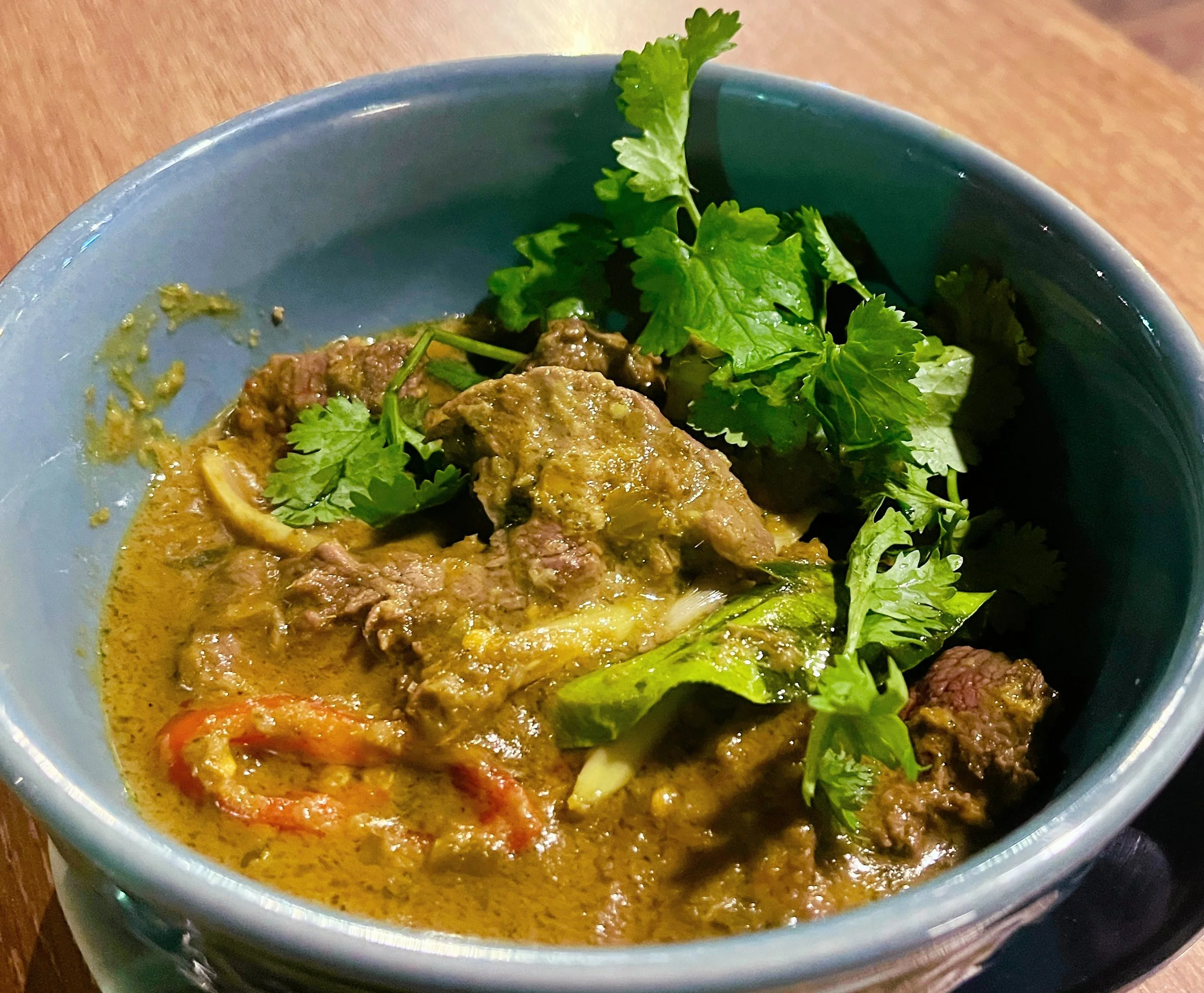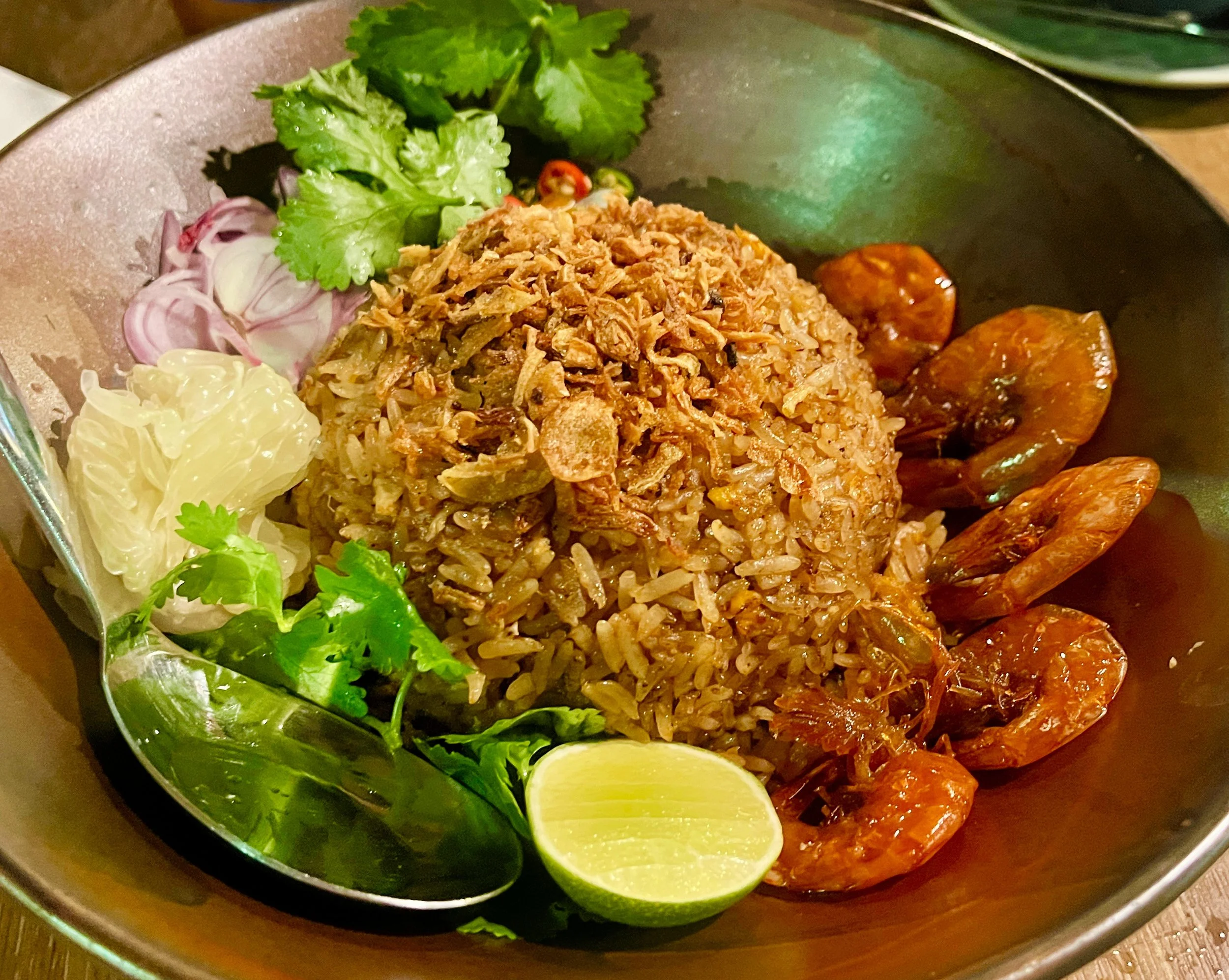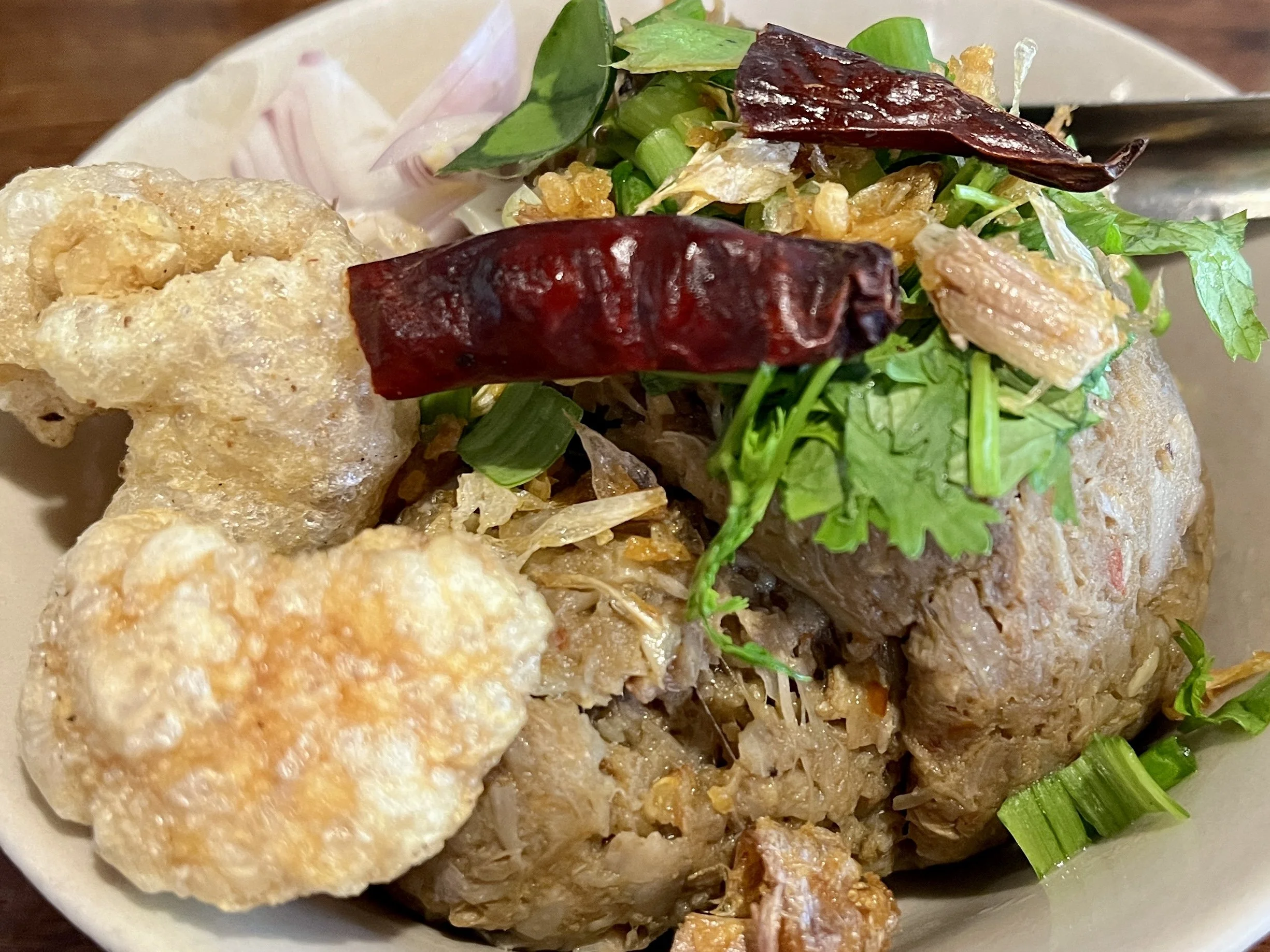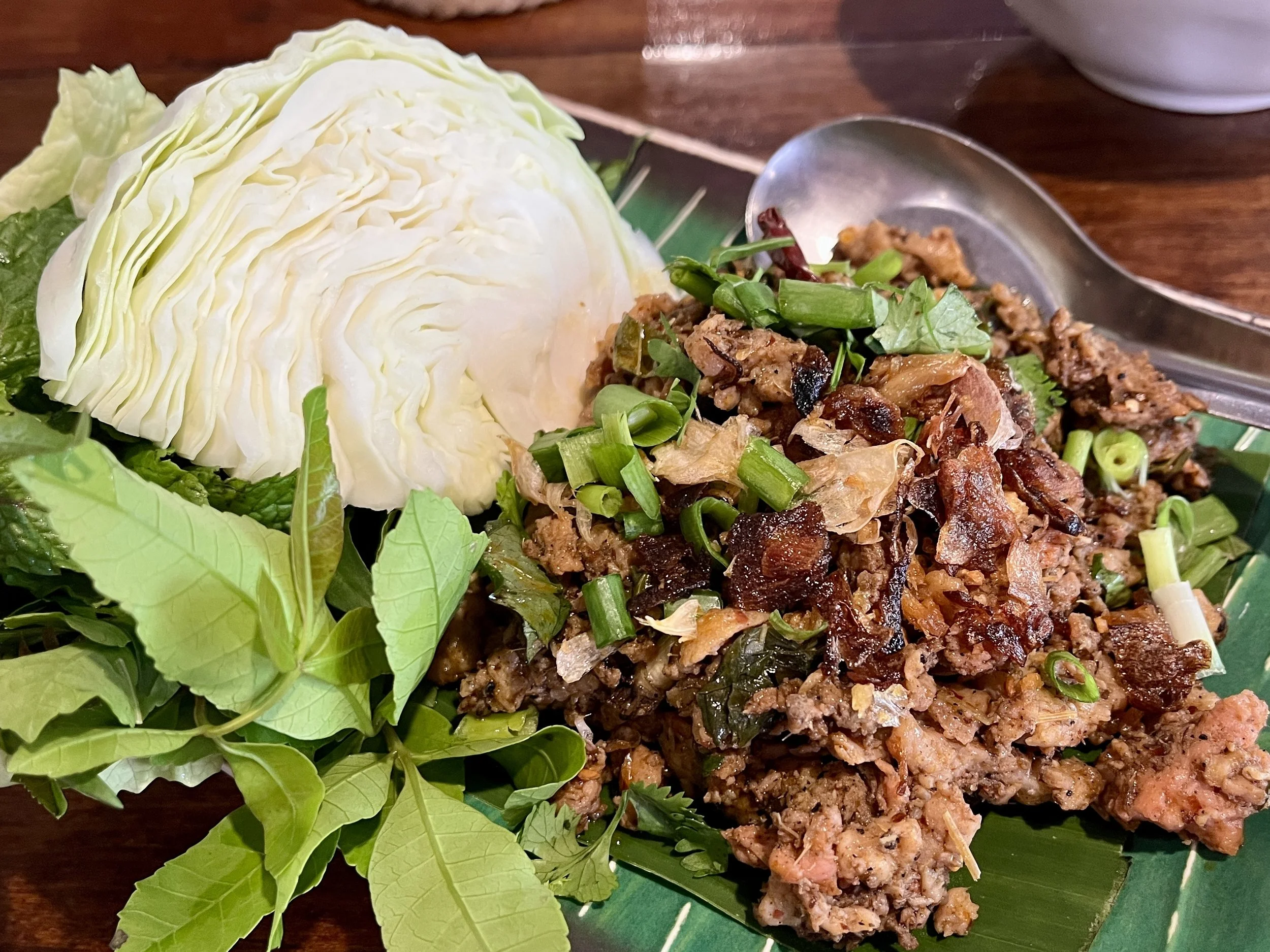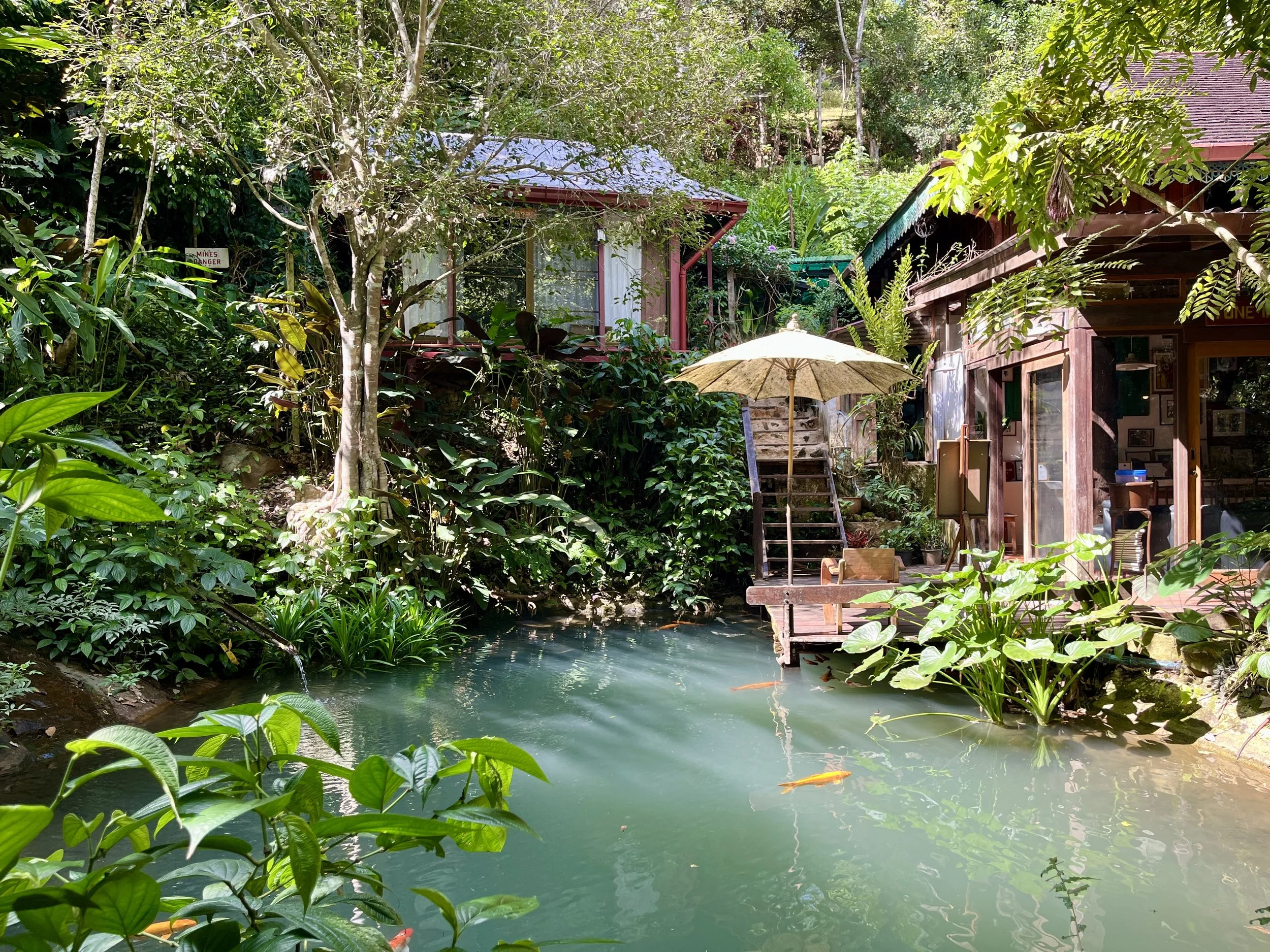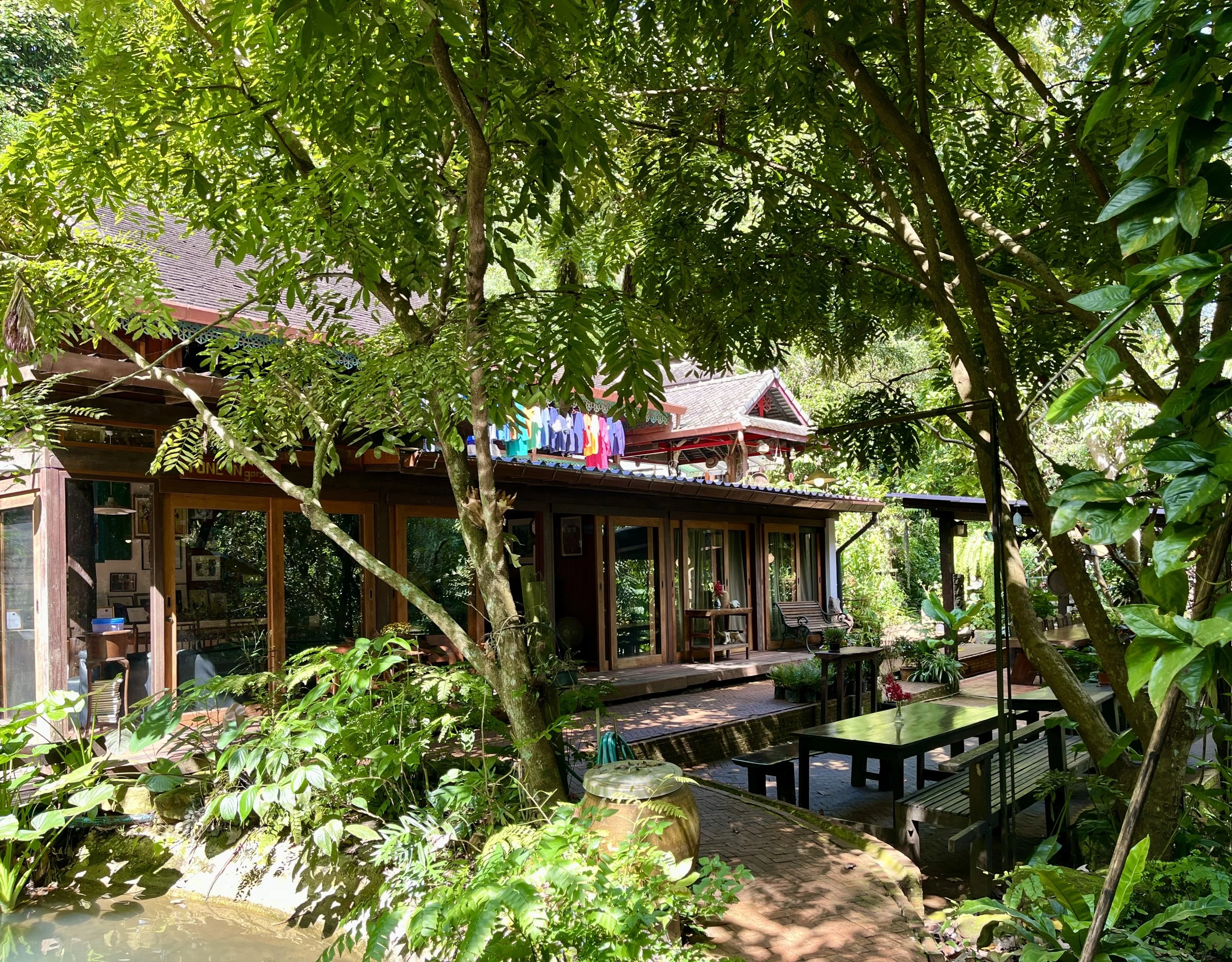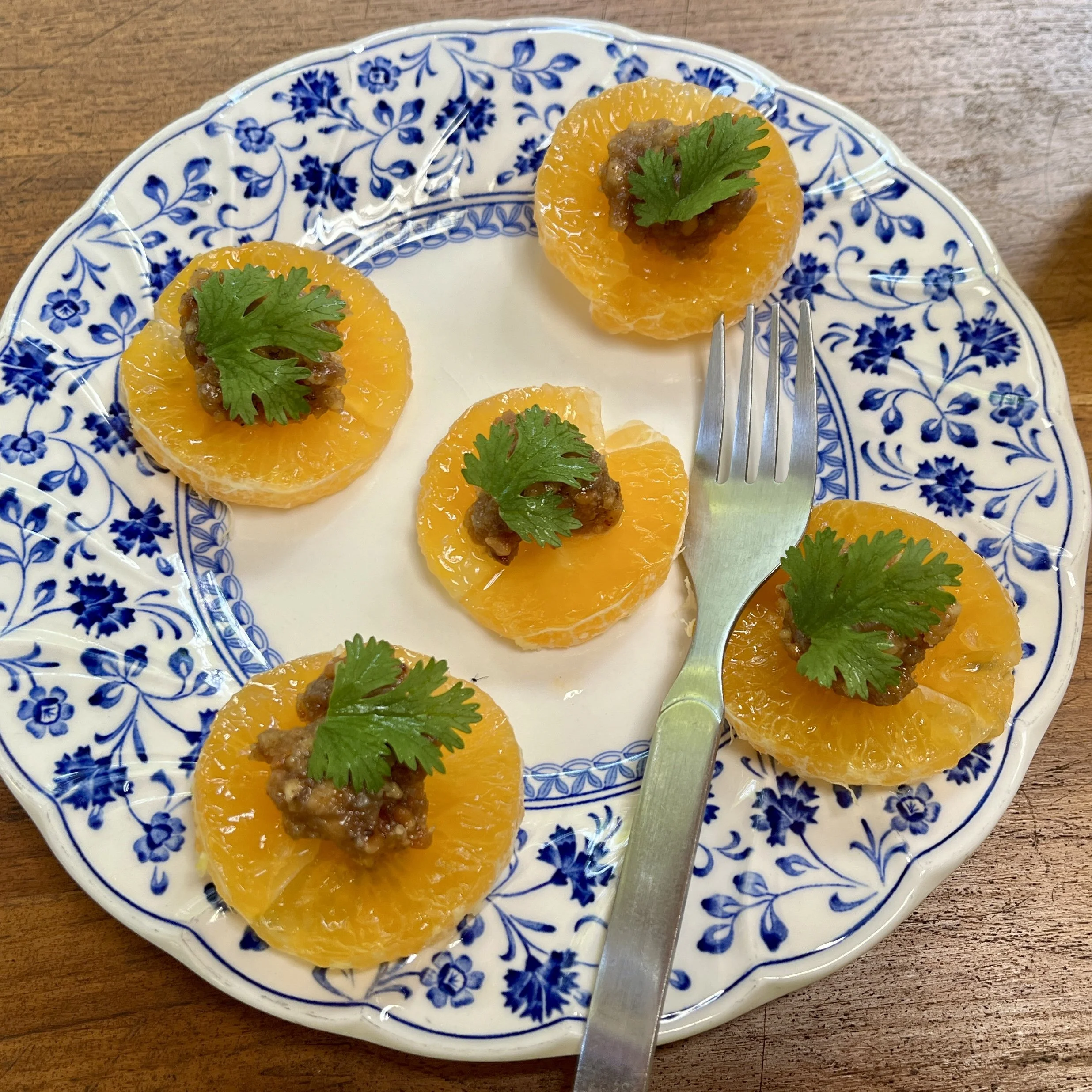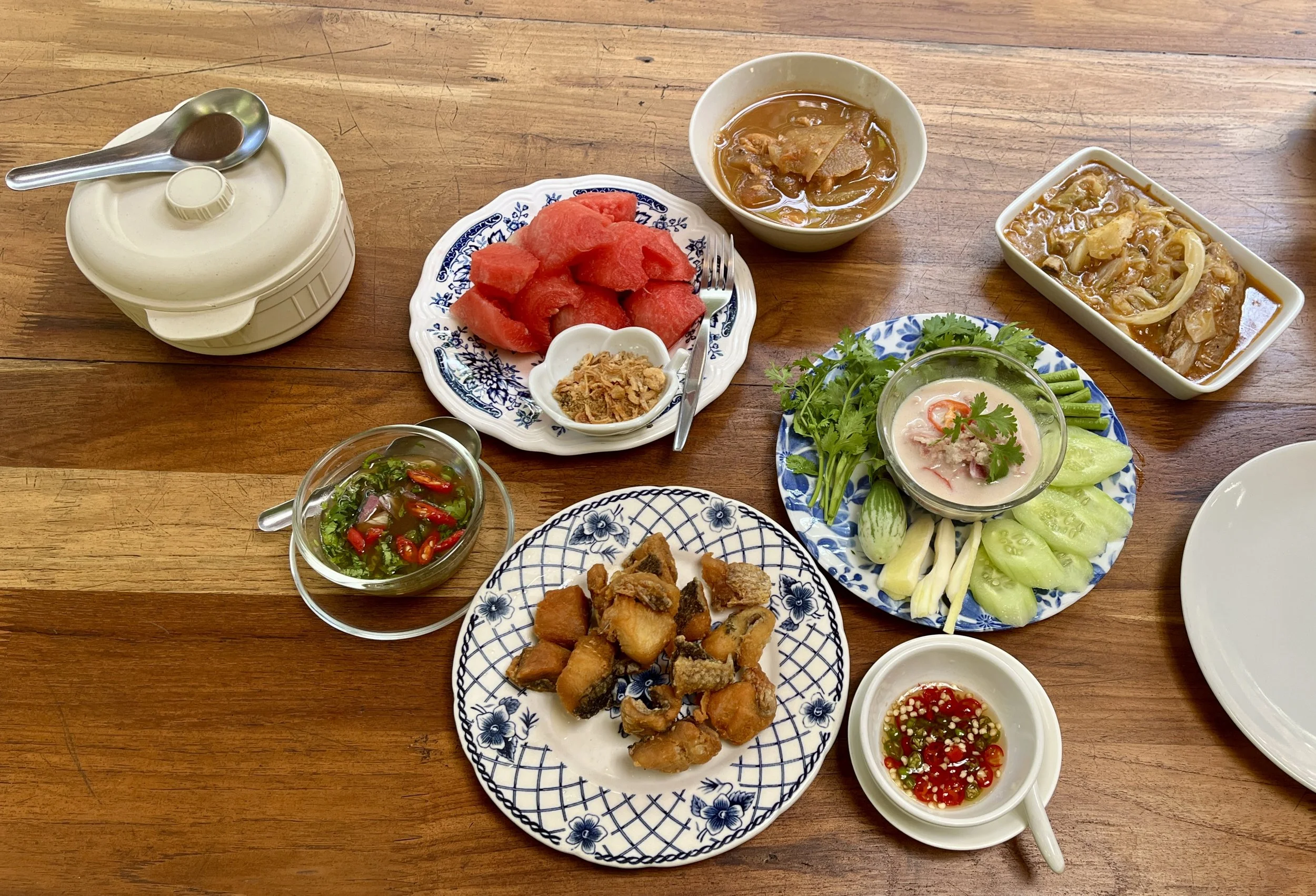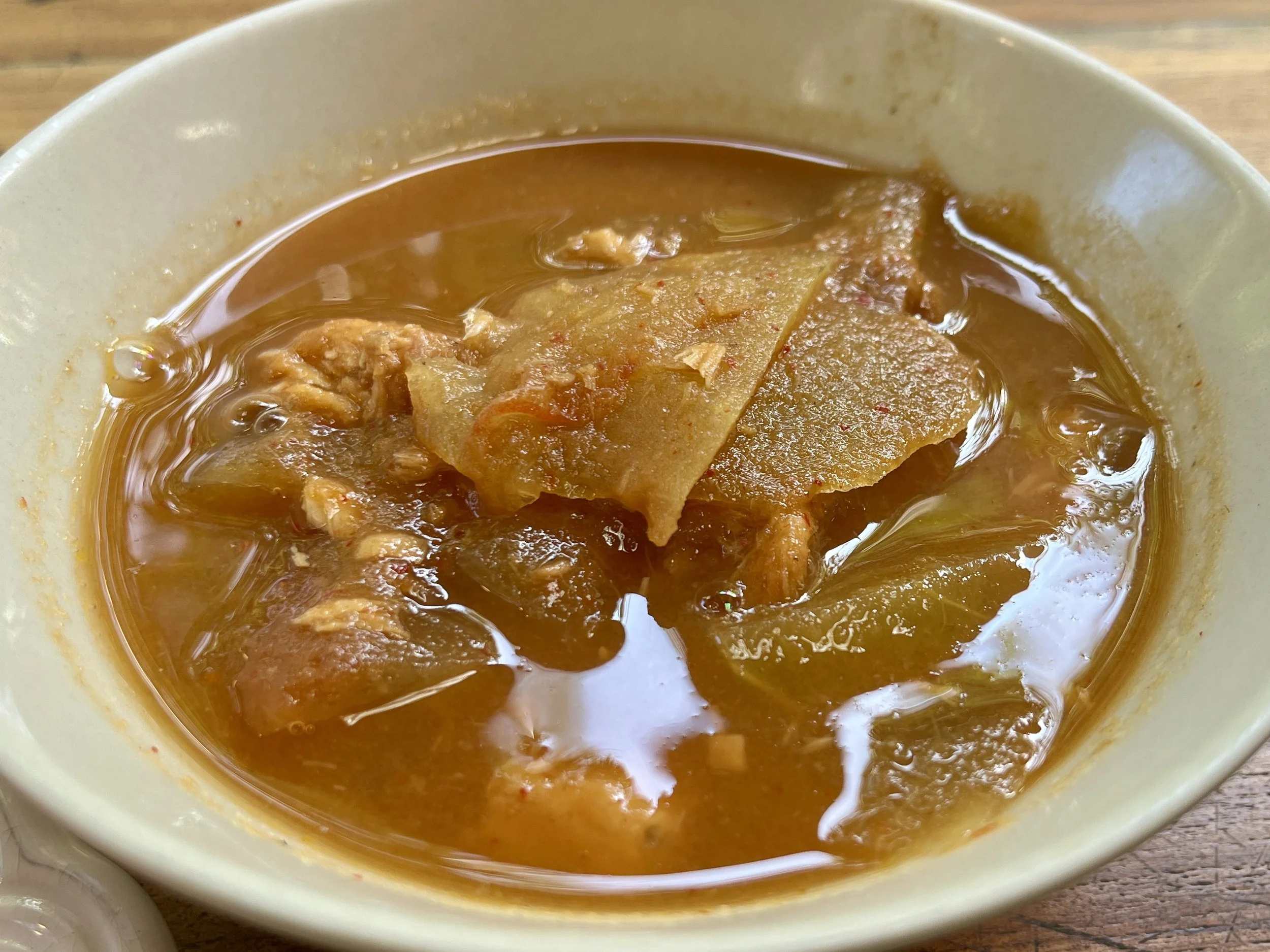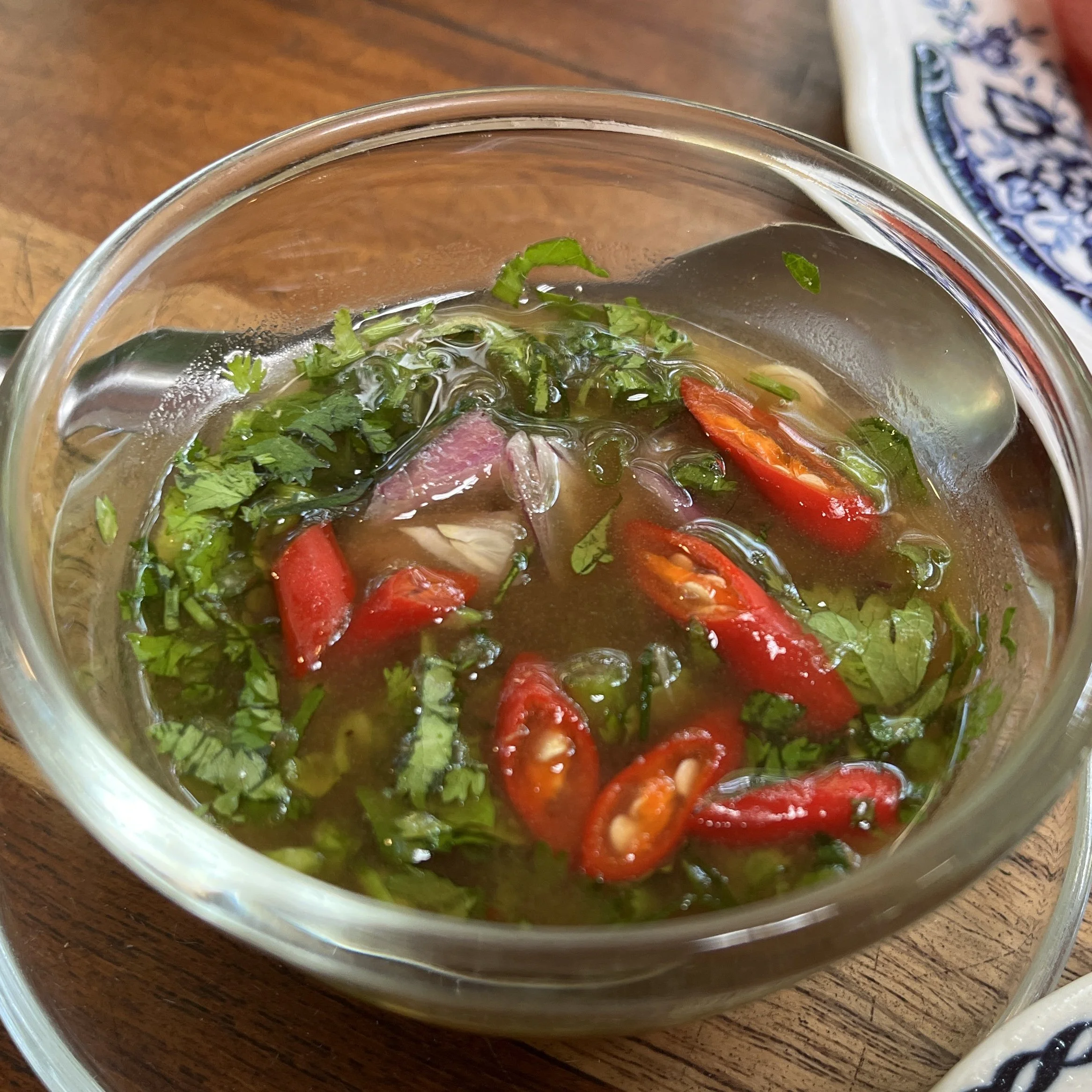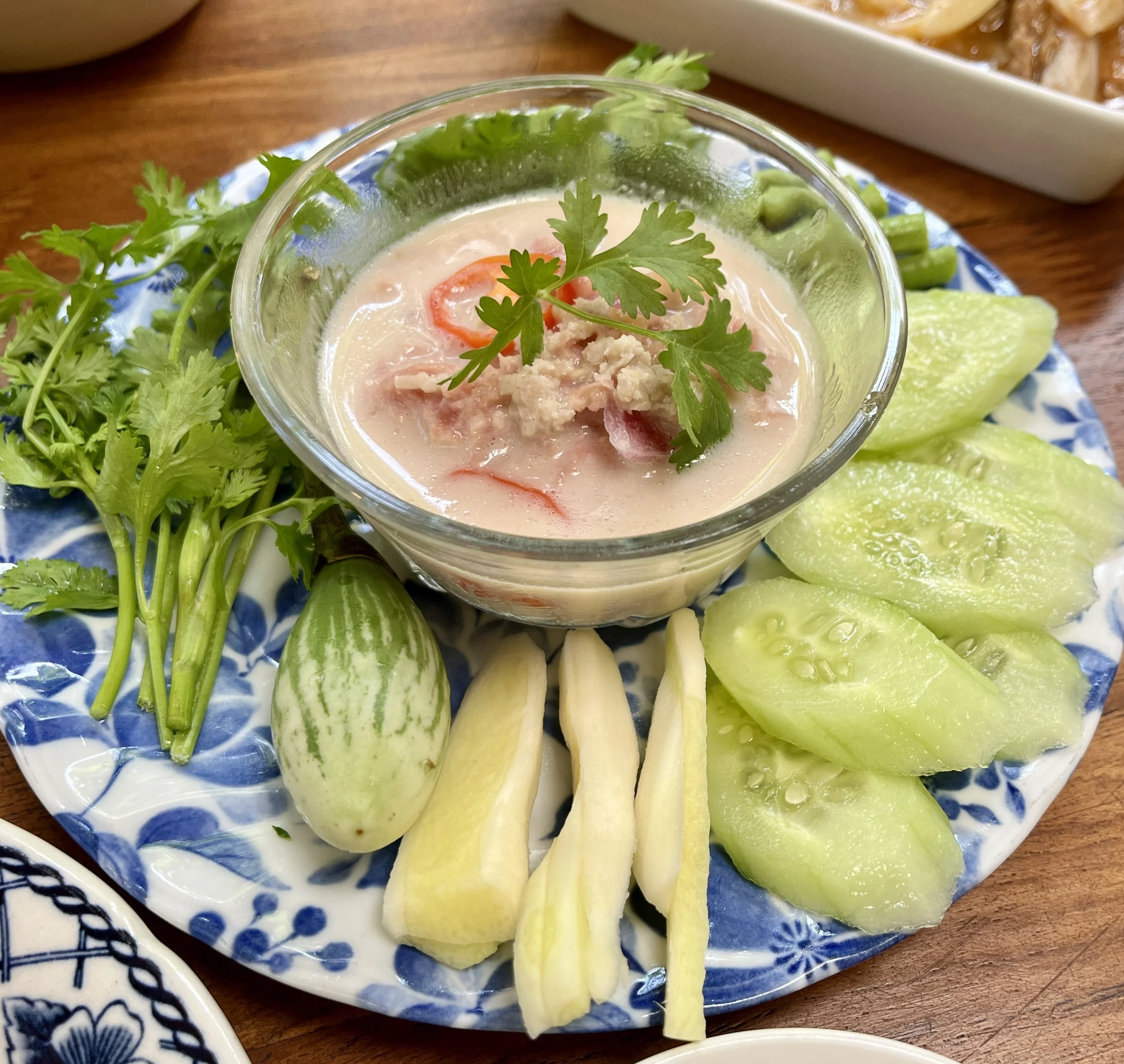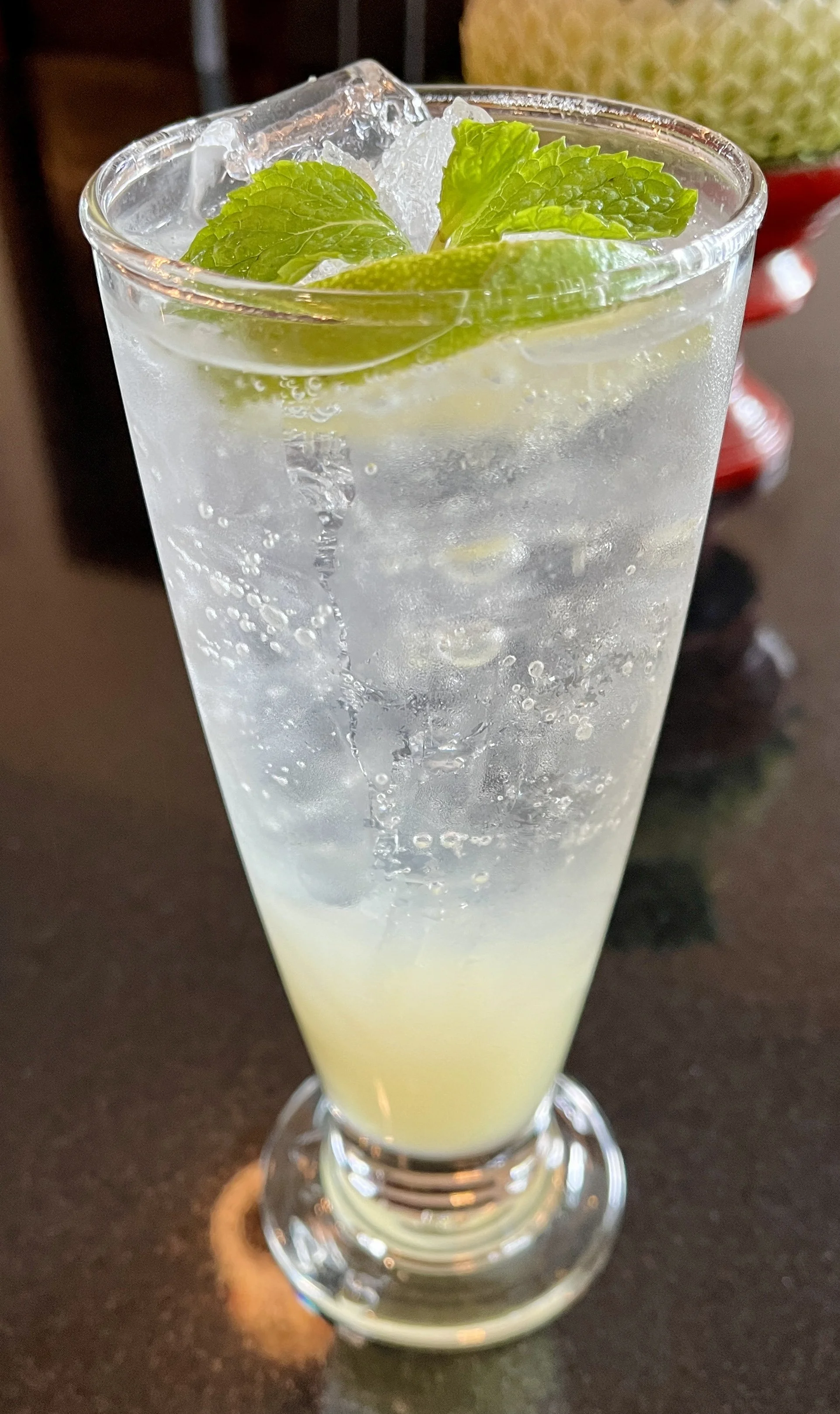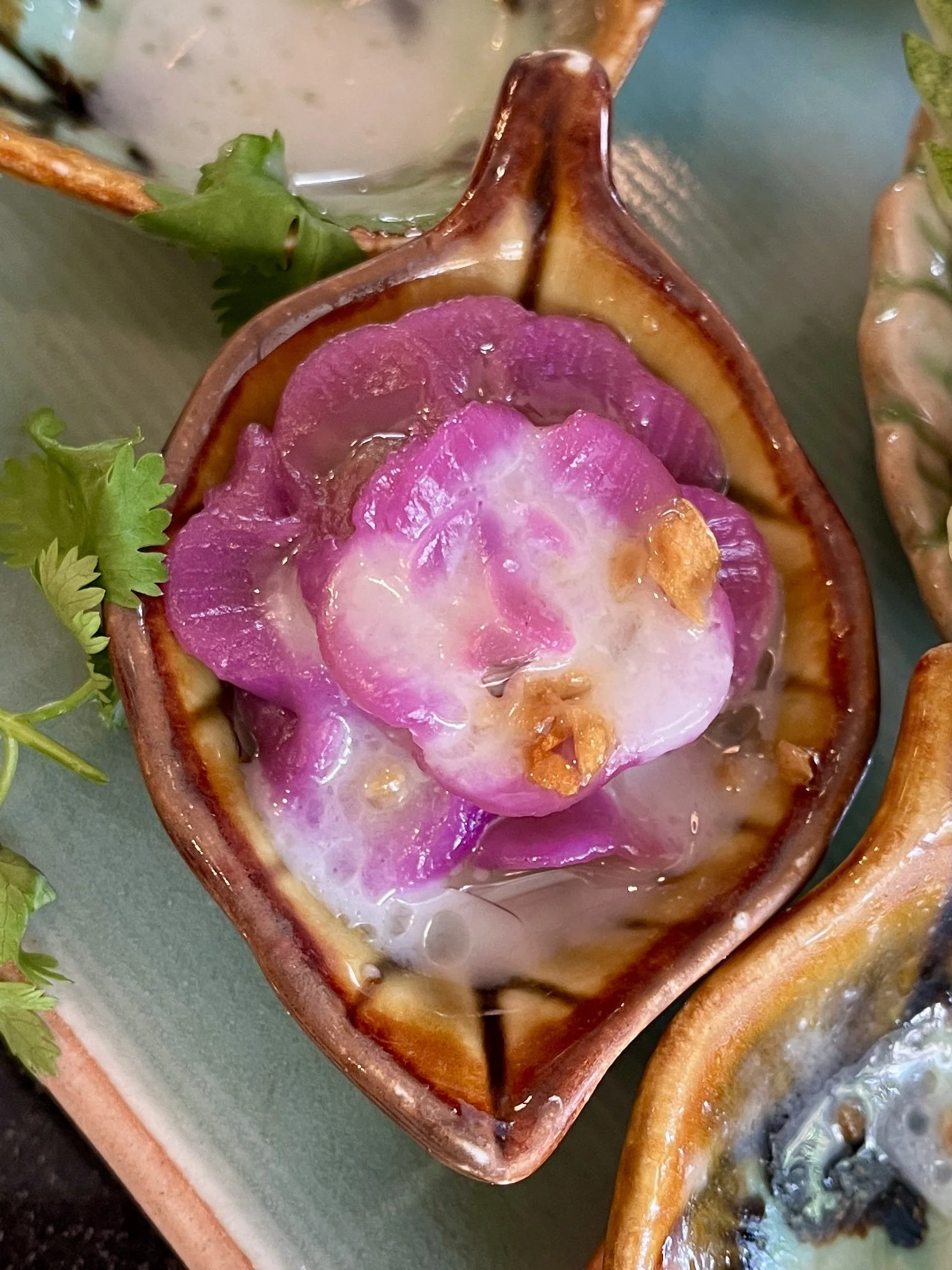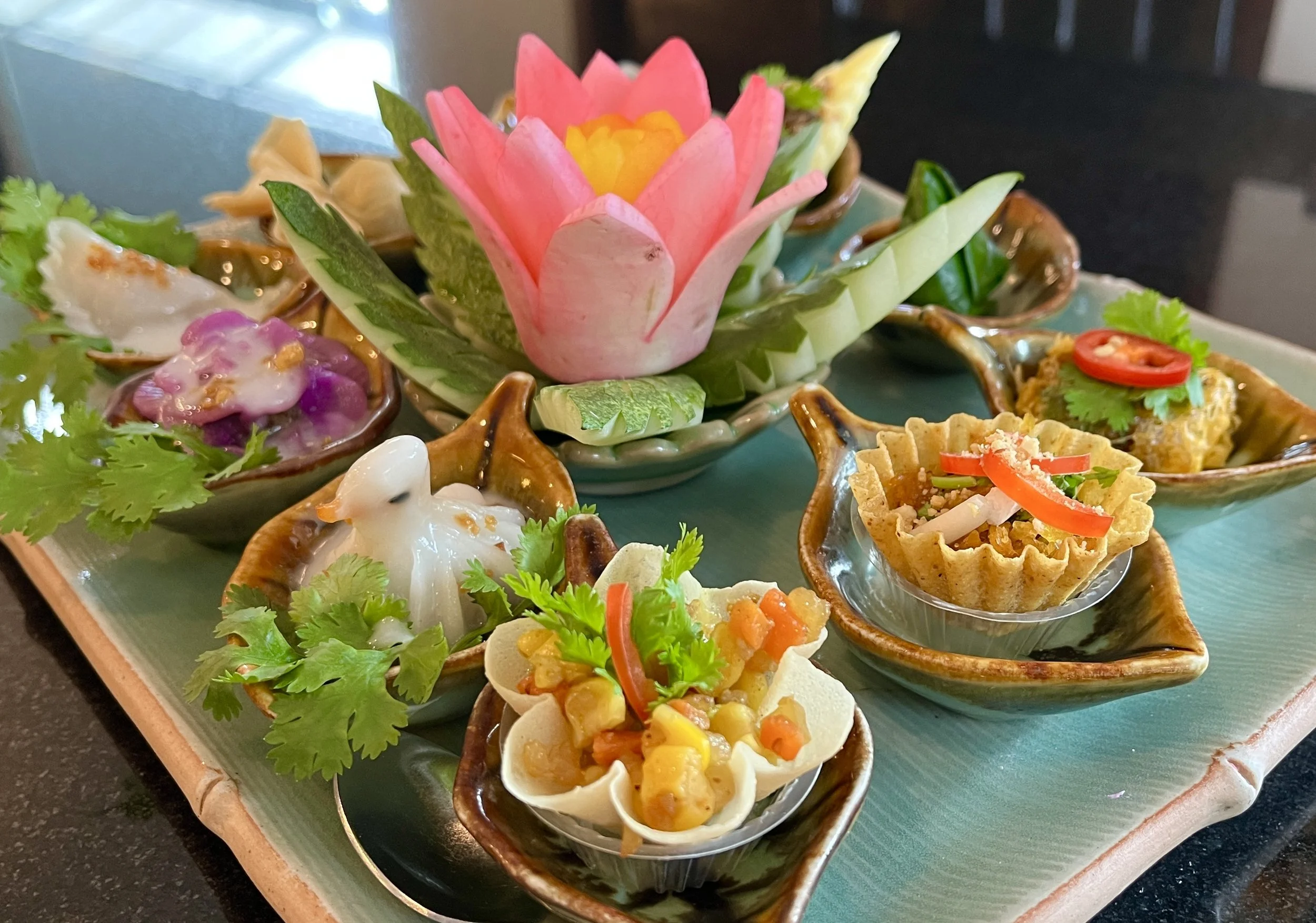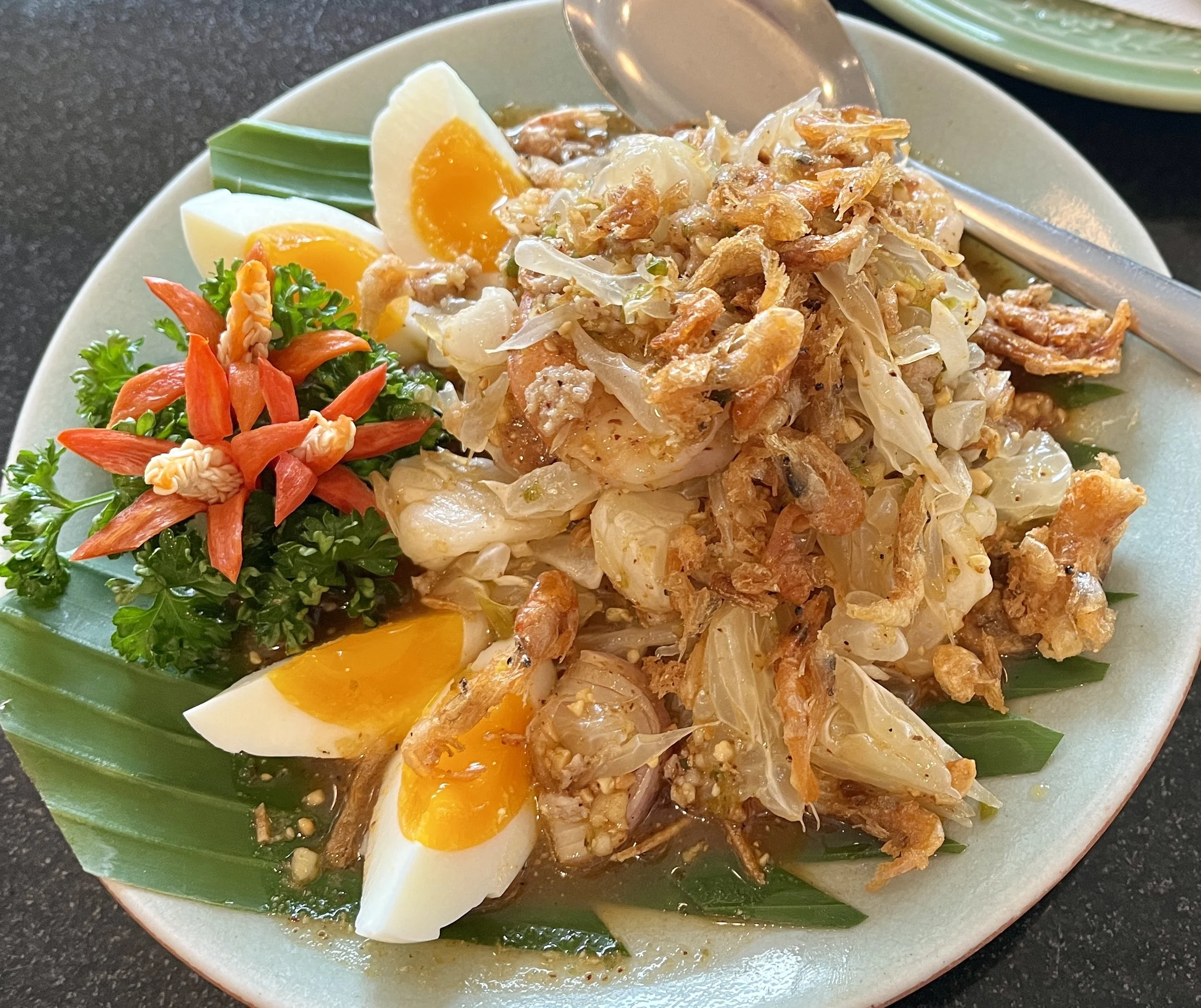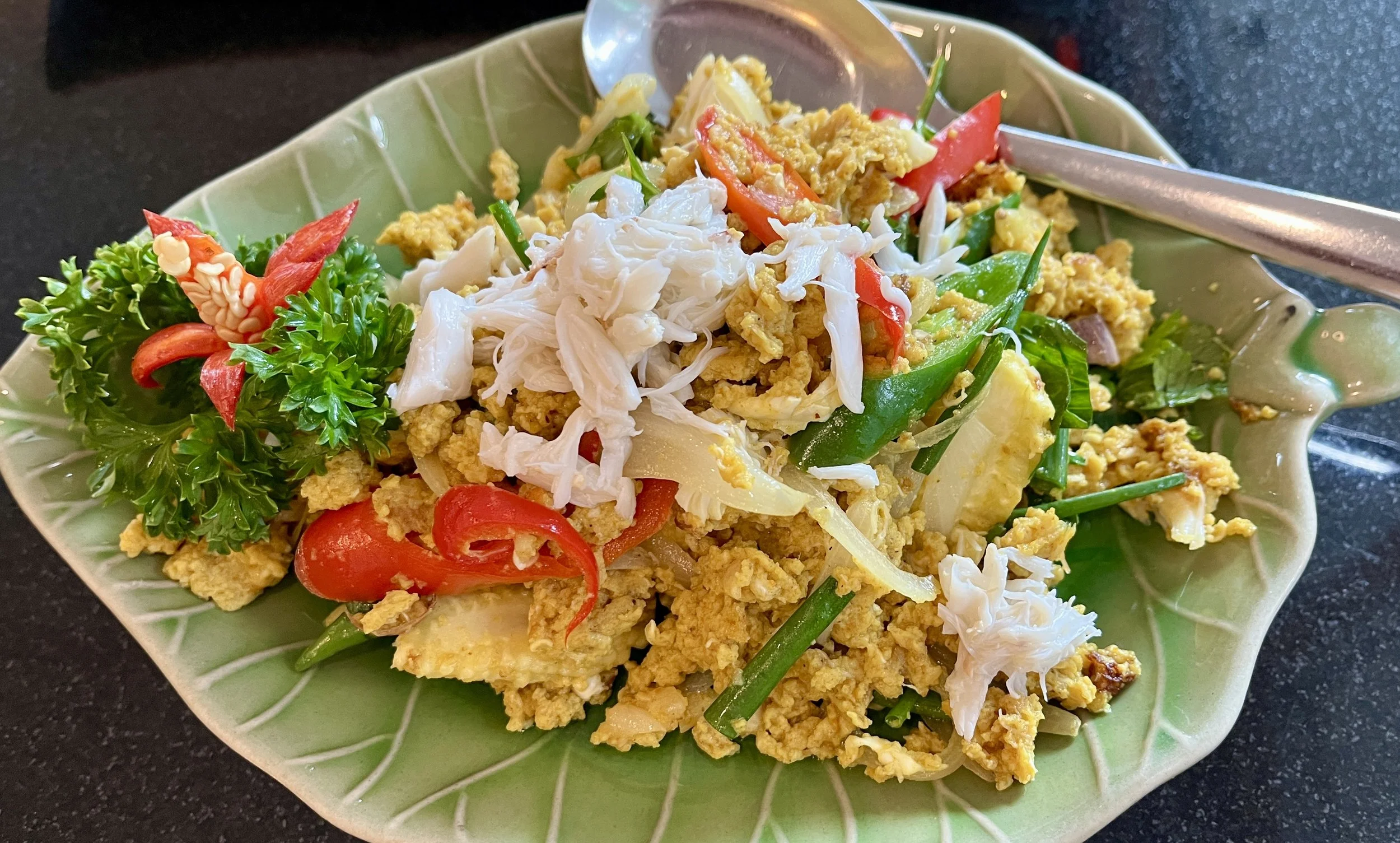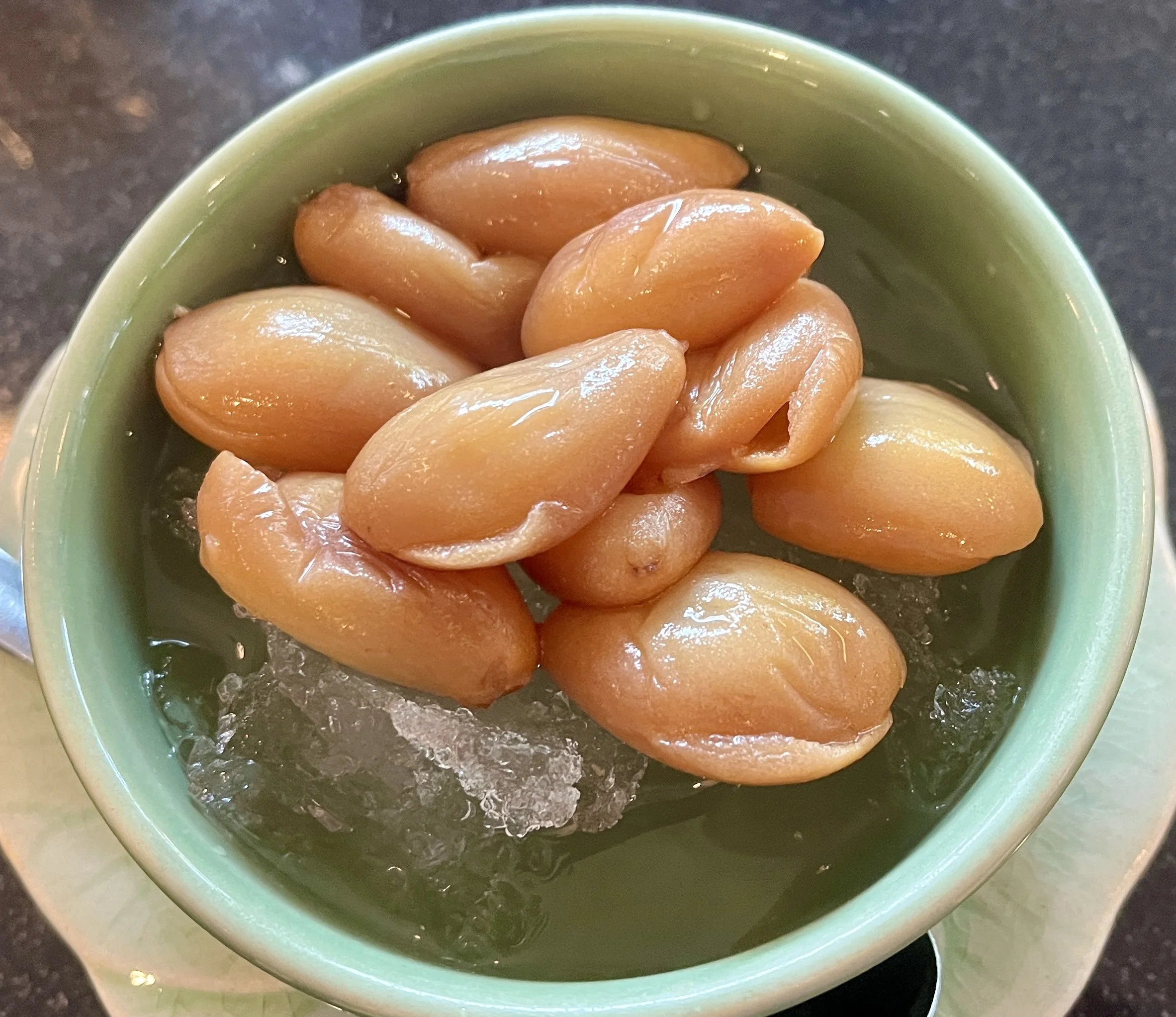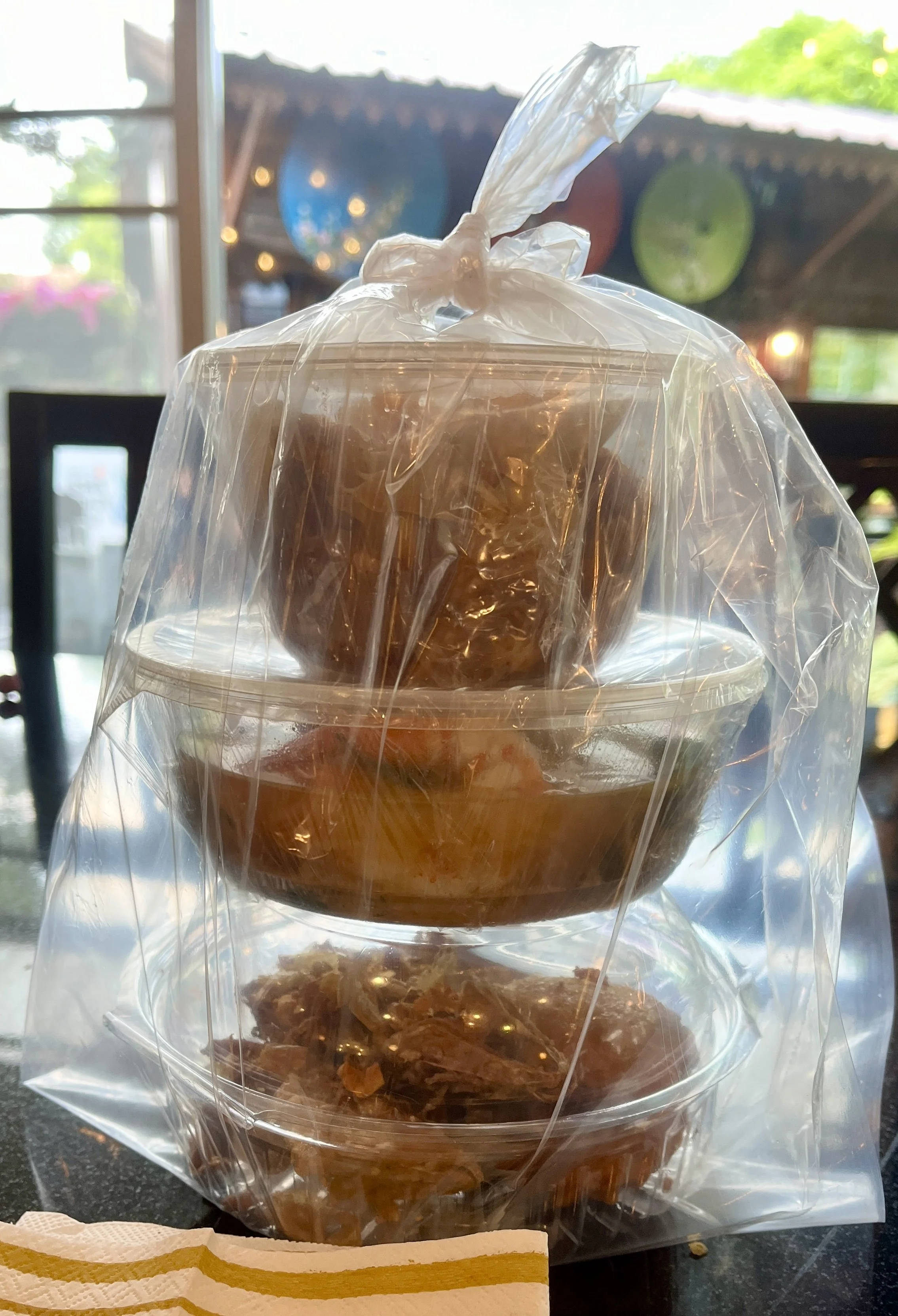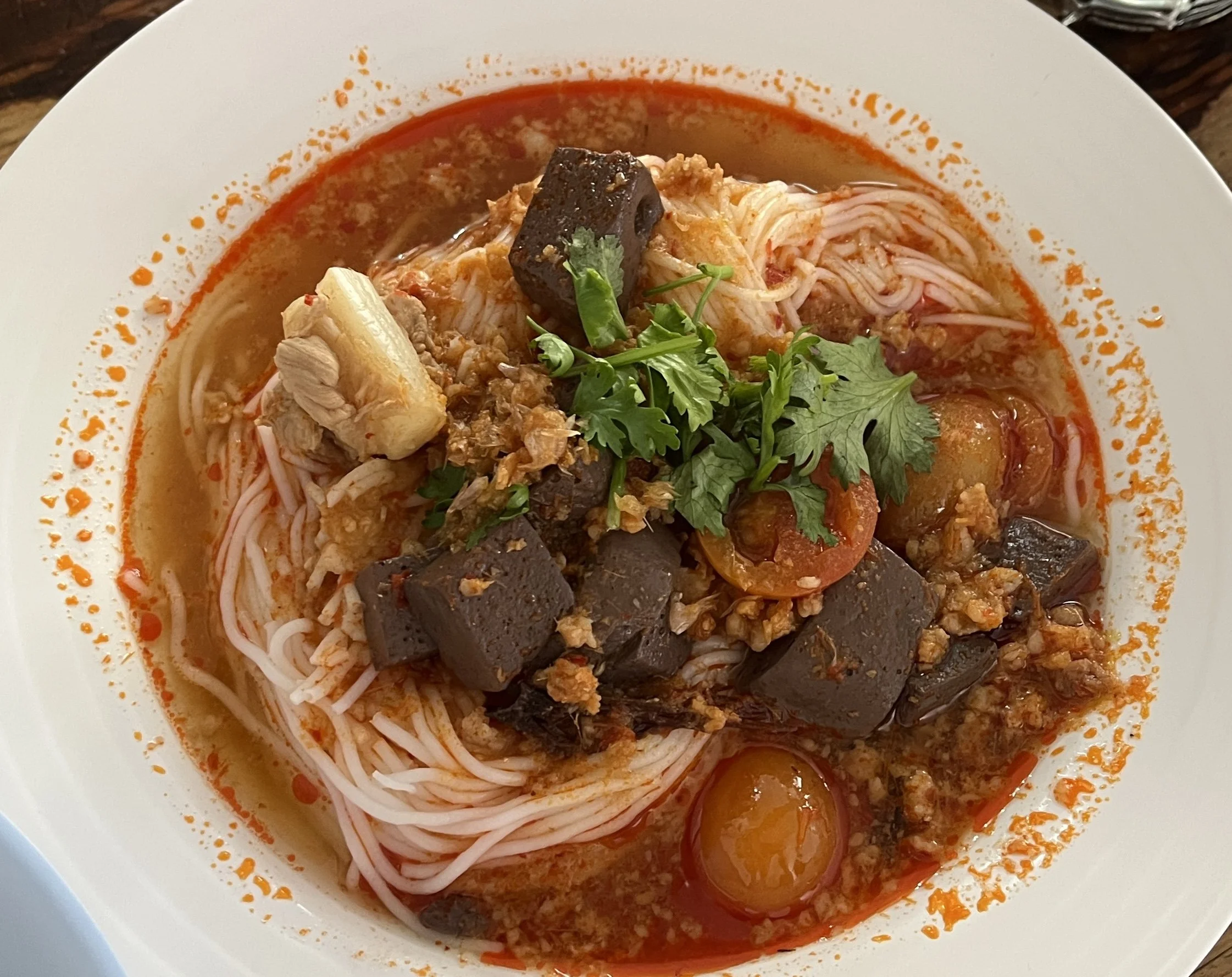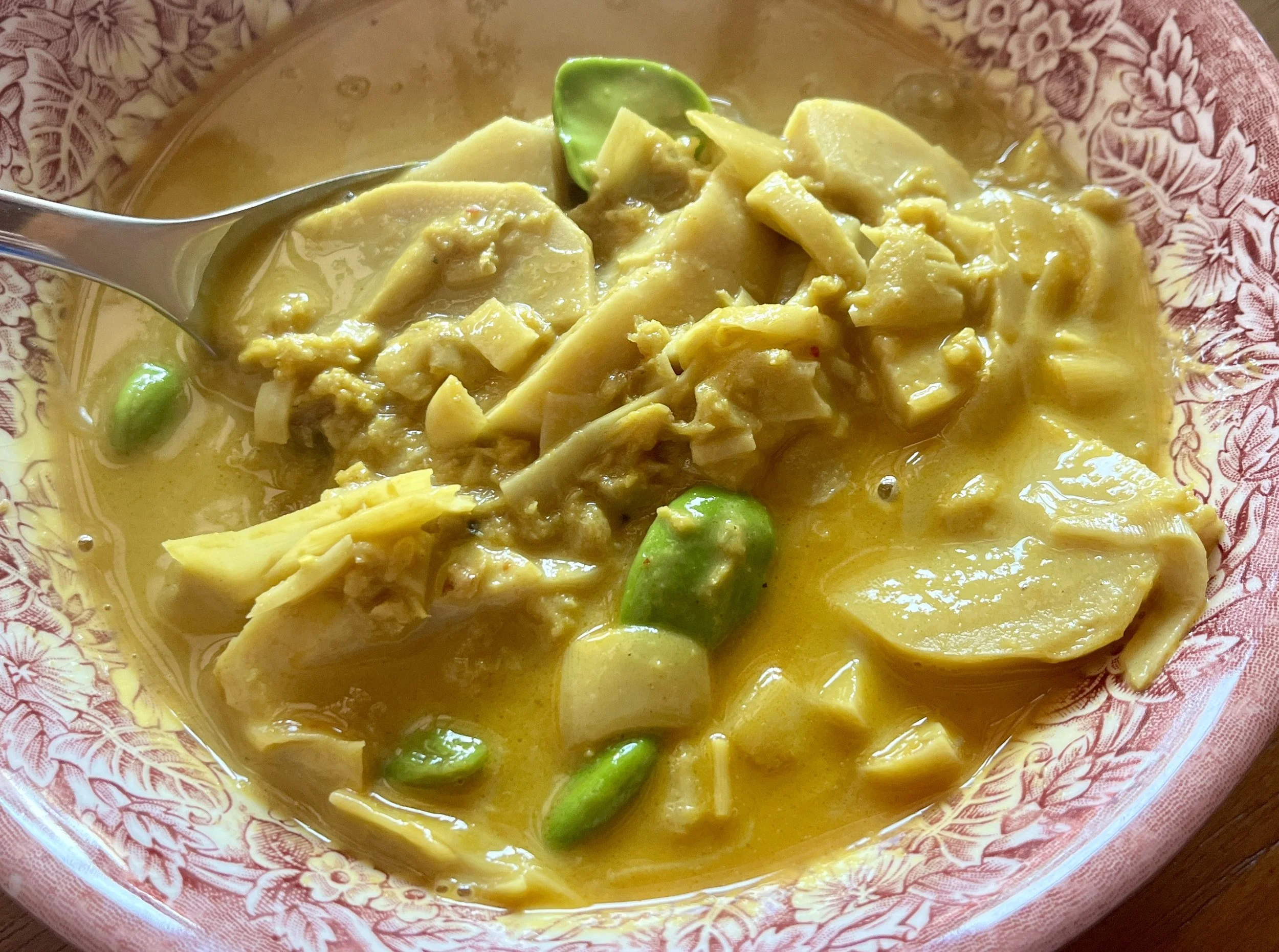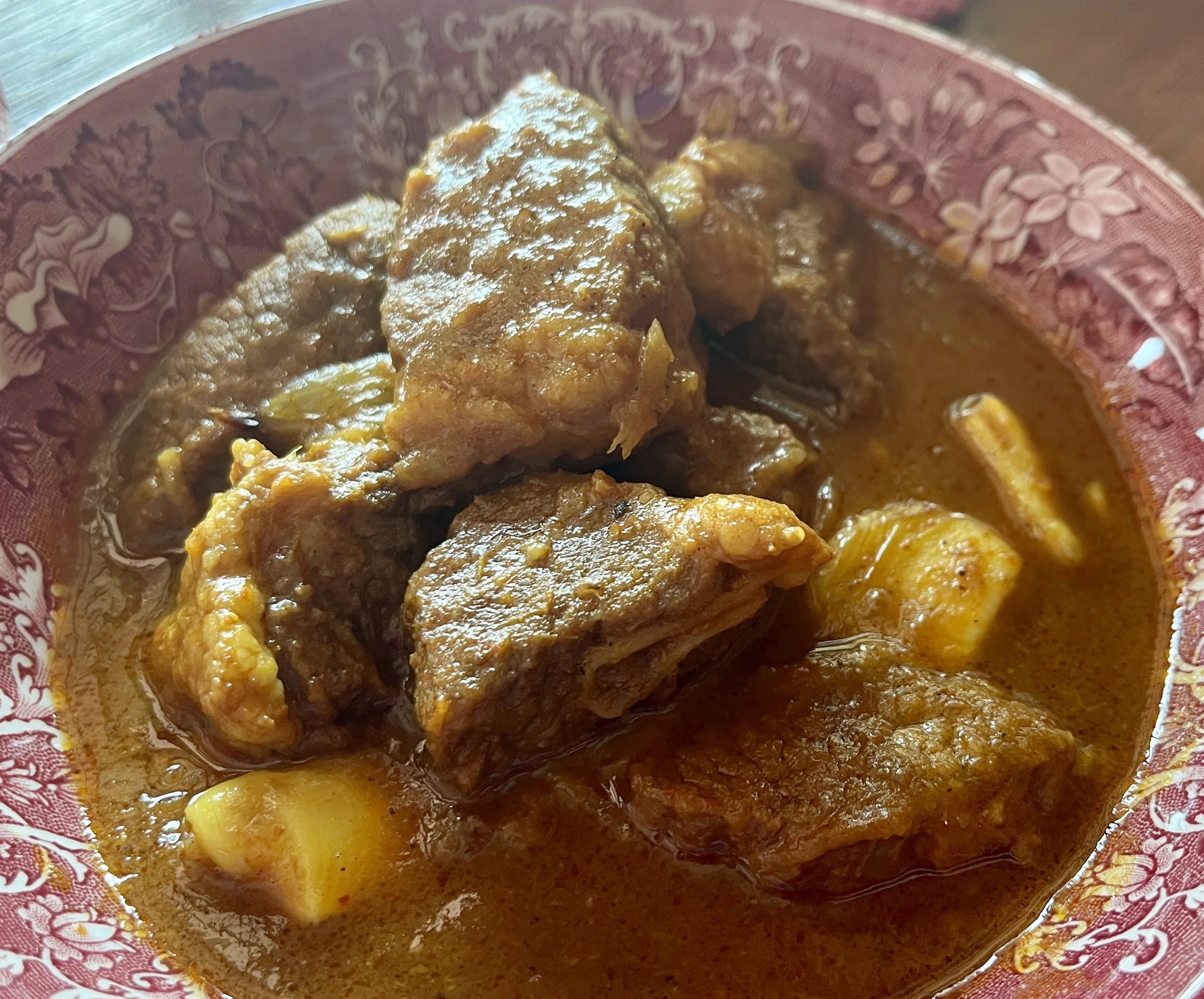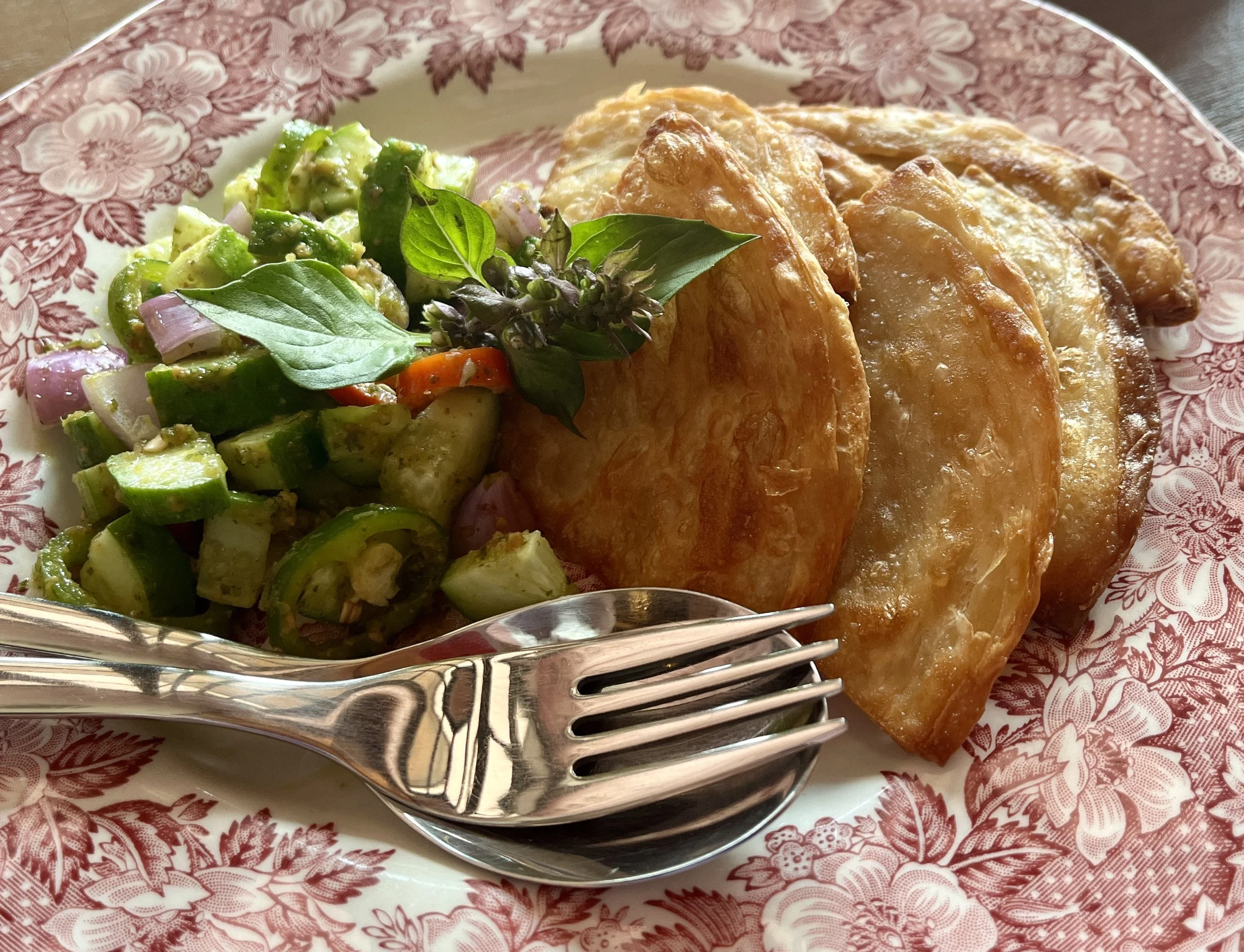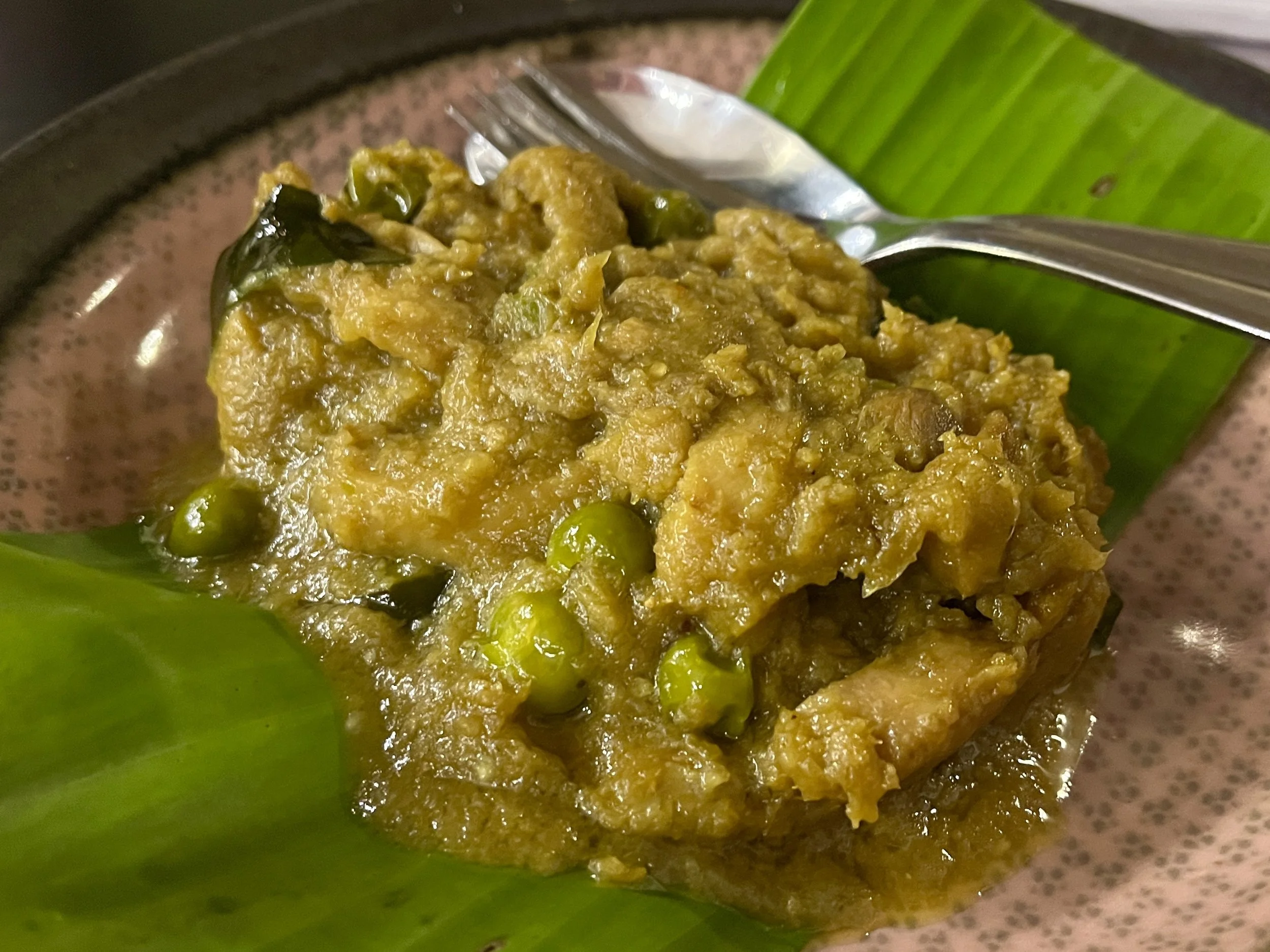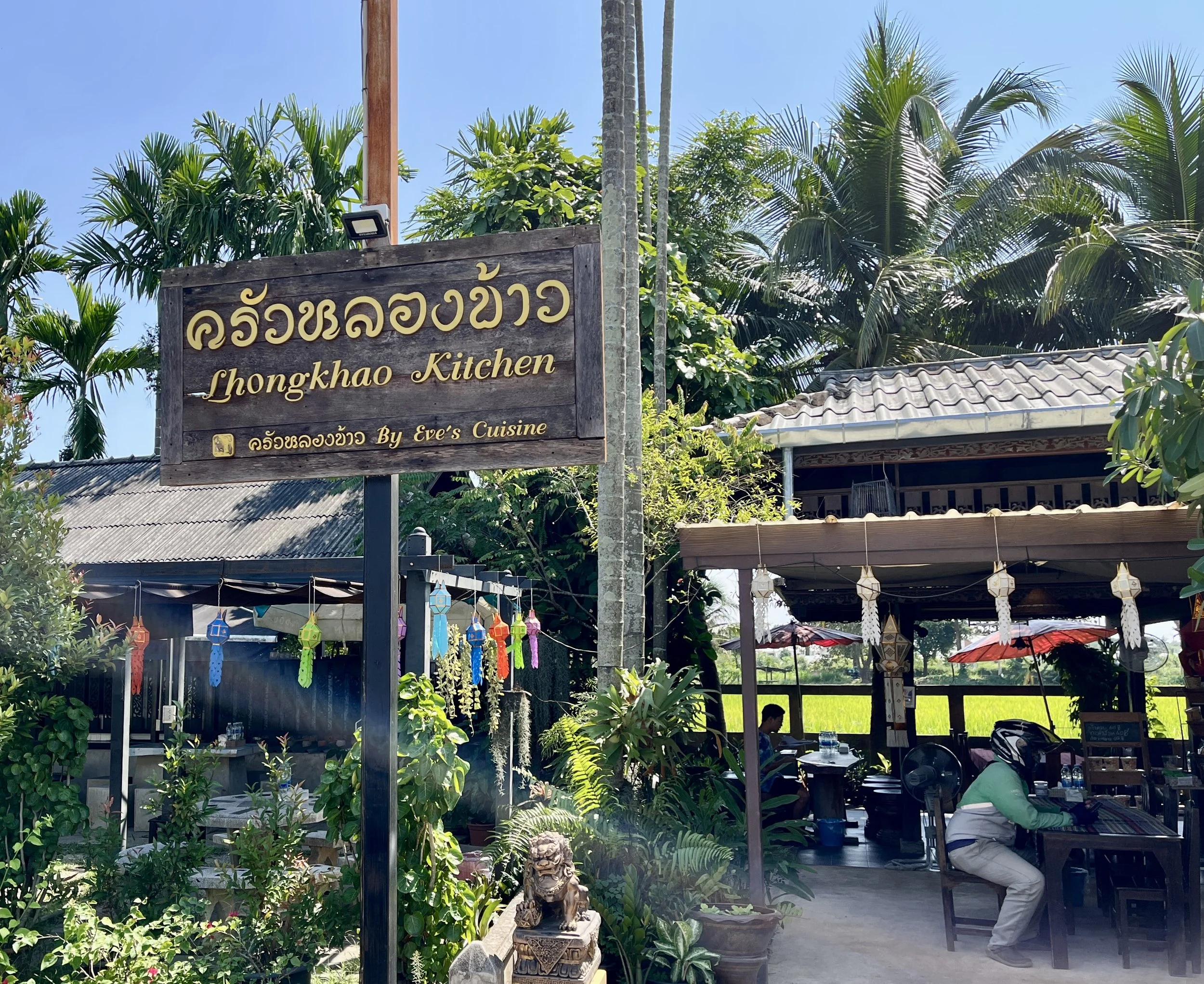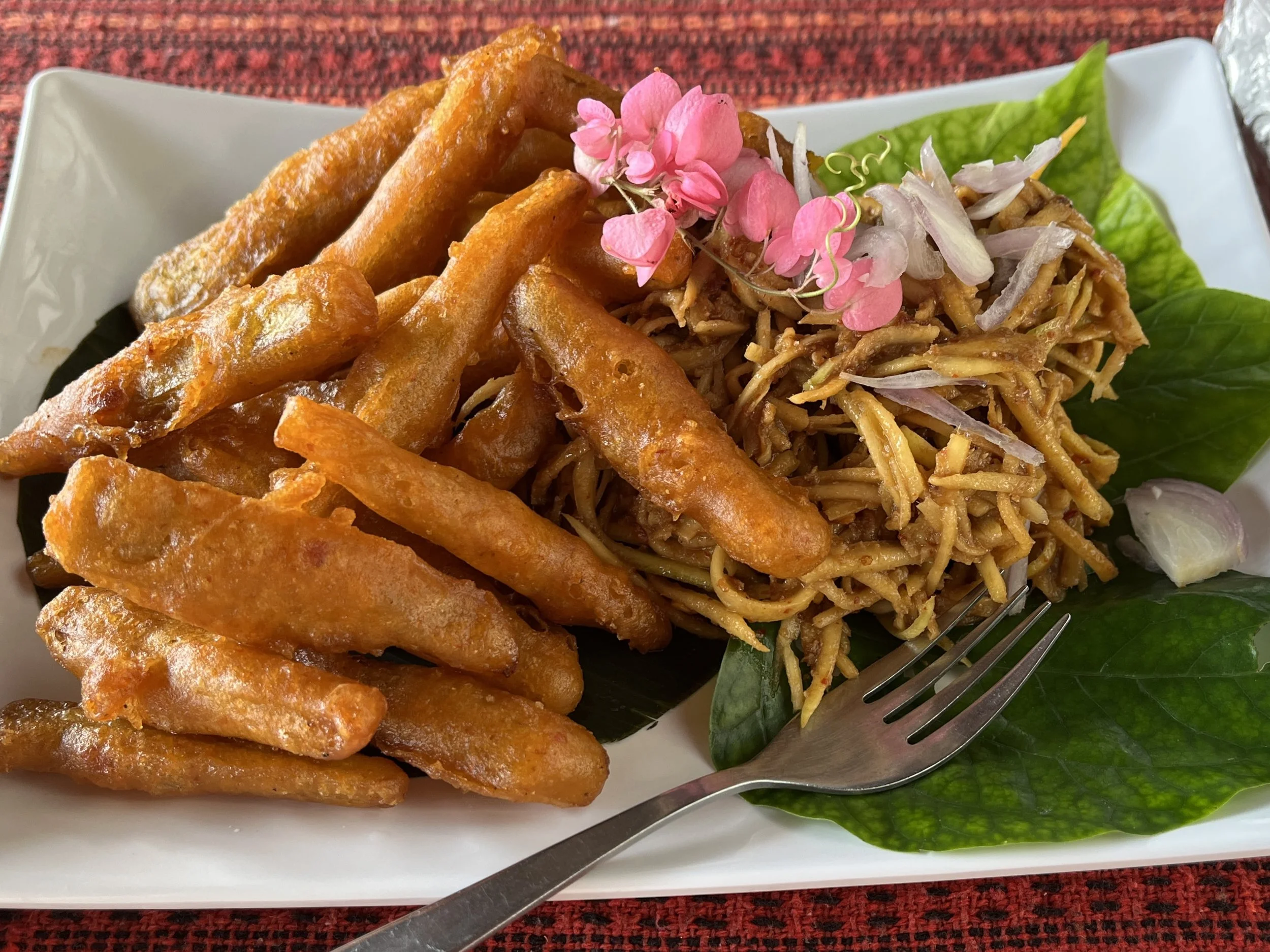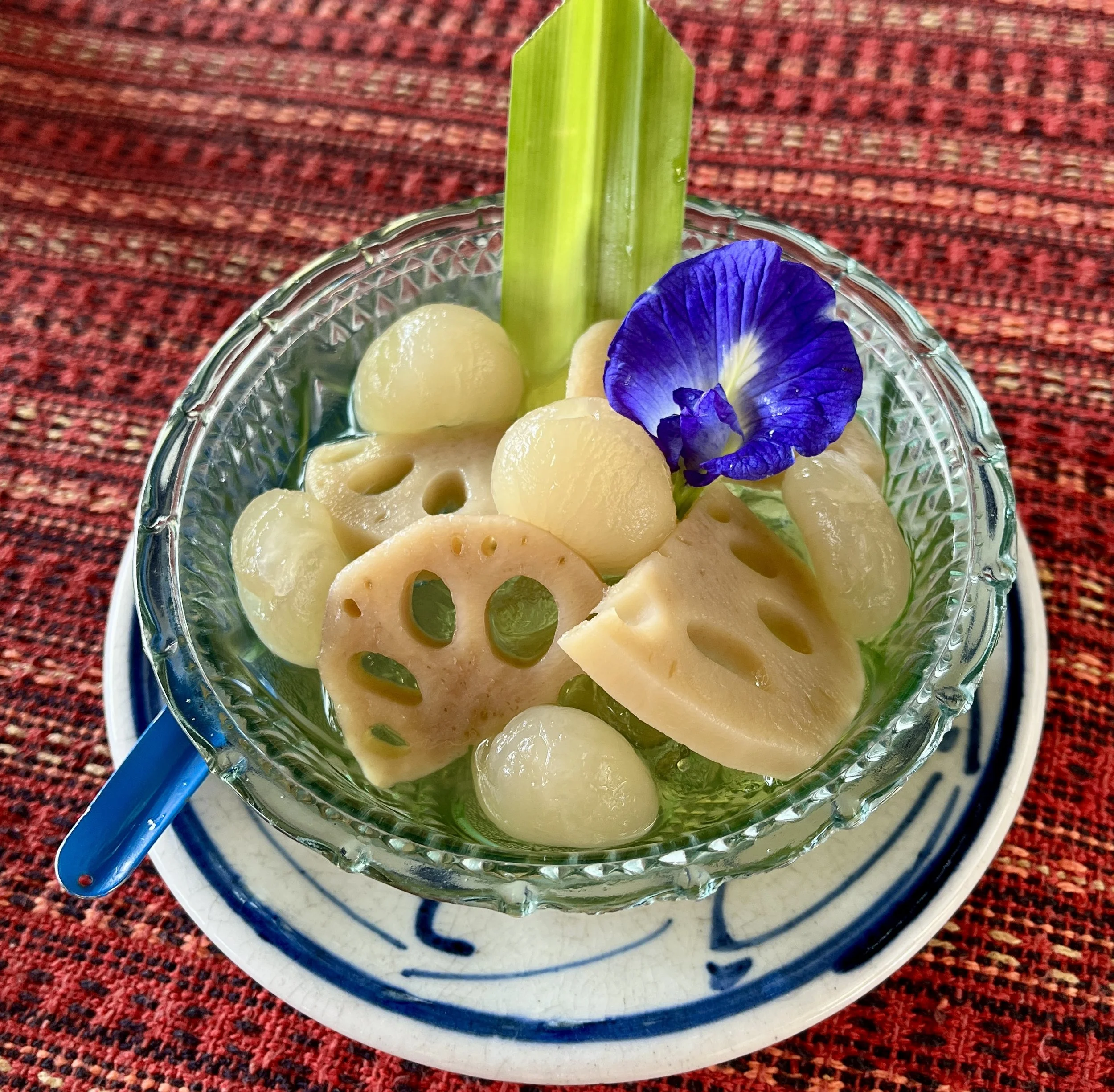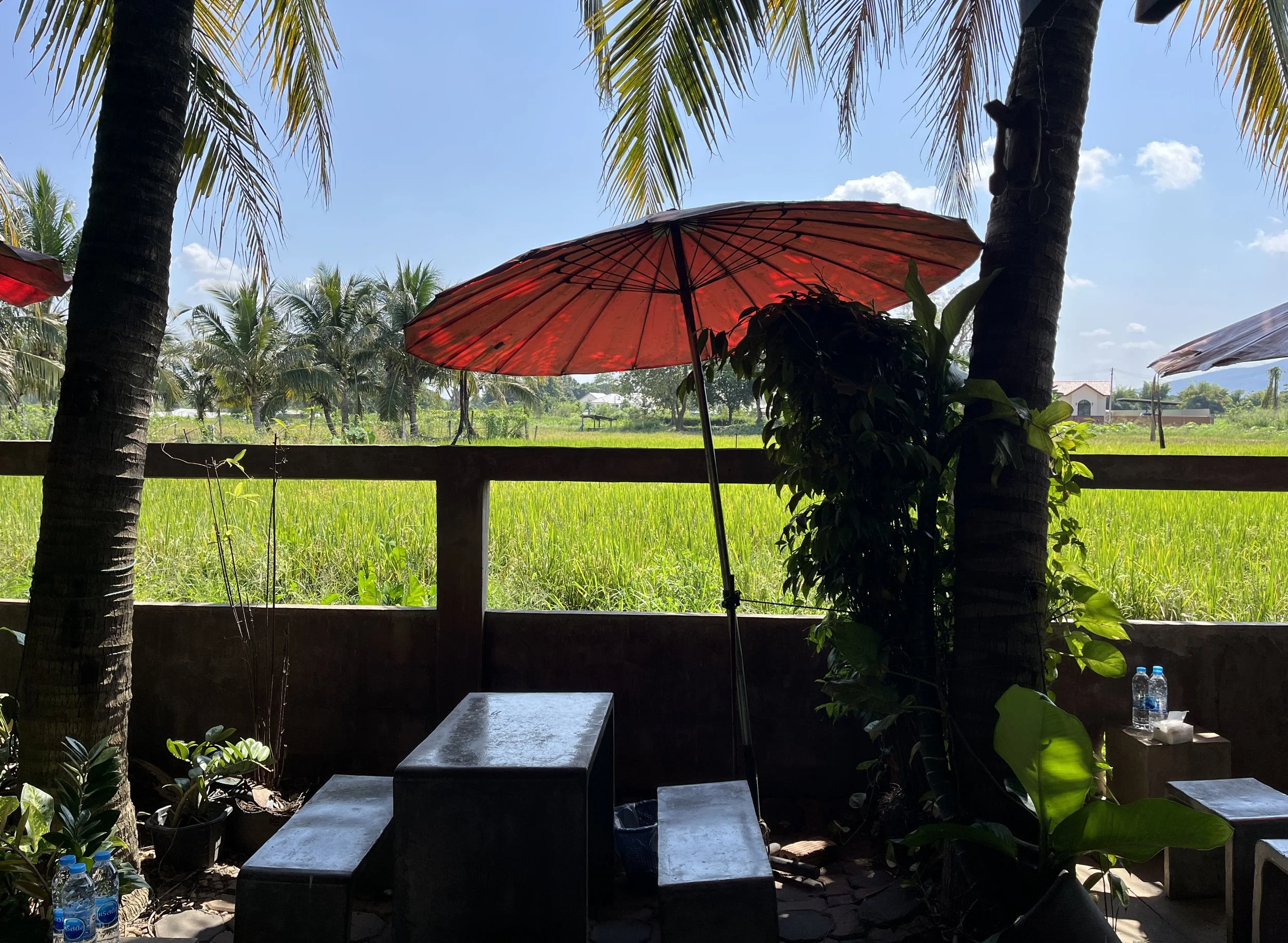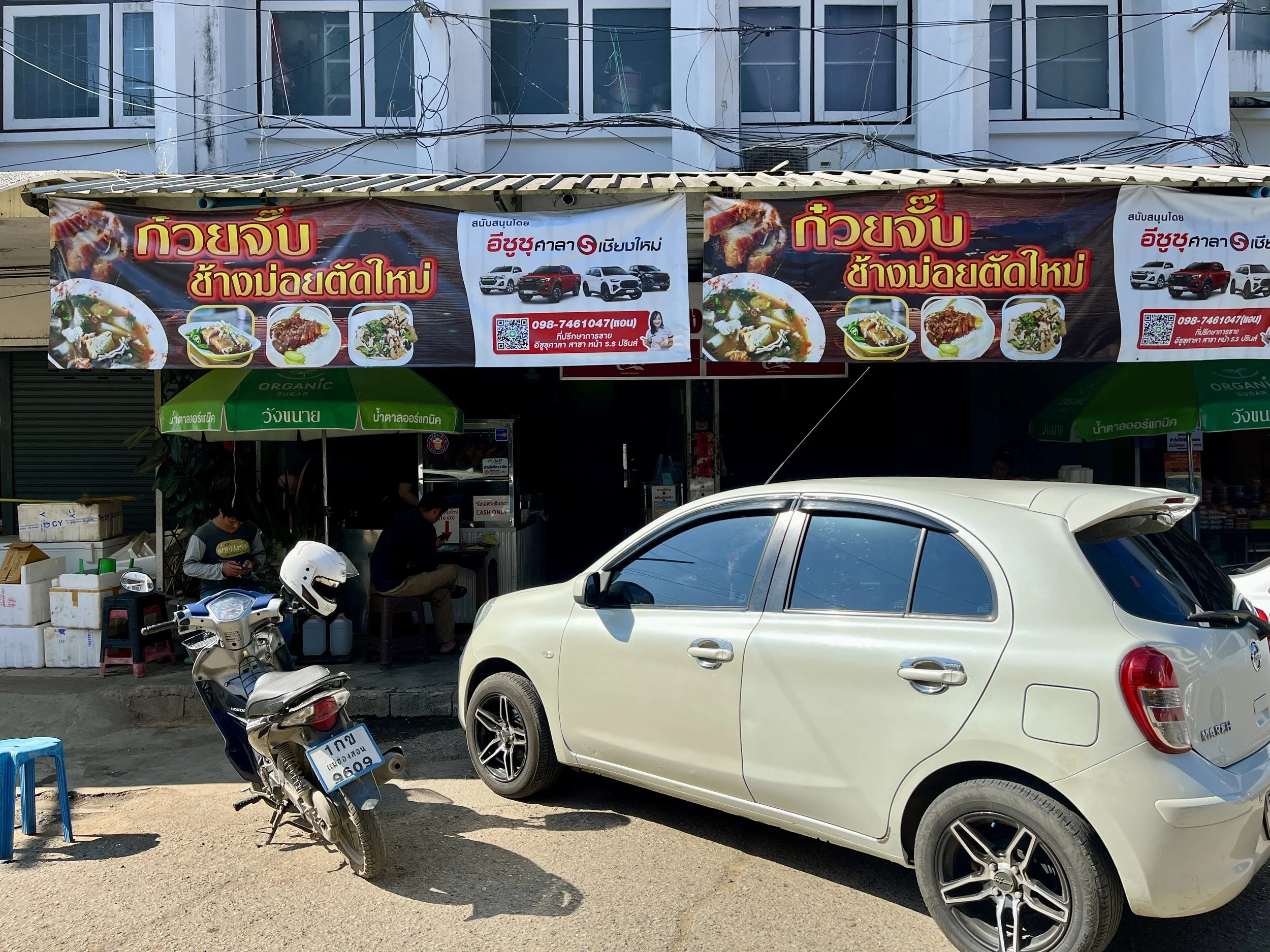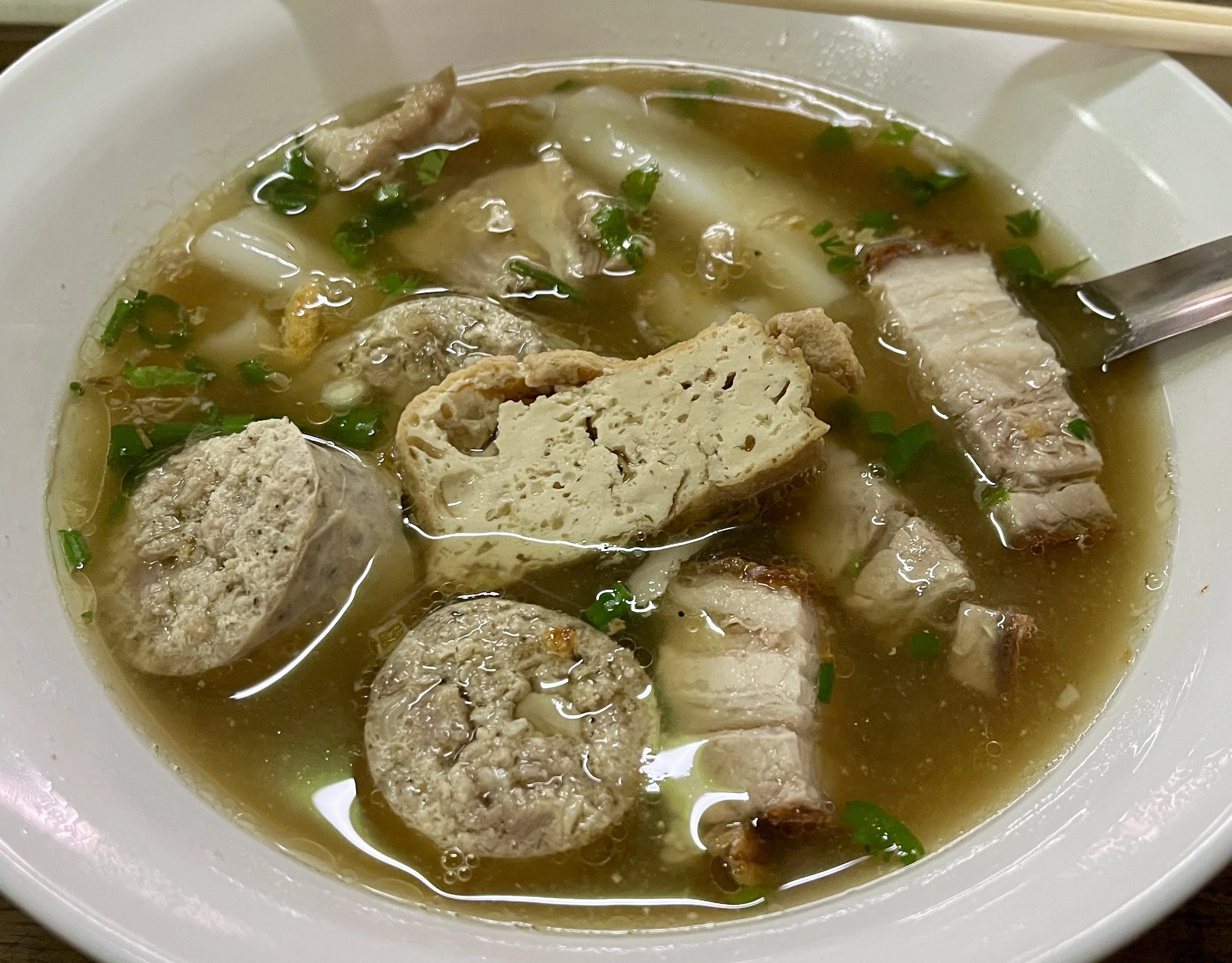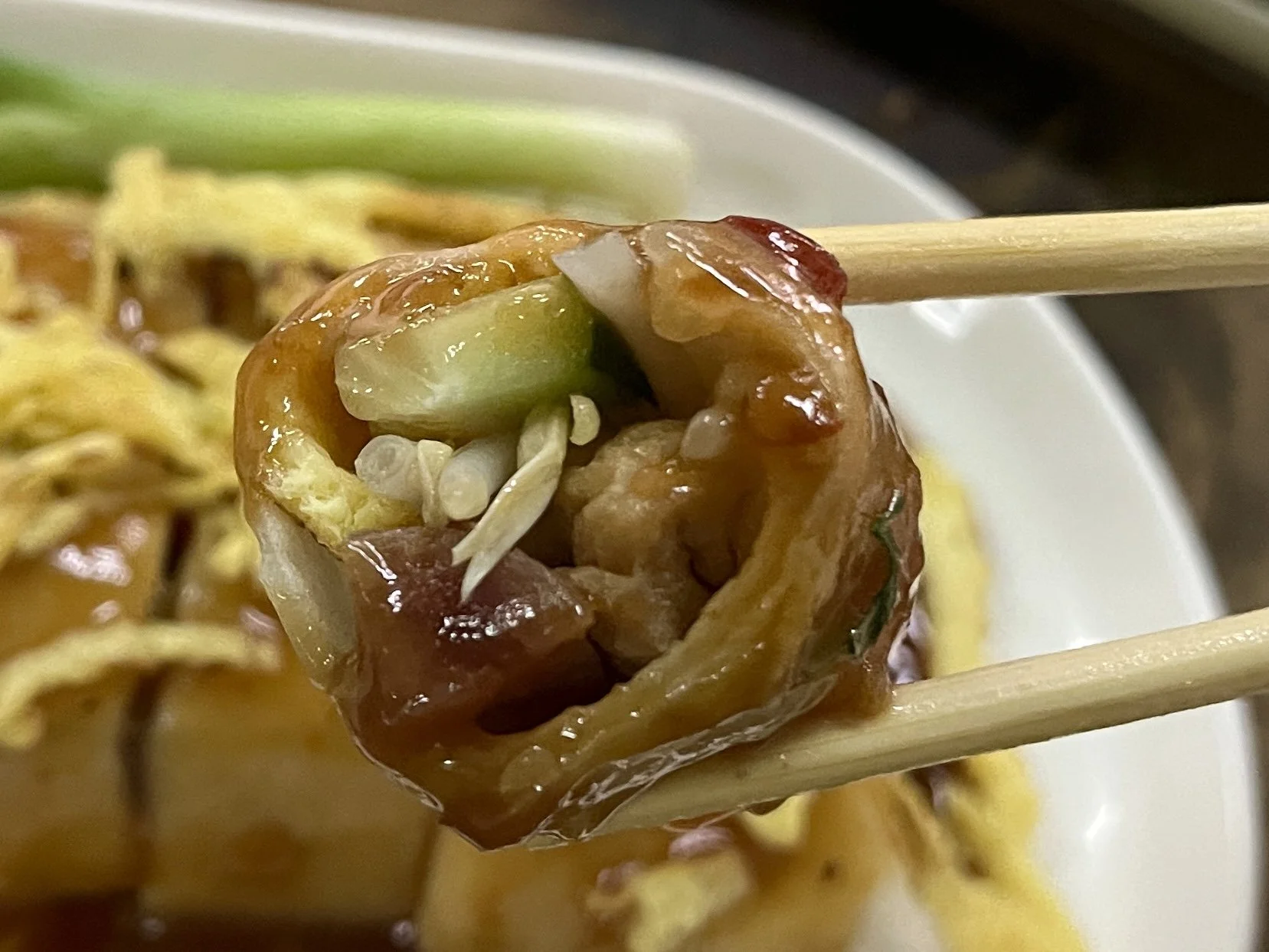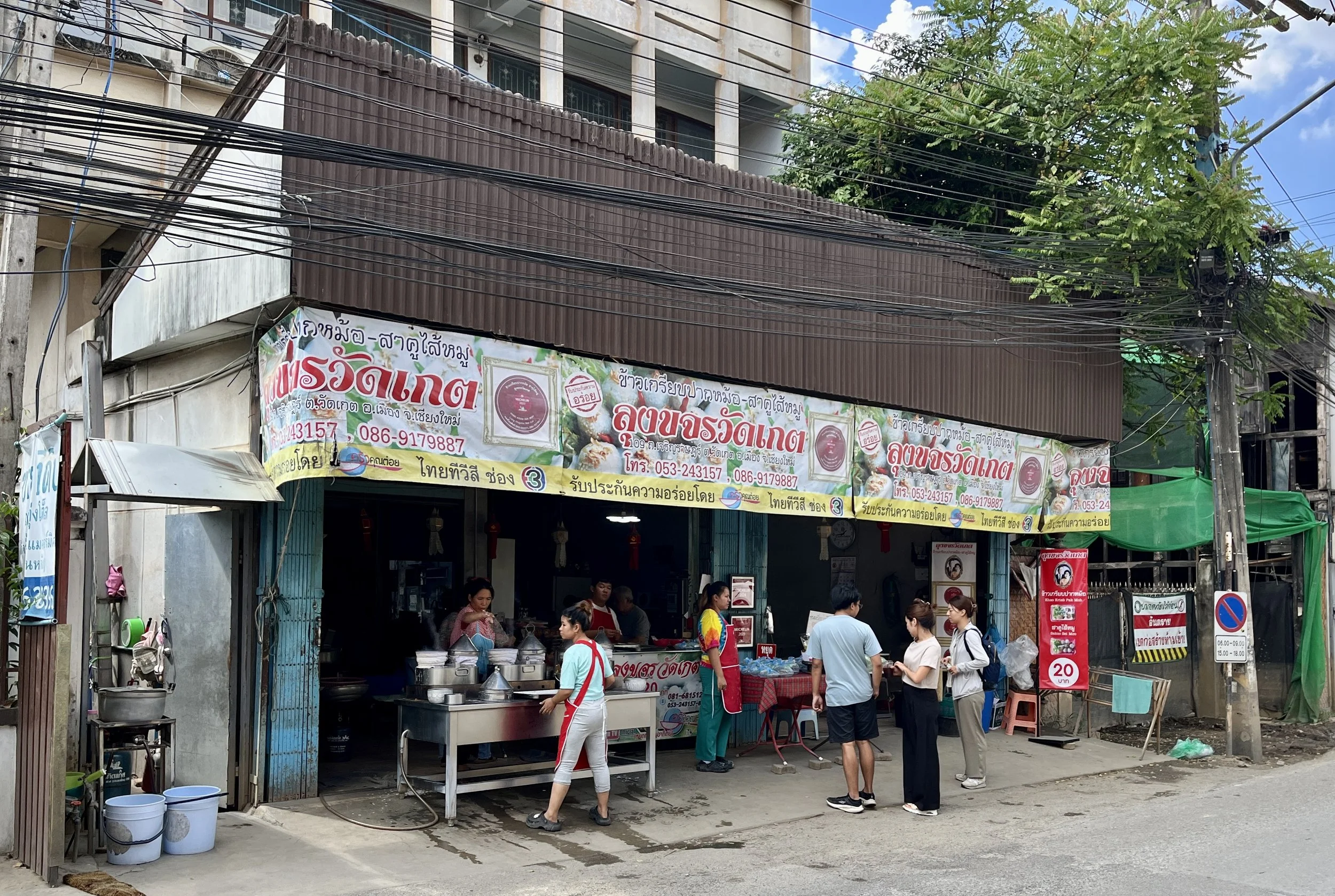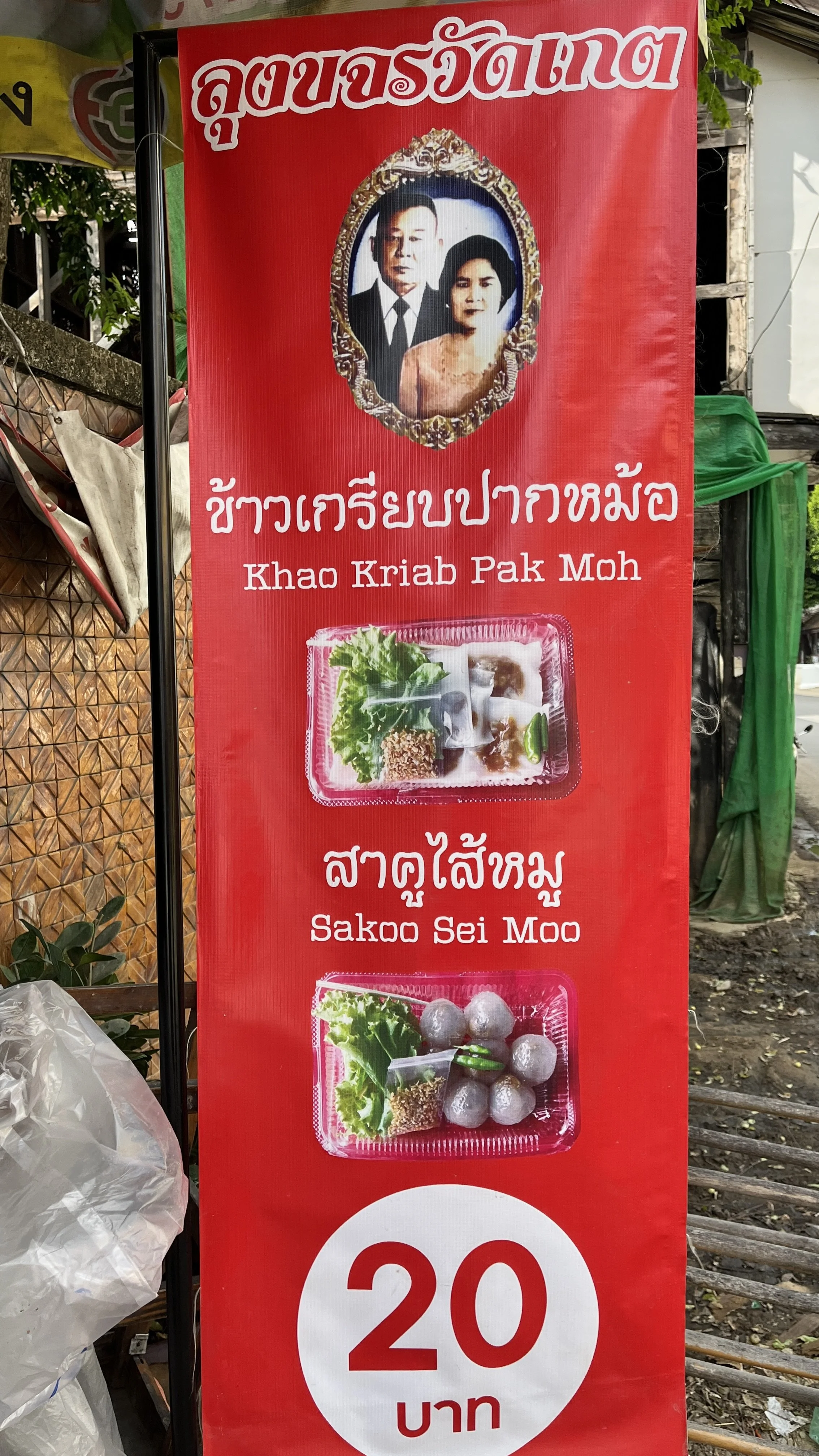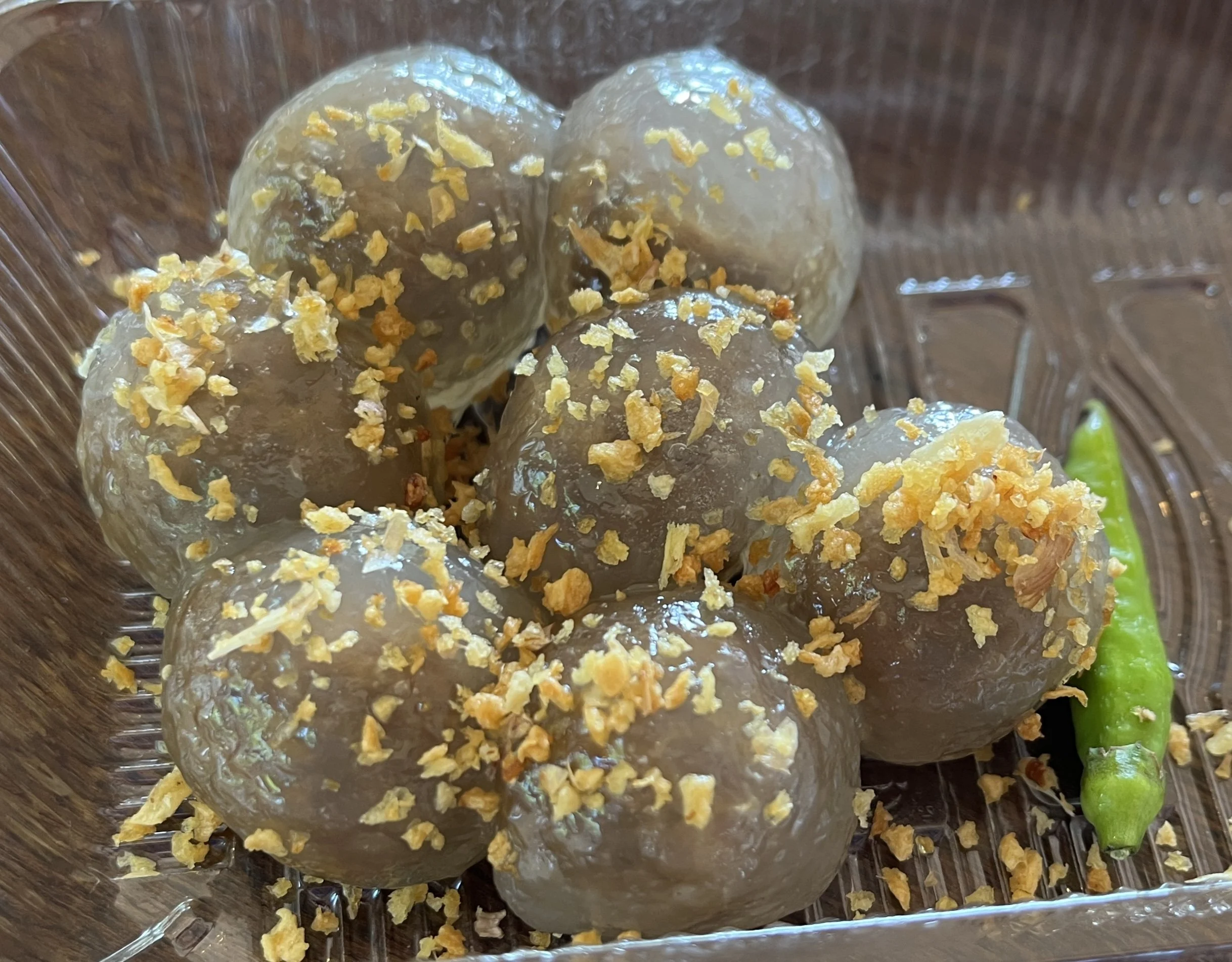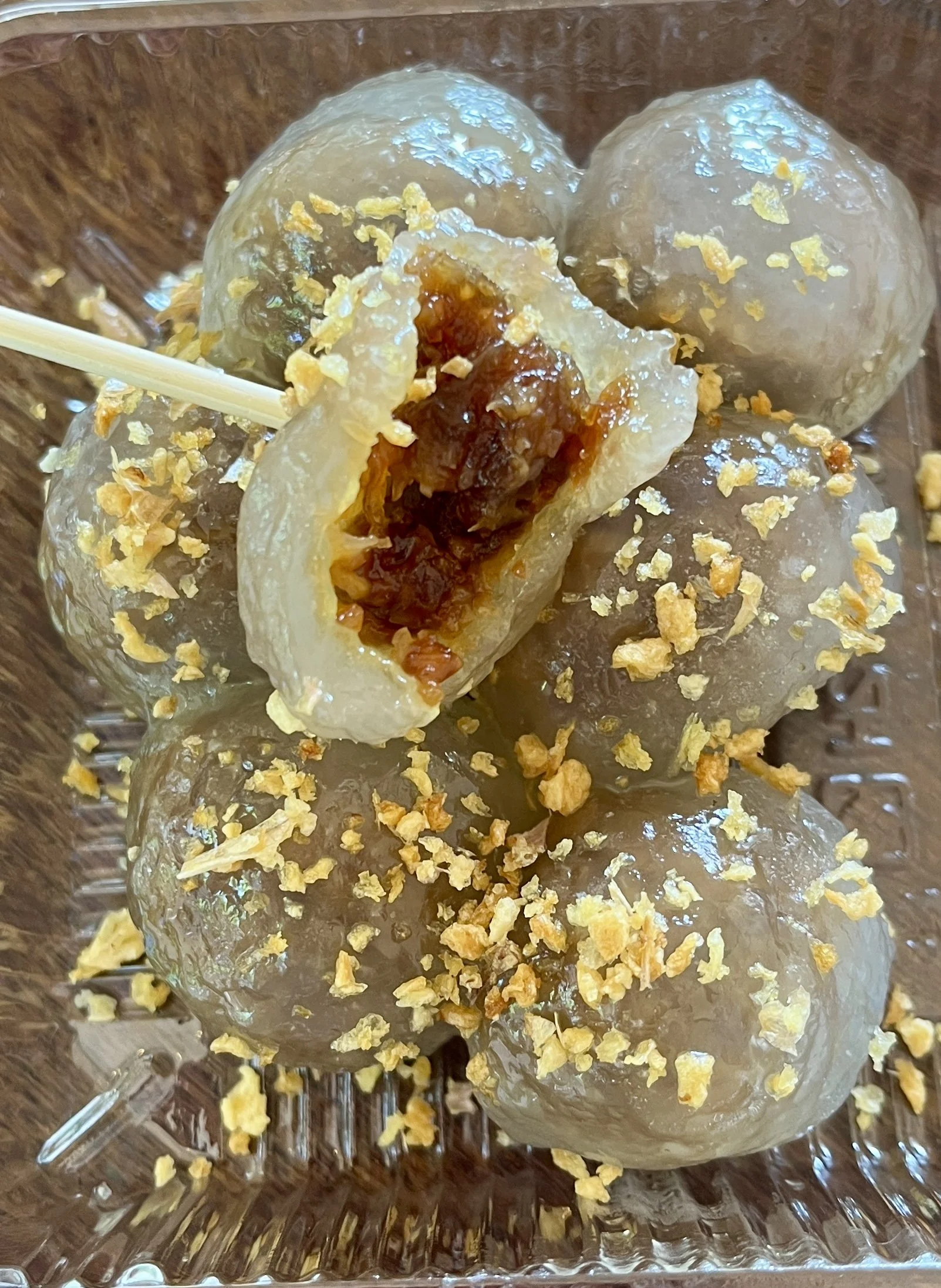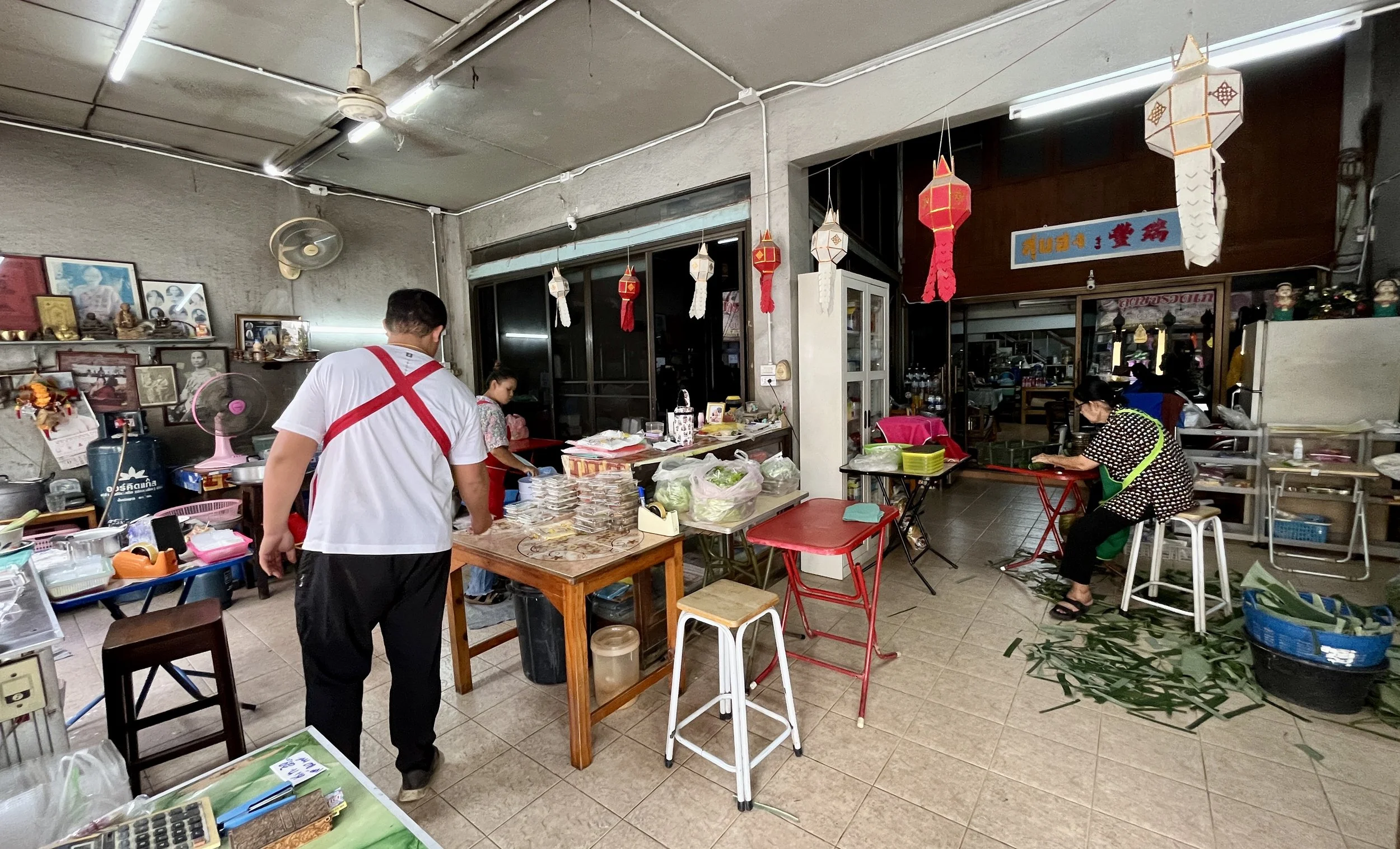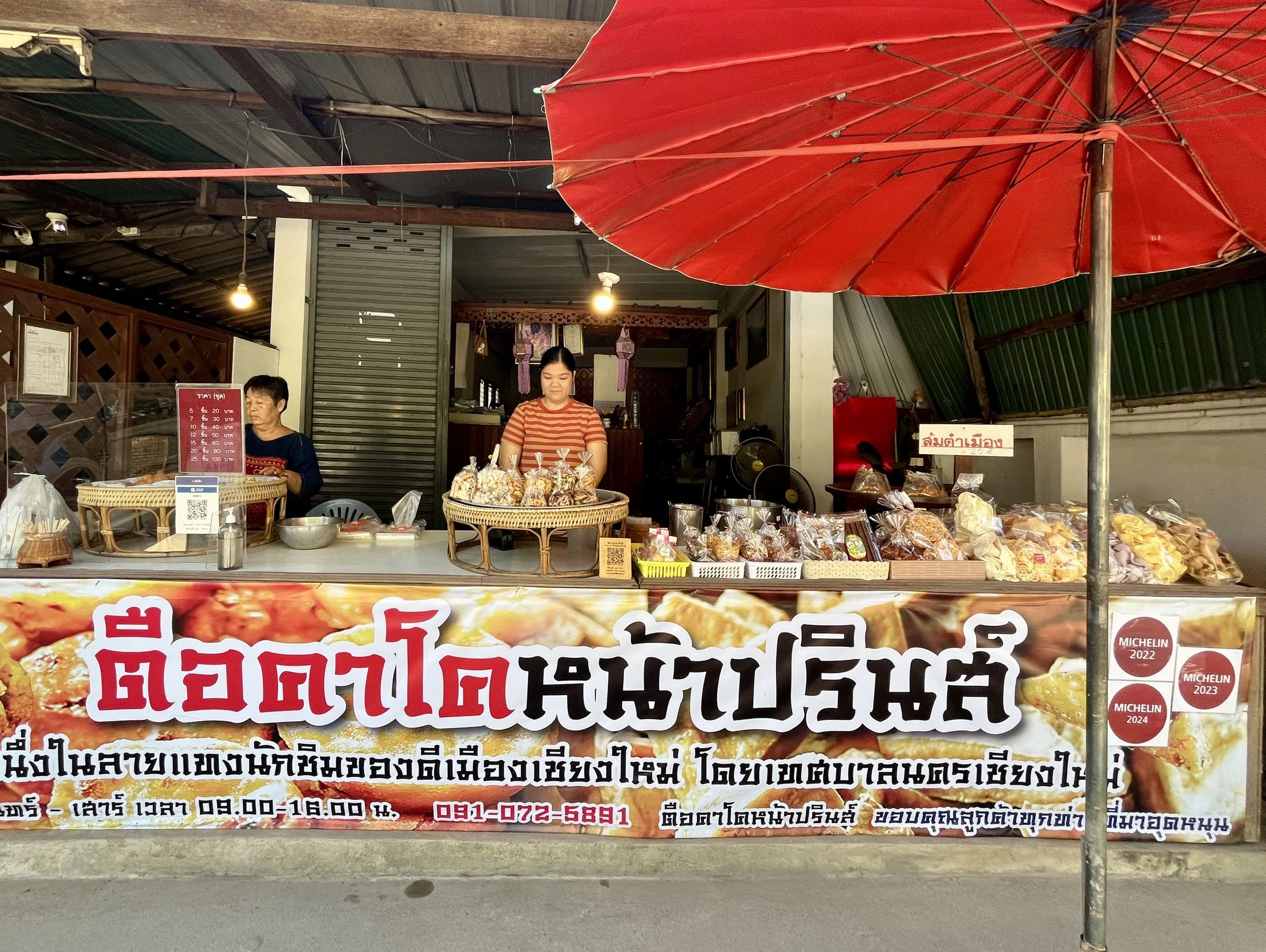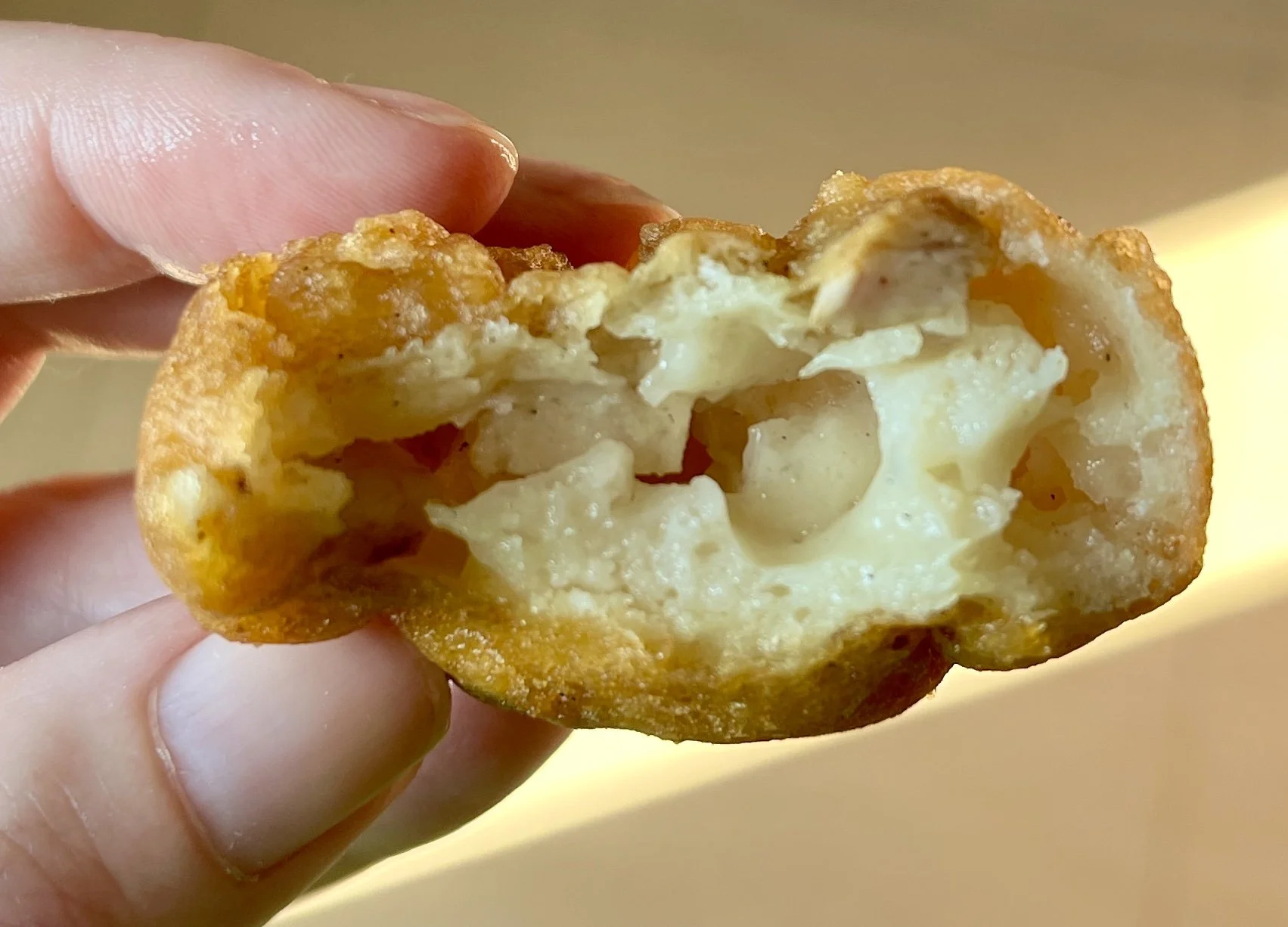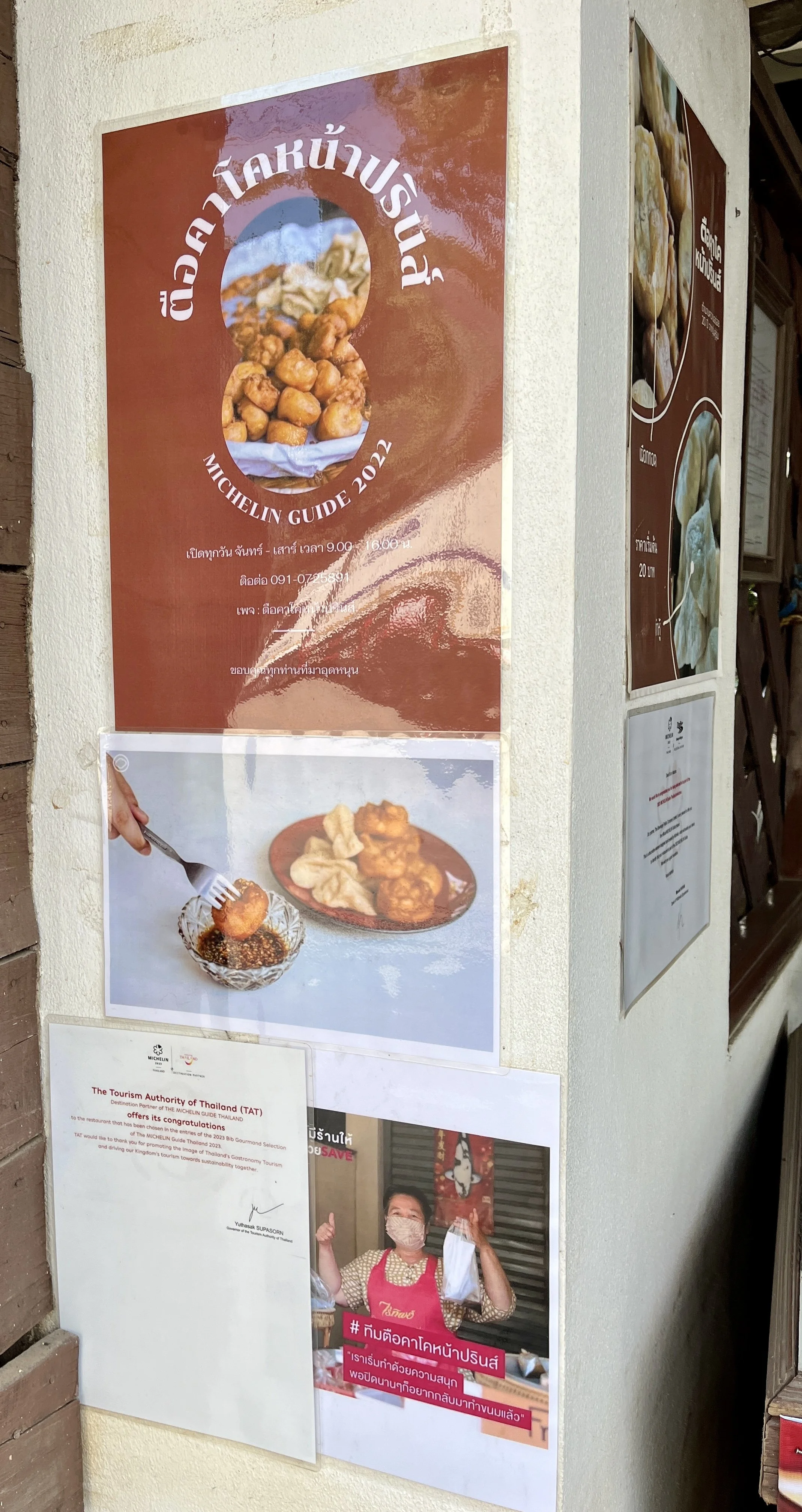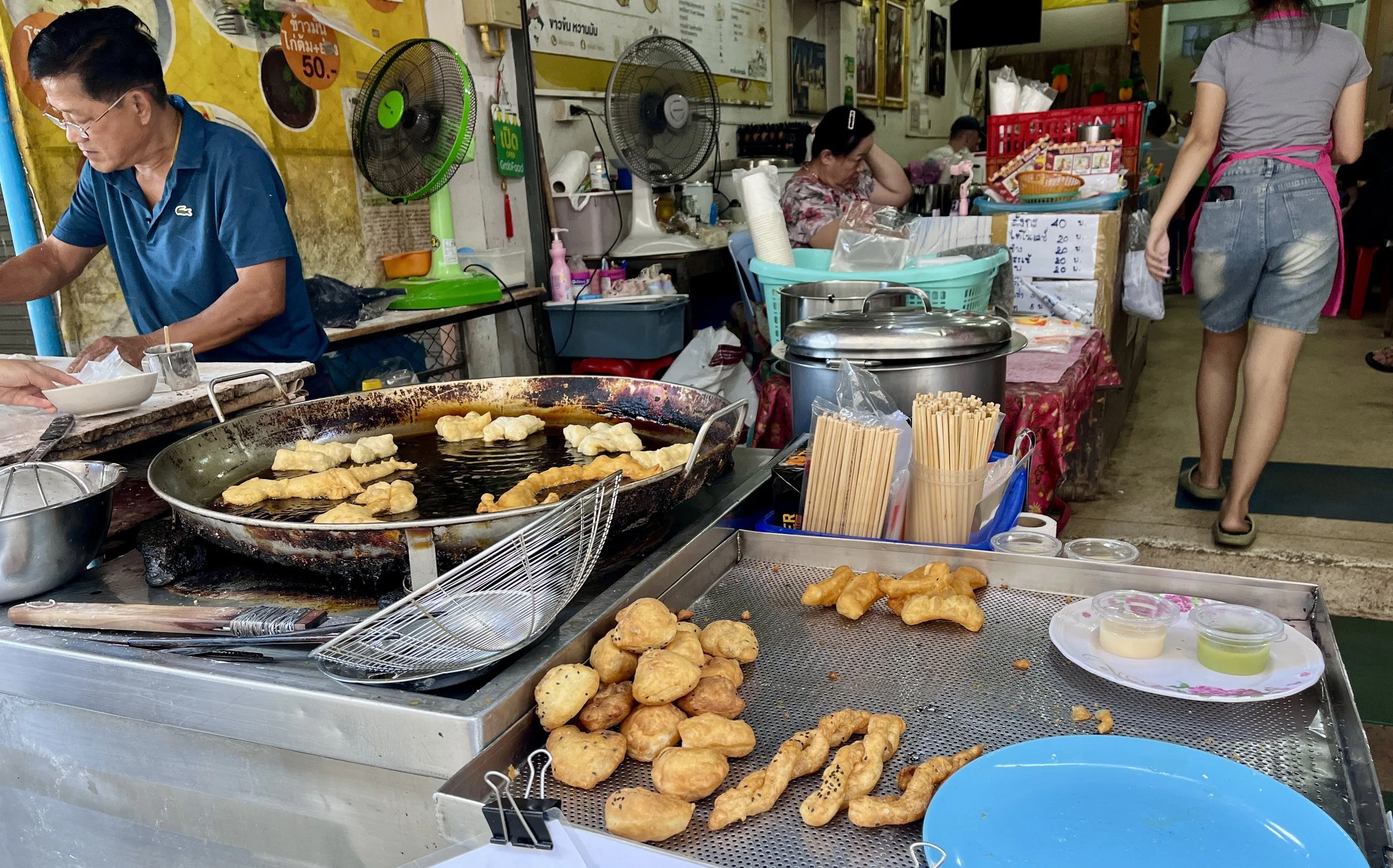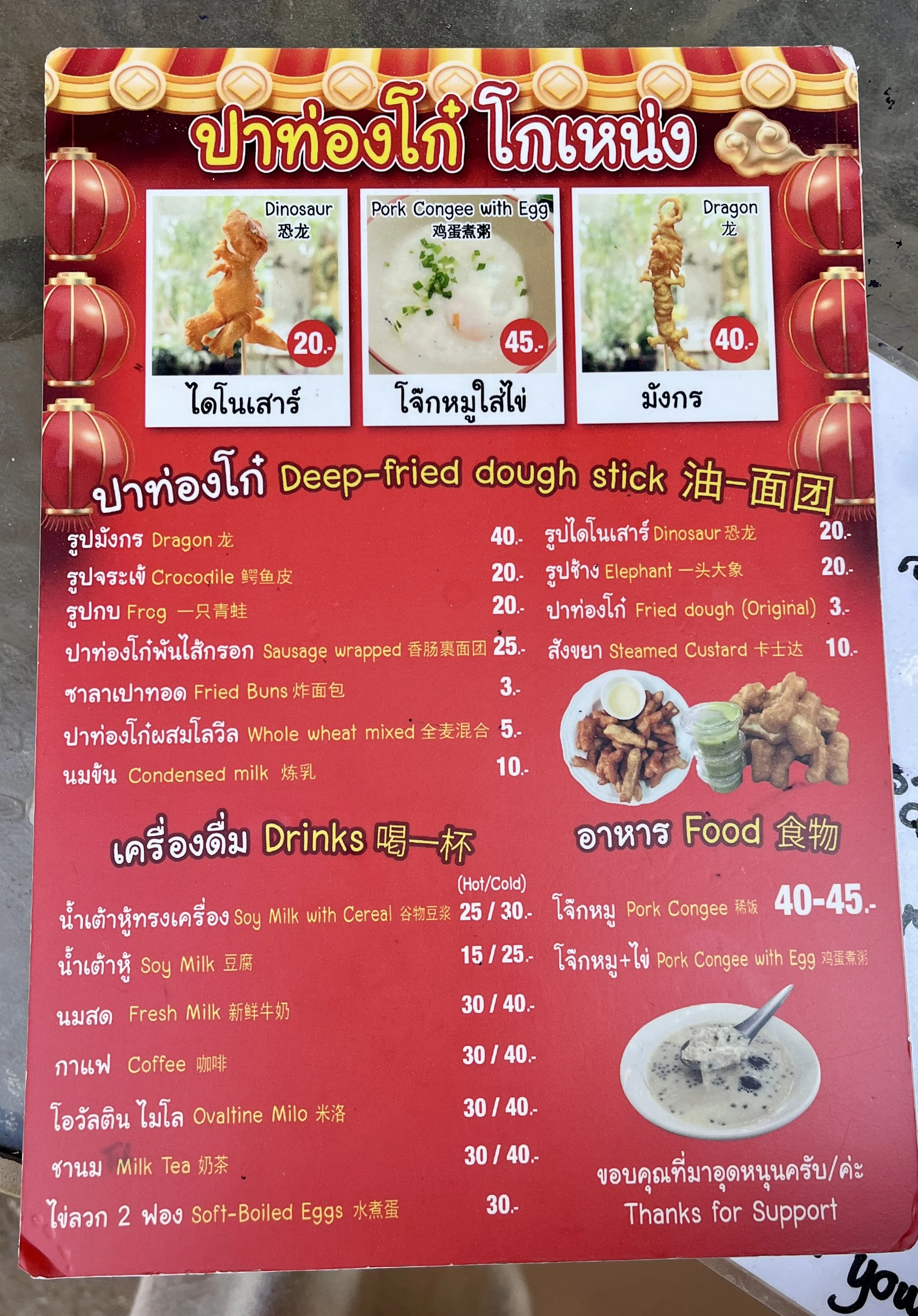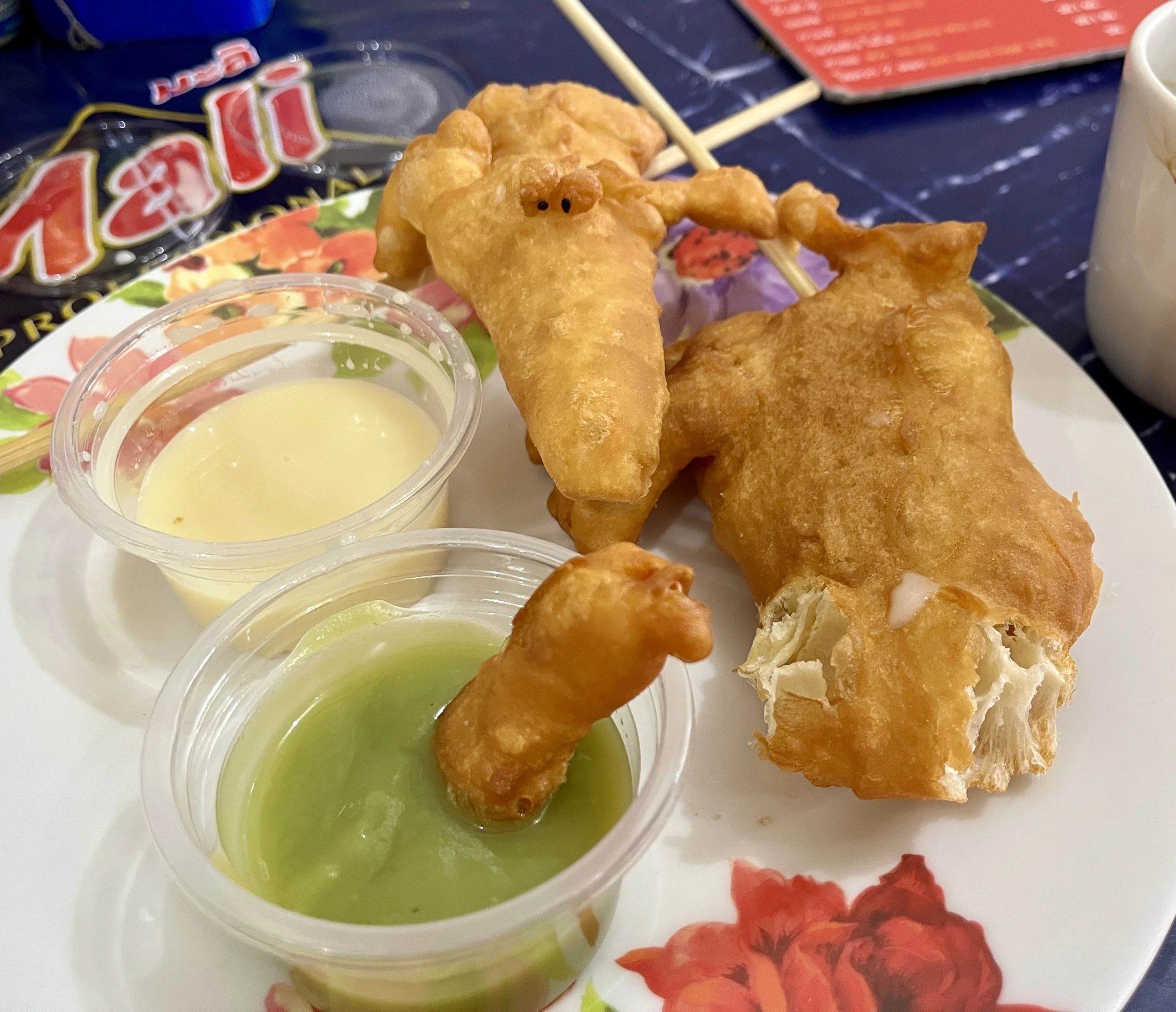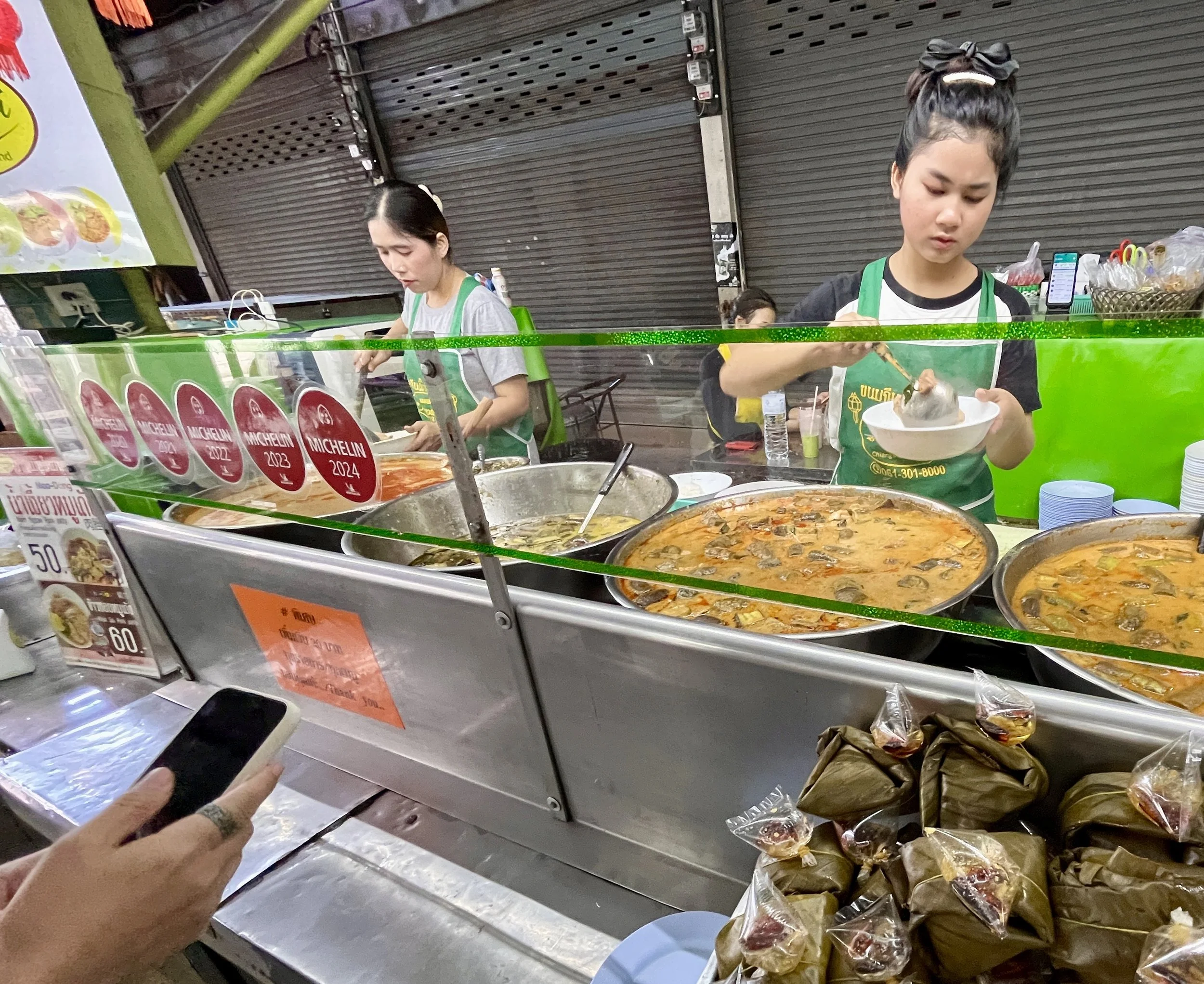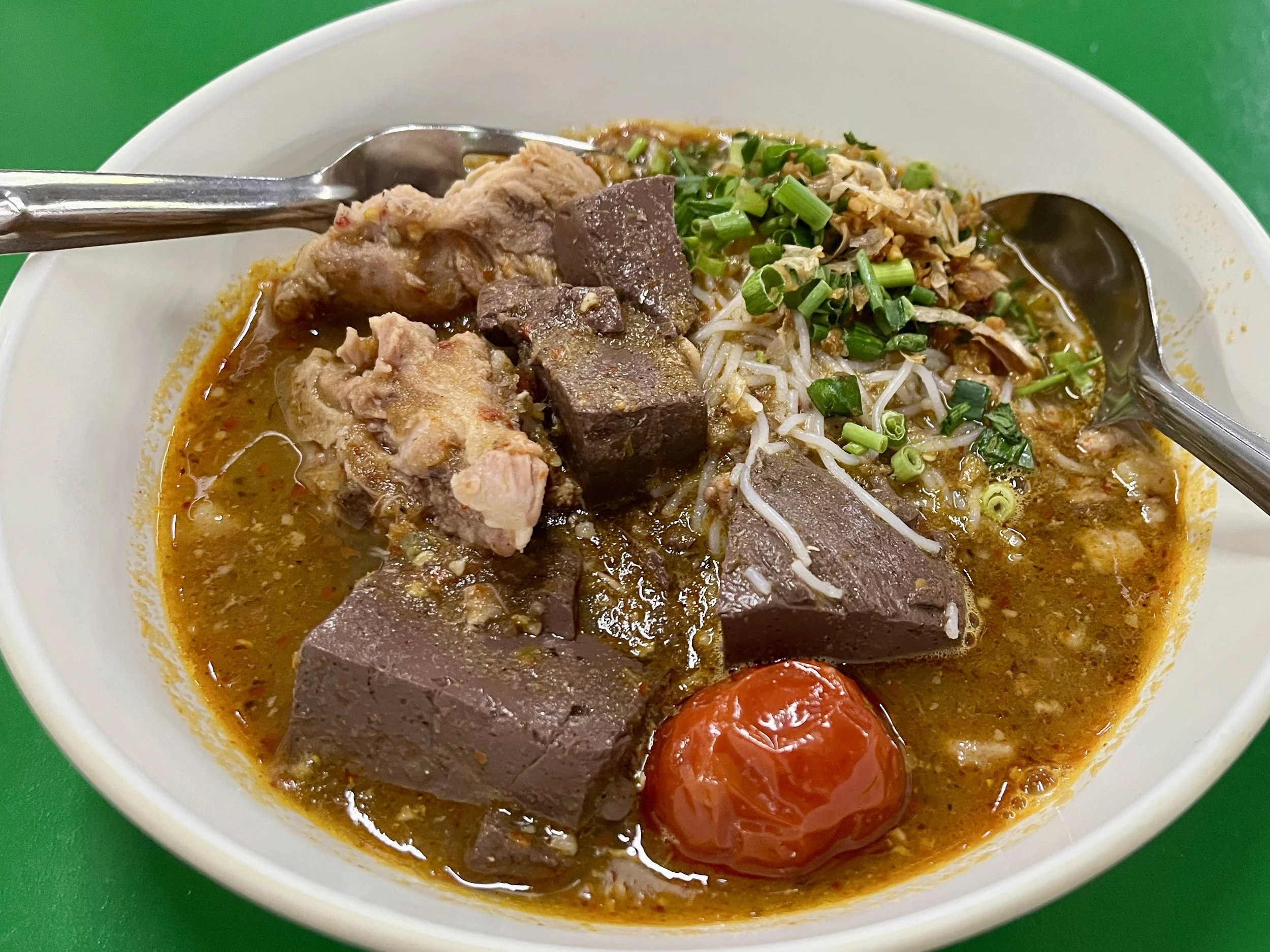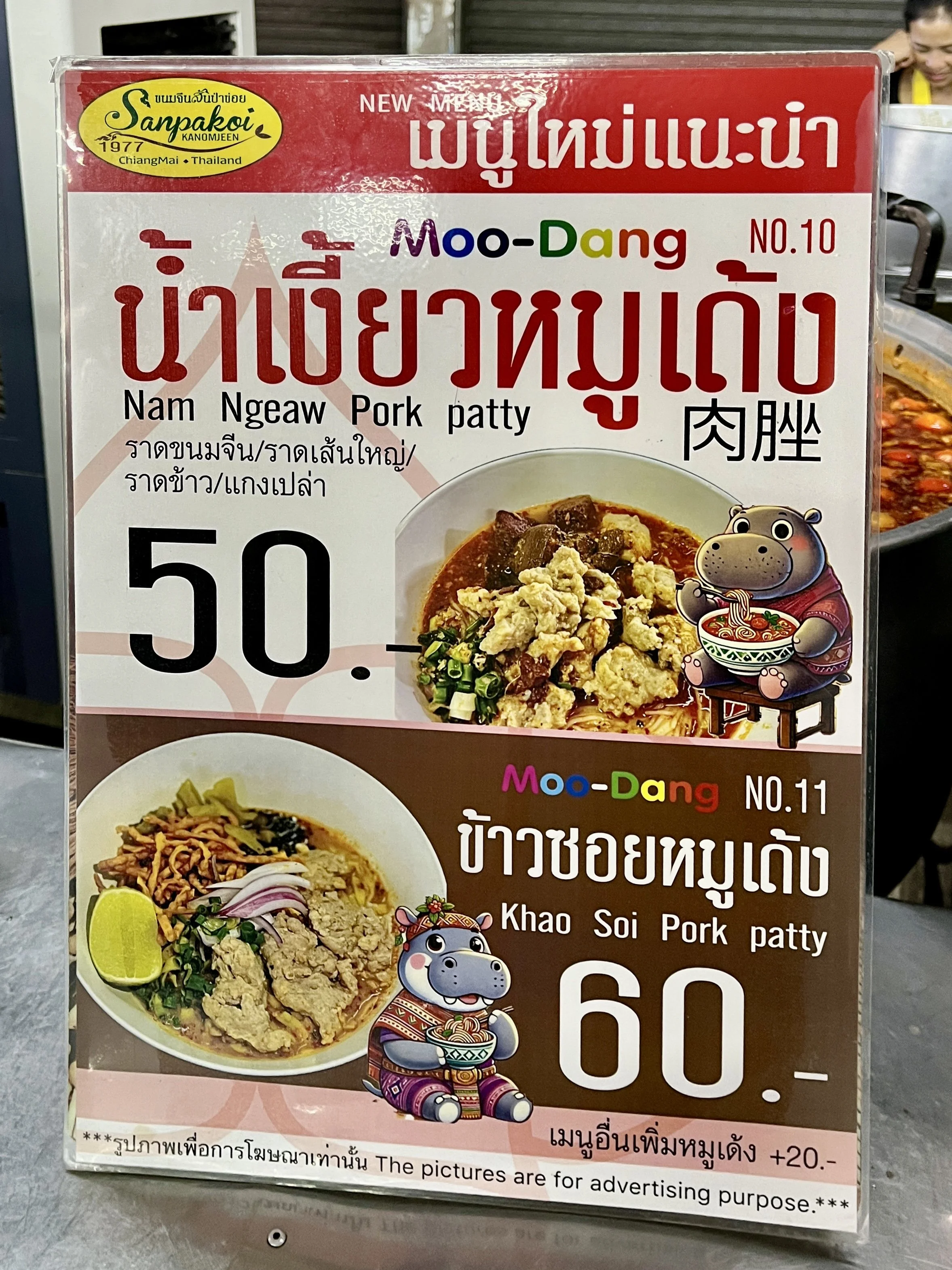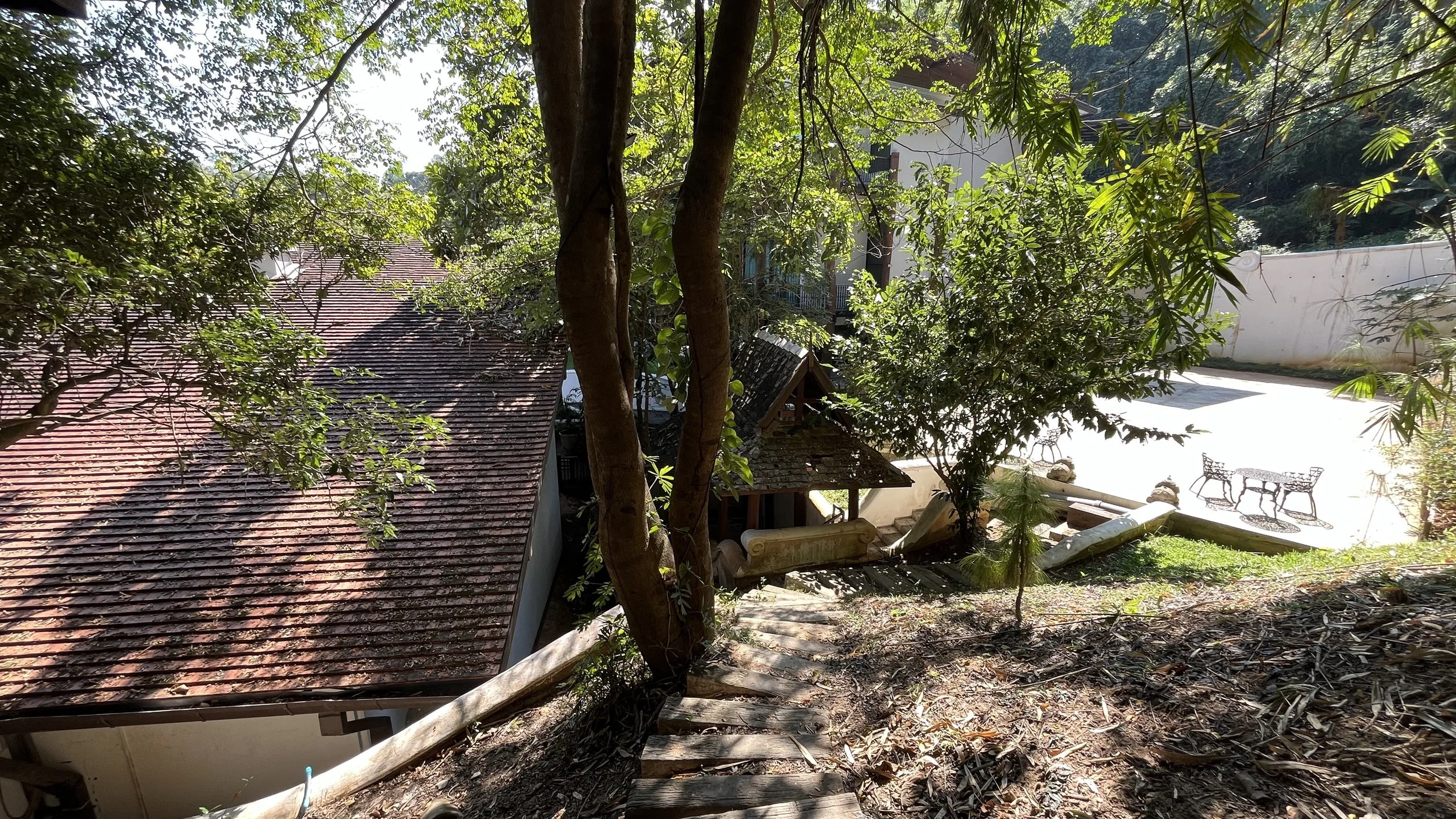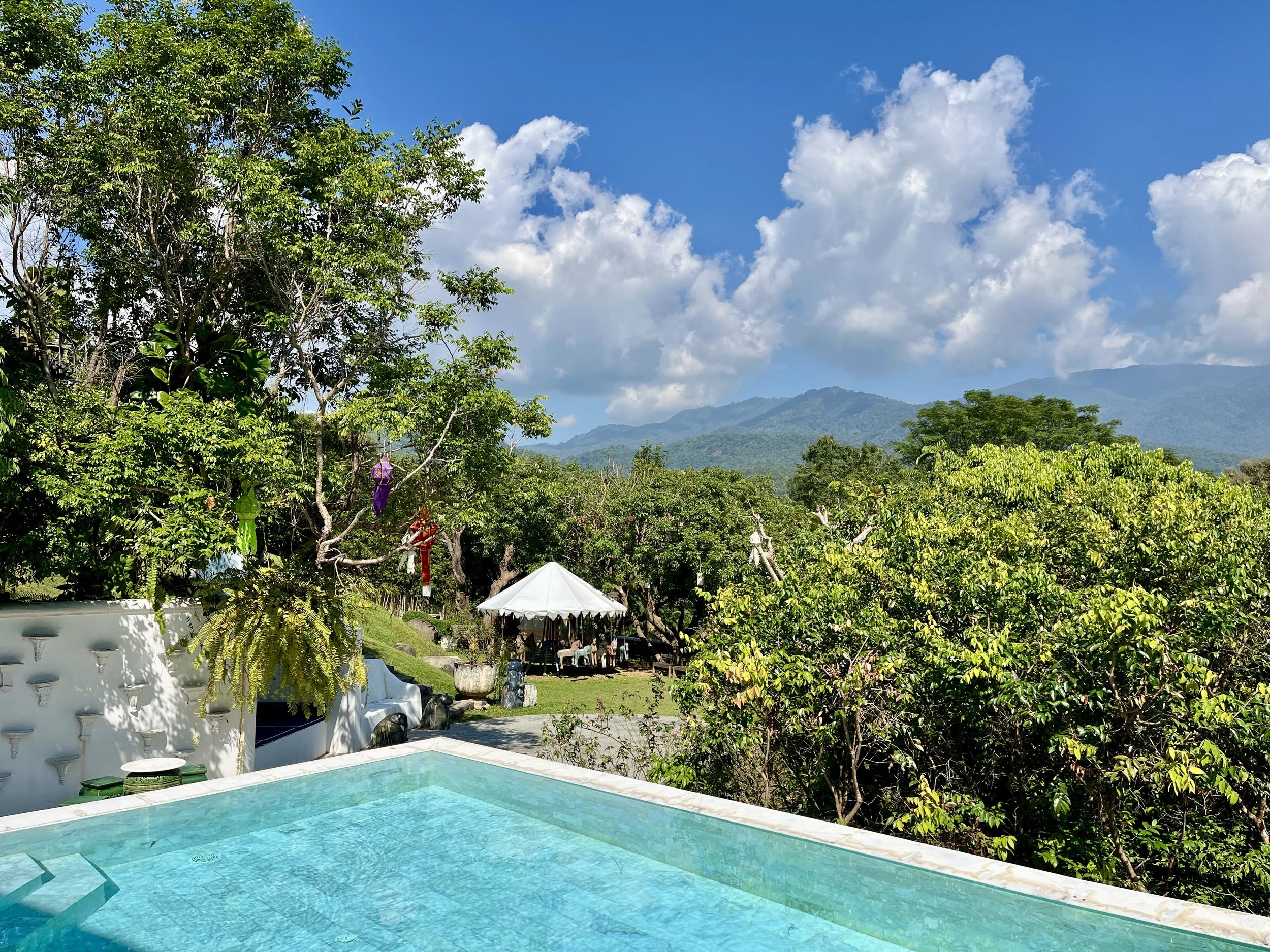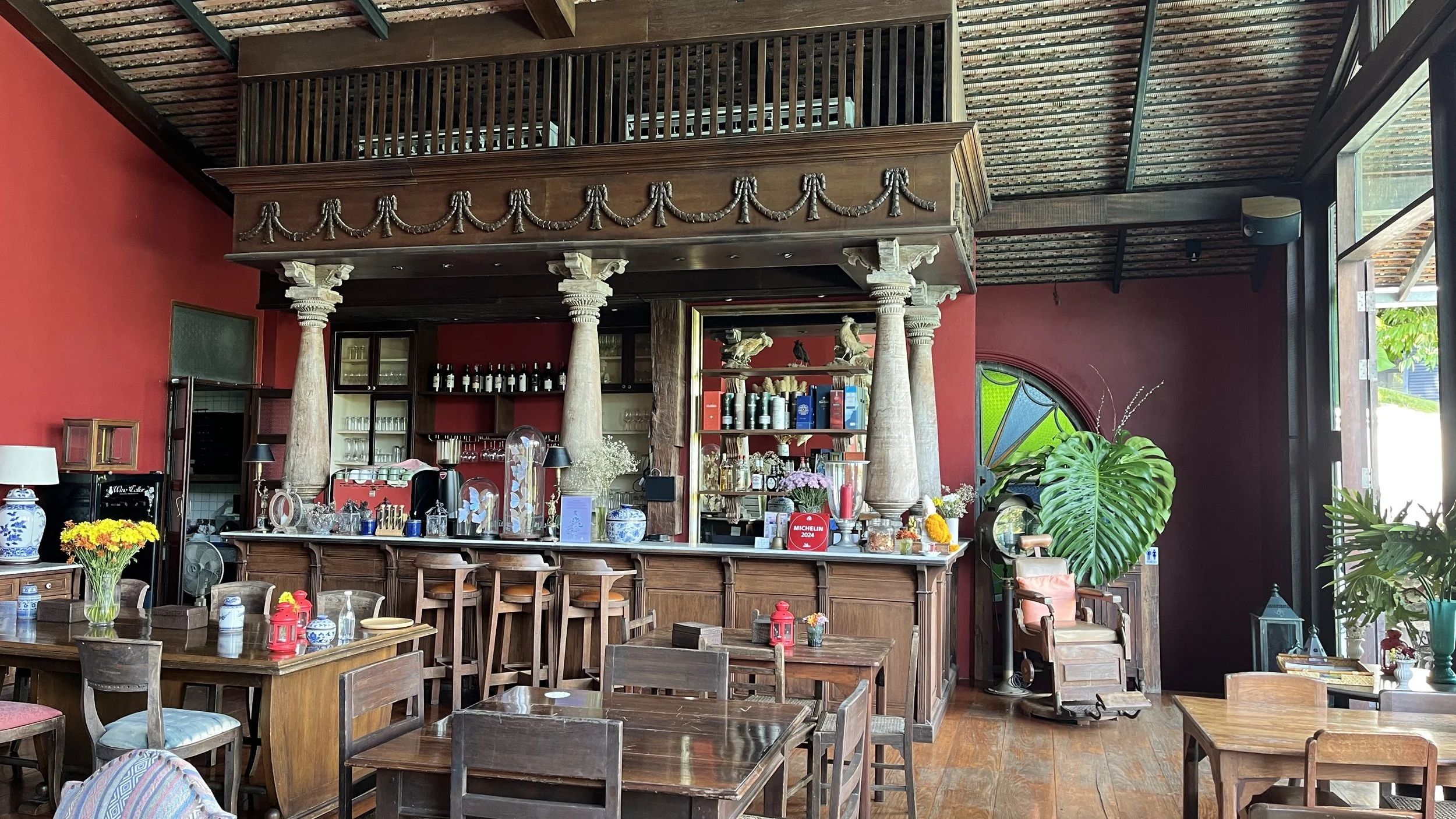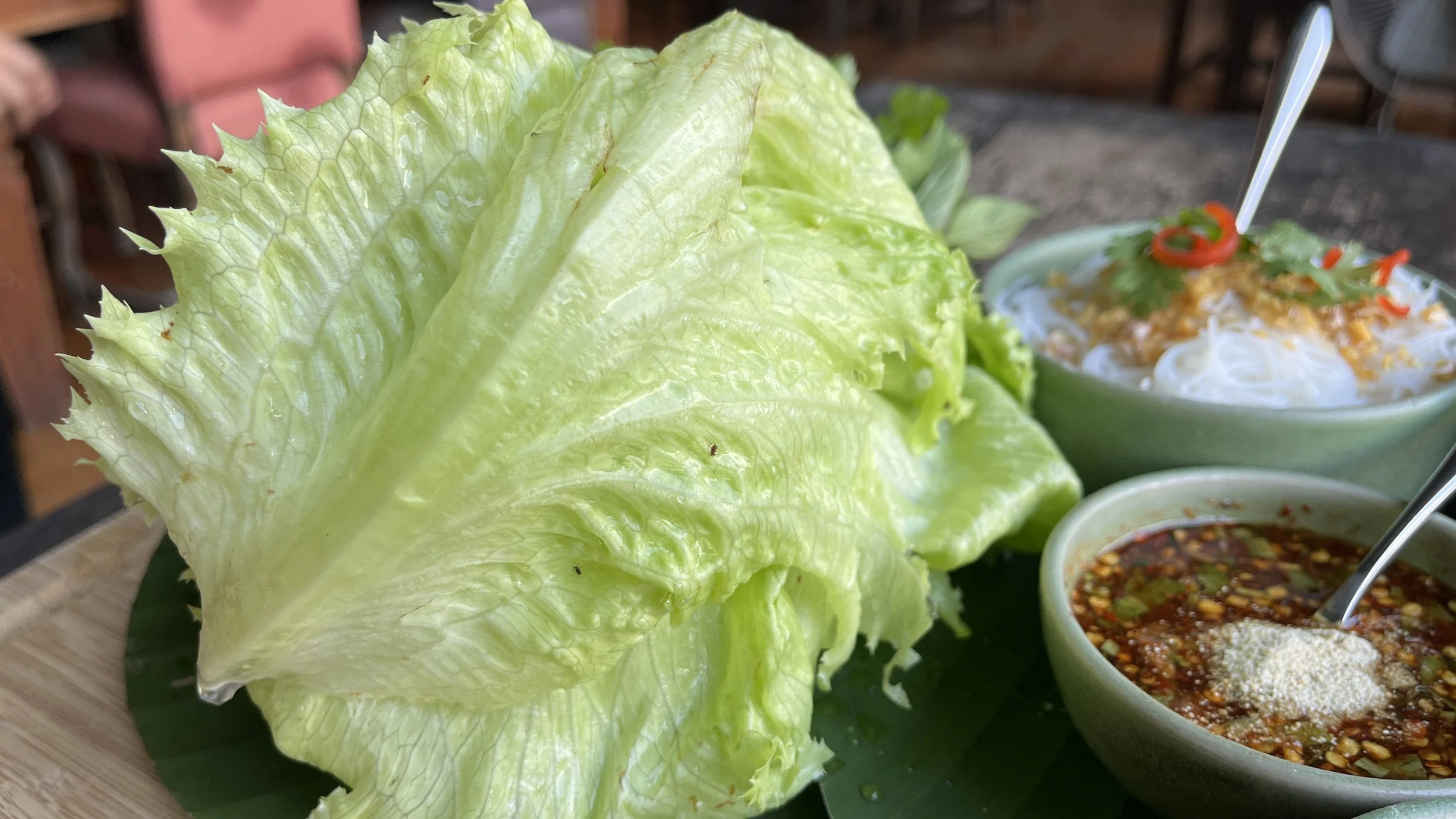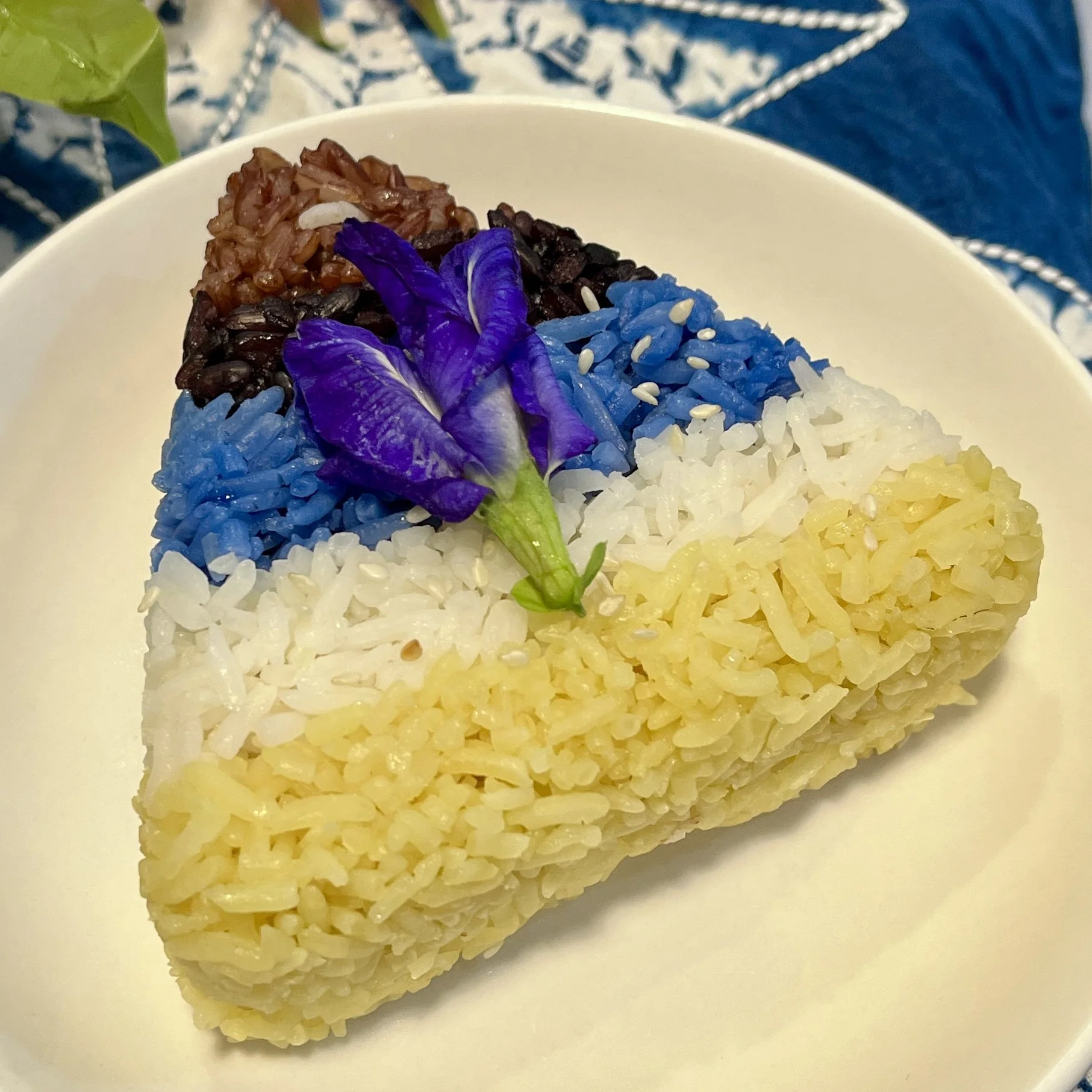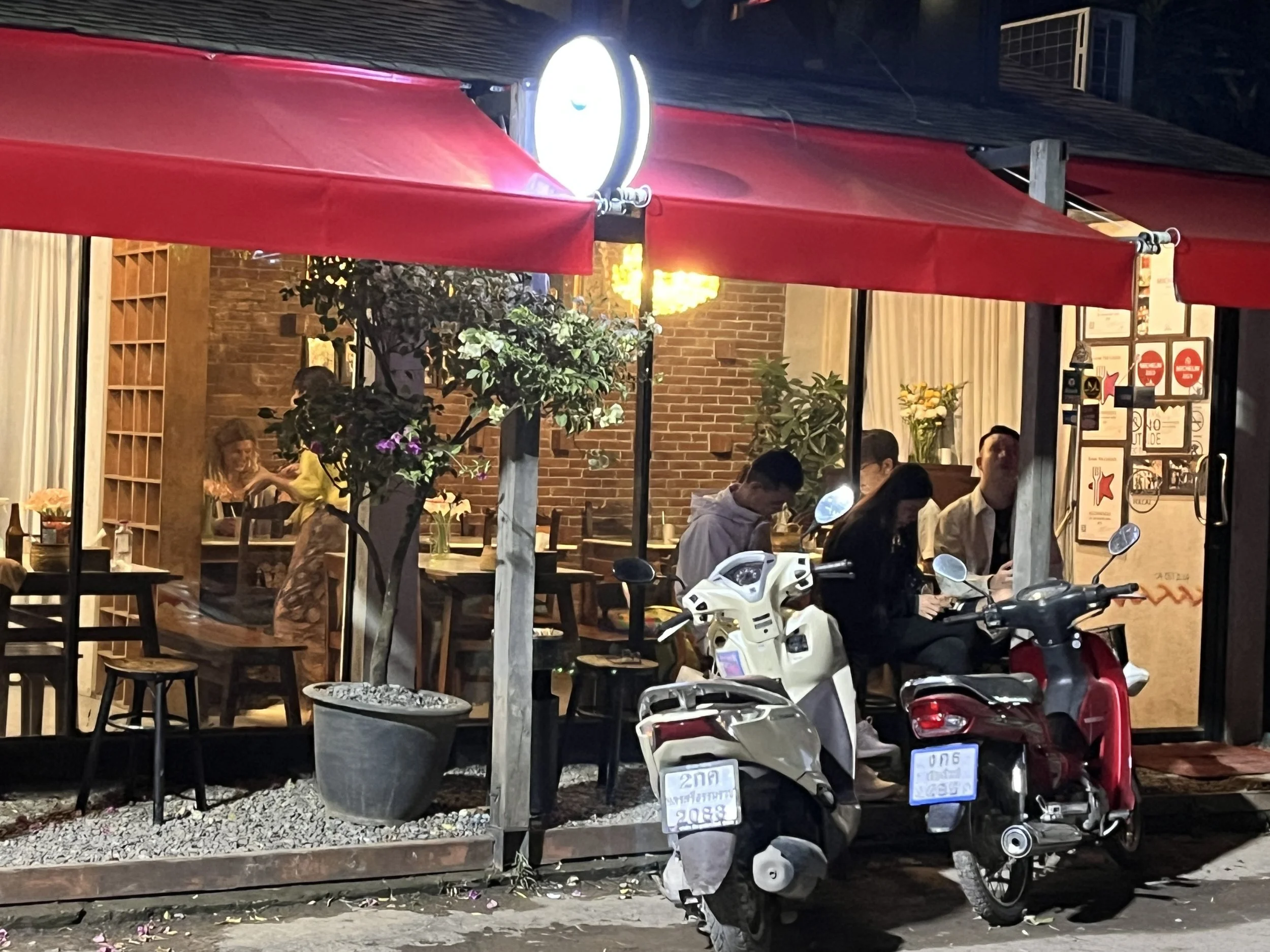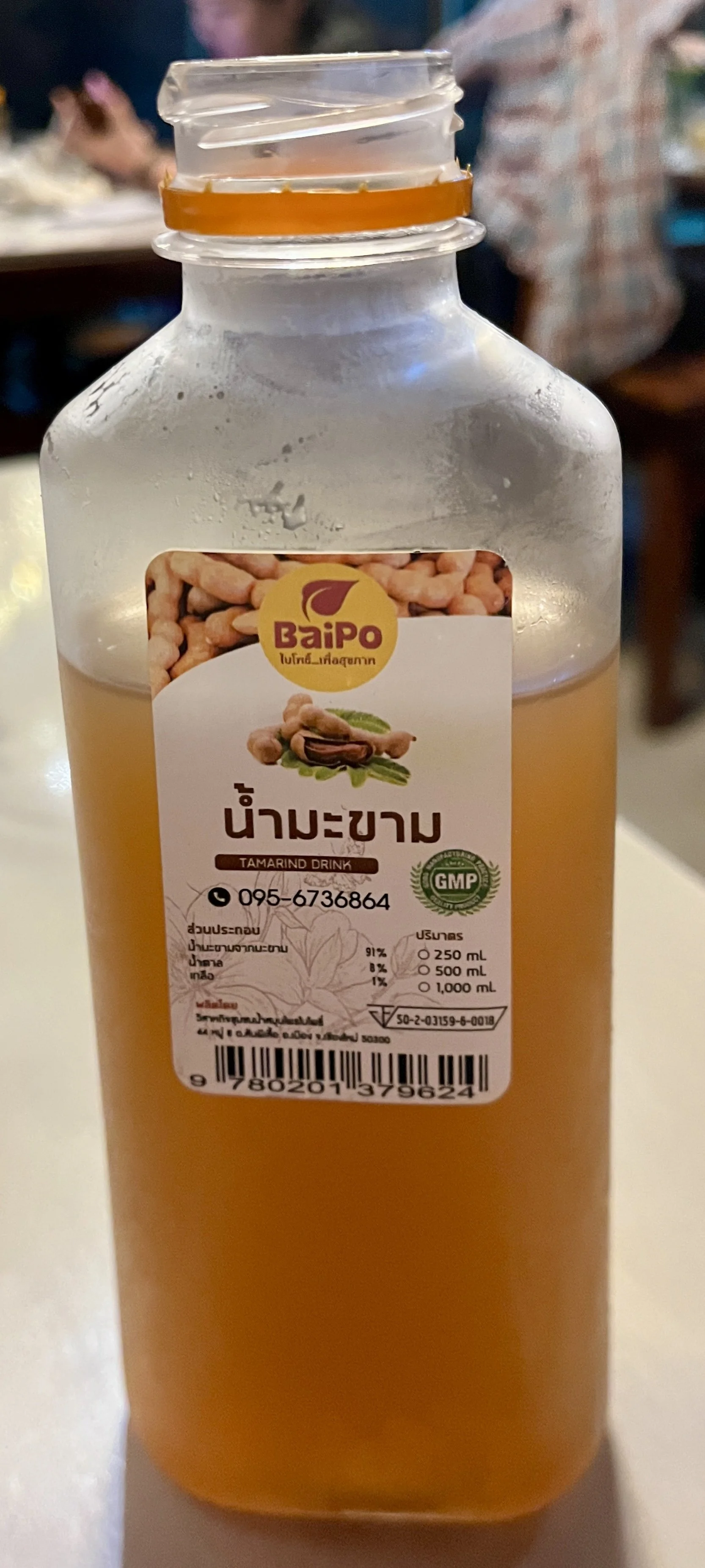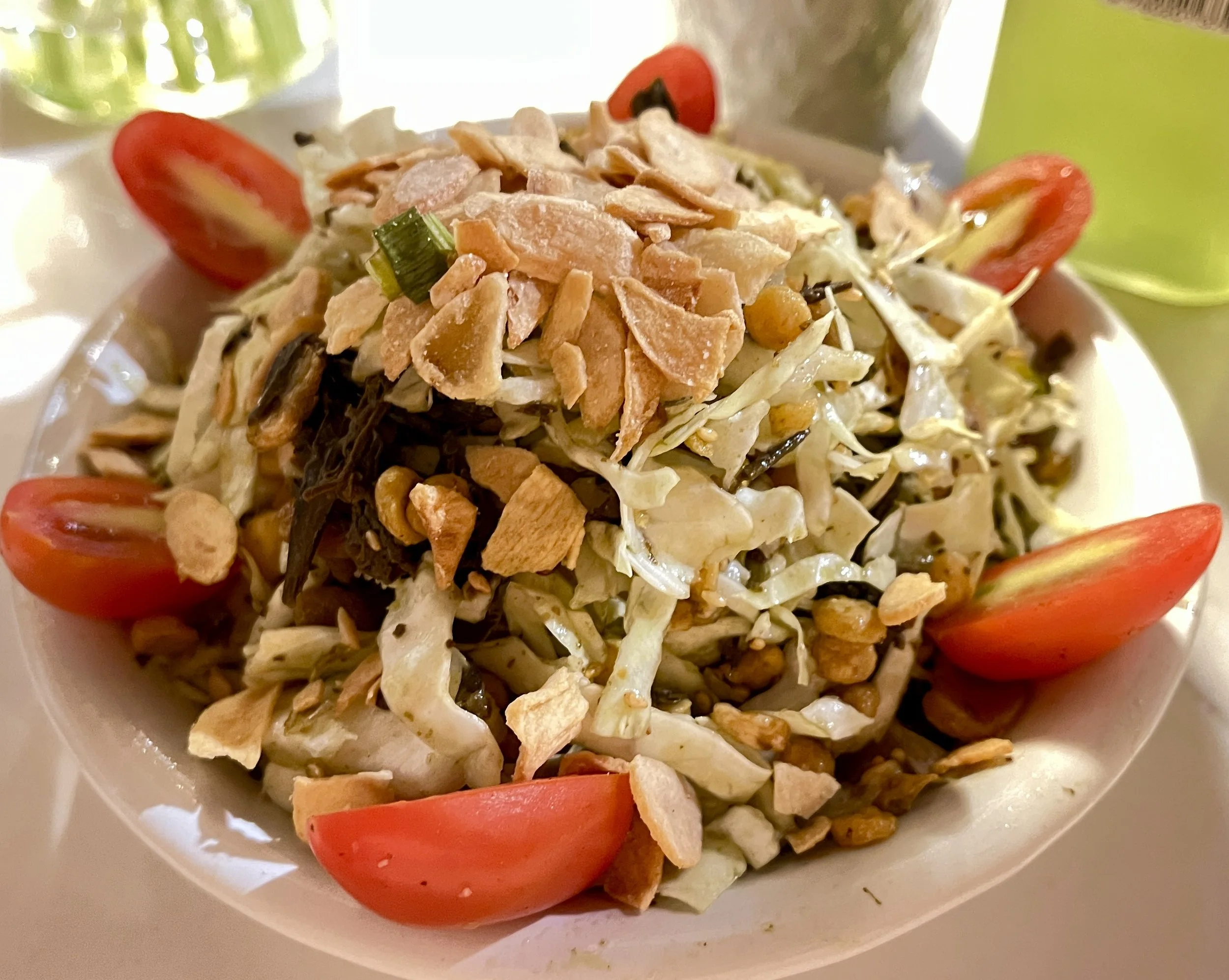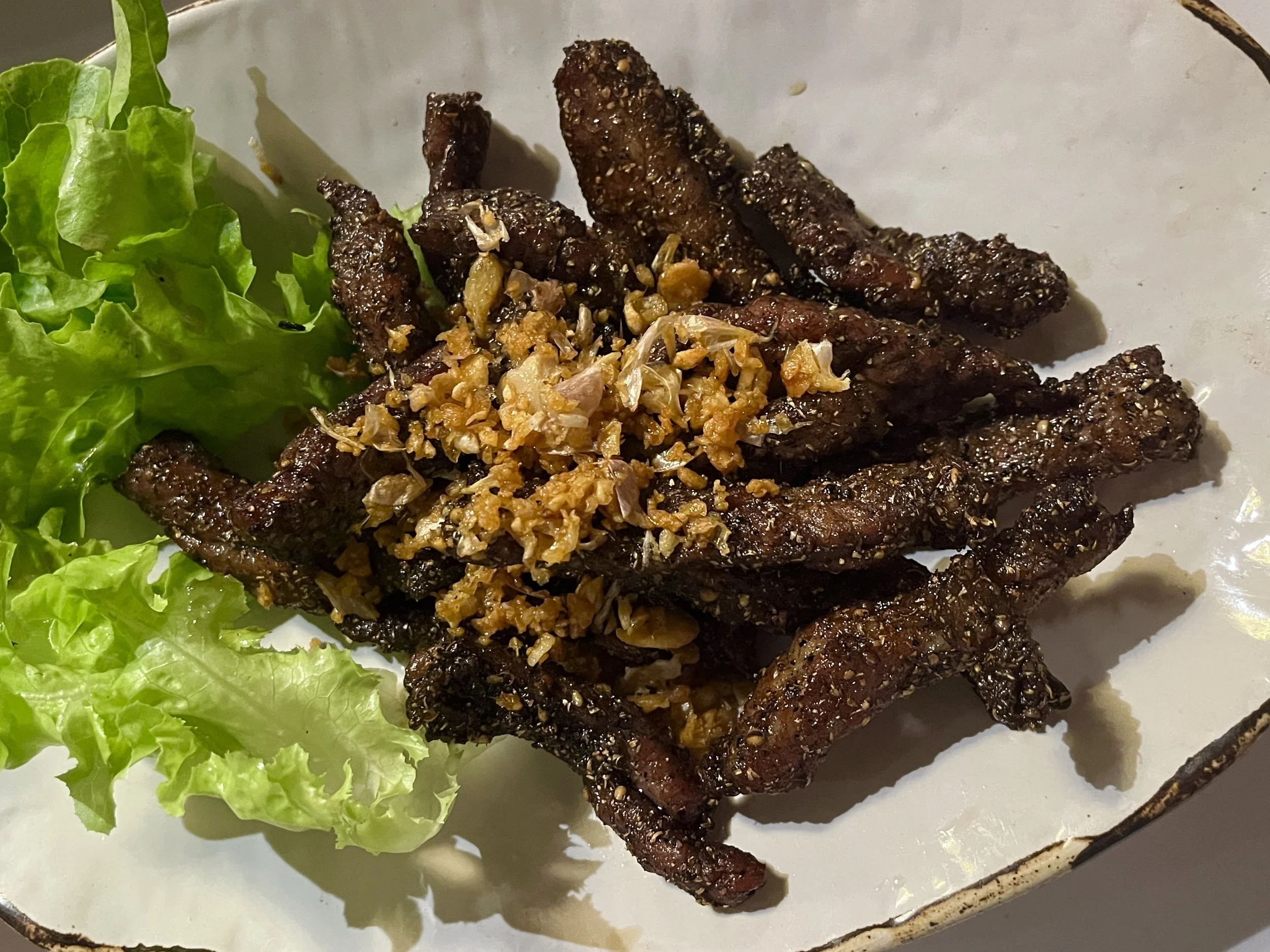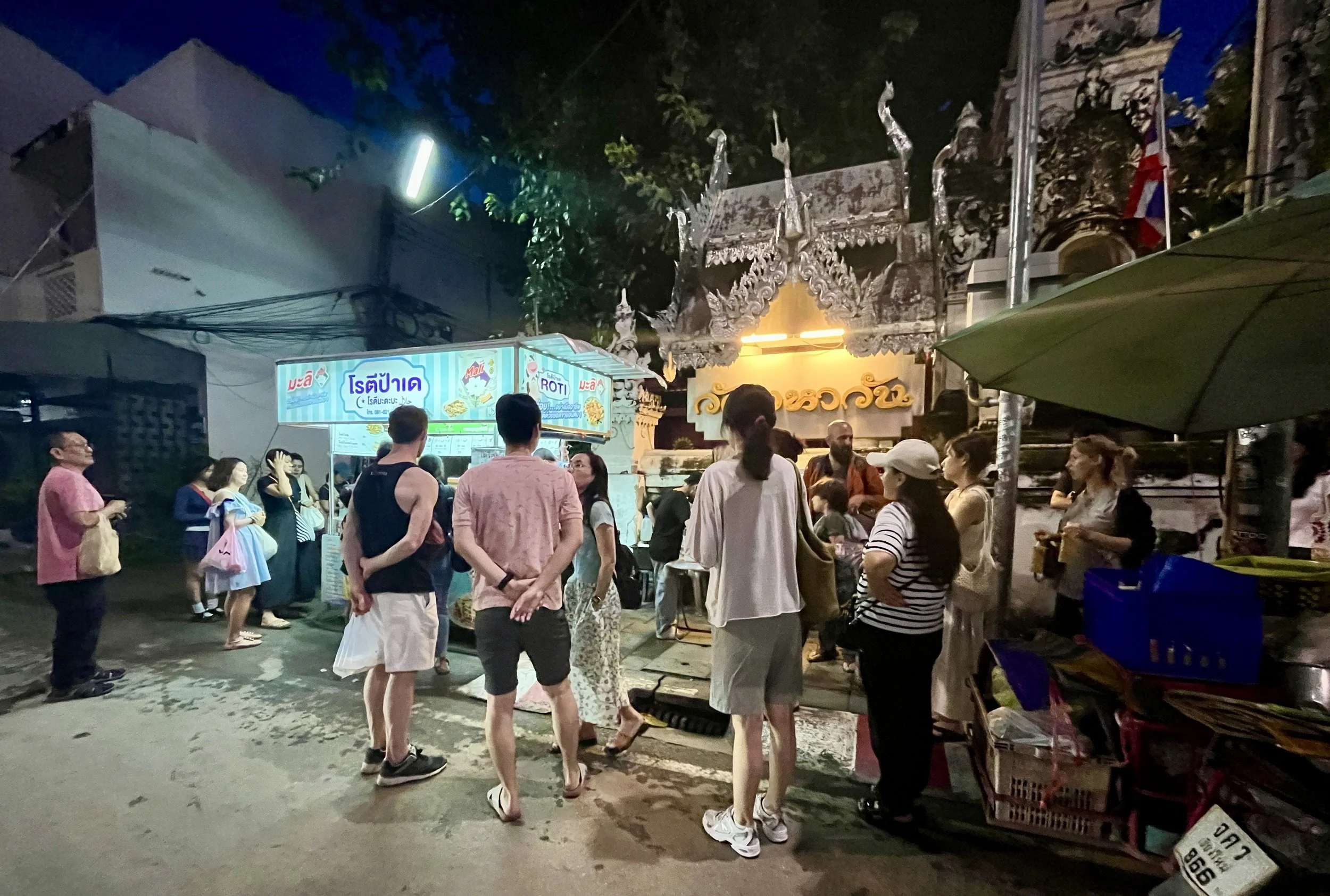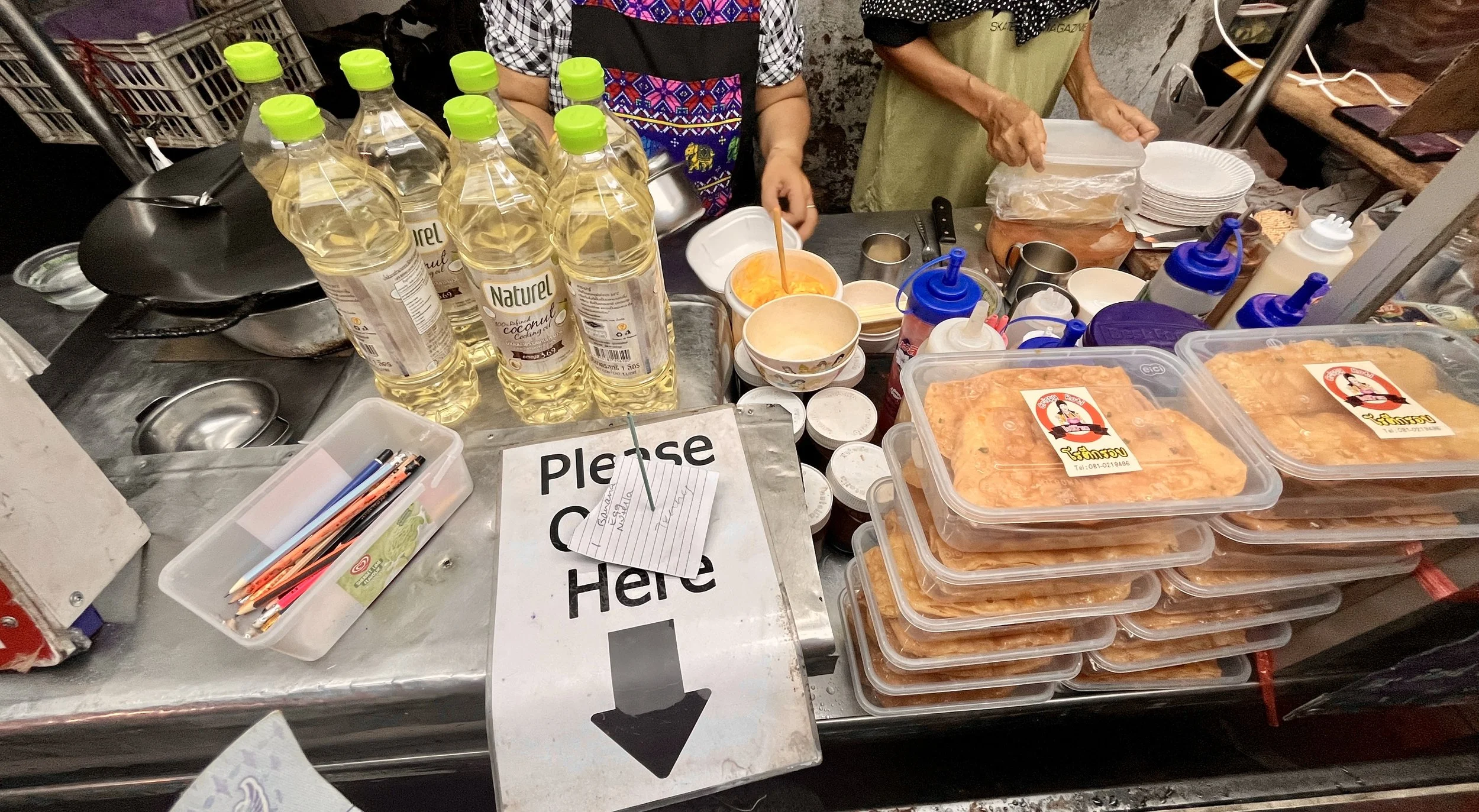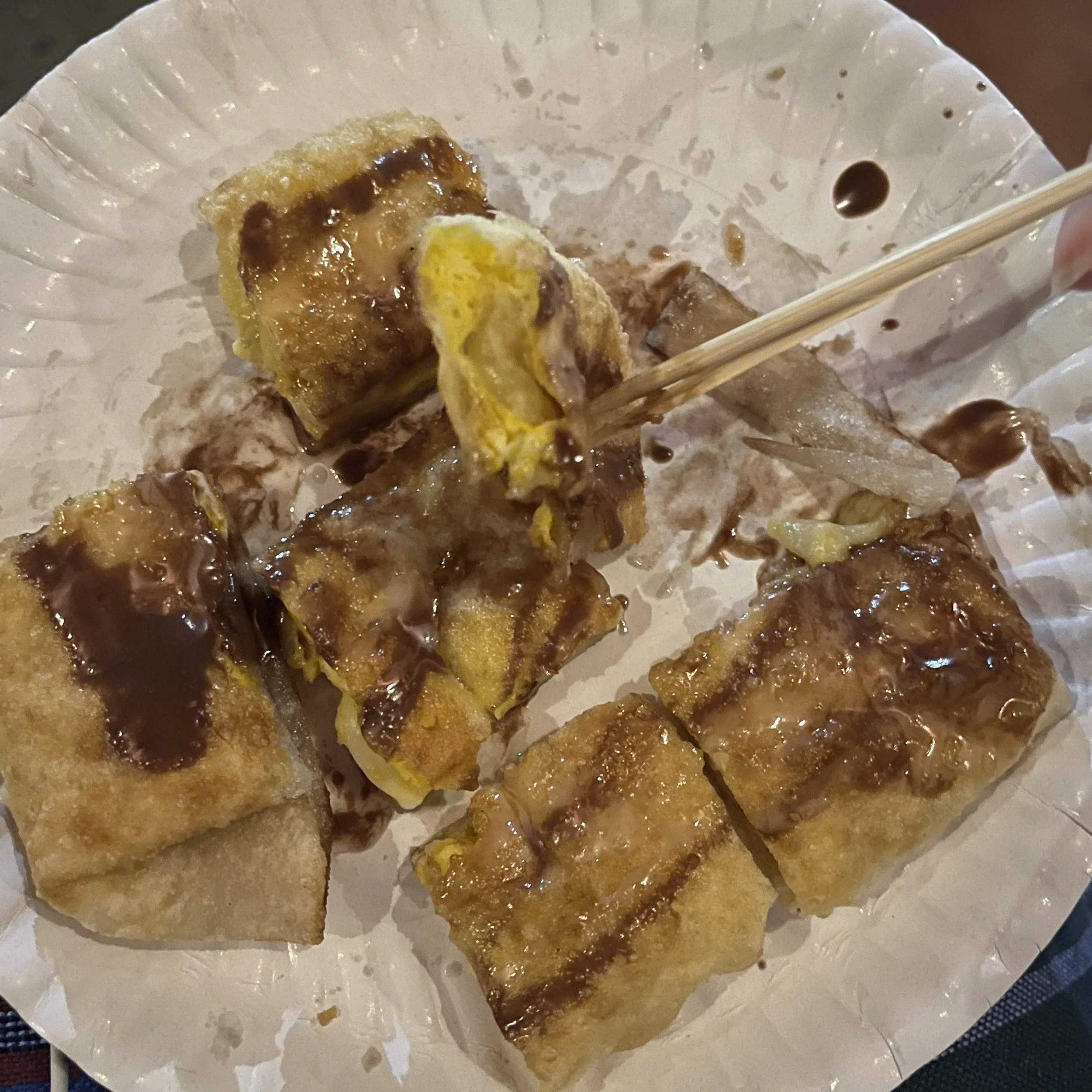FROM BEST TO WORST, IMHO:
Rasik’s local kitchen
There are only 4 tables in the restaurant, so it’s written everywhere that reservations are necessary. Unfortunately, my messages on instagram and facebook went unanswered for over 48 hours, so I decided to just show up as early as I could manage one Monday evening, arriving around 6pm. The chef himself greeted me at the door; I asked if they had any slots available at any time for the entire night, and he said 7:30pm would work if I could eat at the bar.
I agreed and it was totally lovely, perhaps even preferable! They do make the drinks there, but it’s not so much a bar as the place where they print the bills and prep various ingredients, which happens to have 4 barstools under the counter. I was the only person seated there; they turned on a tiny little fan and lamp for me, and the only people I spoke to were the chef and the manager (slash wife/girlfriend?). I hate people, so it was perfect for me!
The chef did say he toned down the spiciness of the dishes because I’m a white foreigner. Normally I get super angry about this because not only does it deny me the authentic taste (and you only live once, I very likely will only get one chance to try the real thing), but the flavors typically end up out of balance, ruining the recipe. This is, I think, the first situation I’ve encountered where the food was still really delicious, despite not being as spicy as it should be. It was complex, savory cooking.
The whole practice of taking out spices for white people no matter what they say about their own preferences still annoys me endlessly- the manager asked me if I liked spicy food, warned me the beef soup was very spicy, and I specifically said, “yes, I like spicy food, I like really spicy food, I can handle all levels of spice, please do not change anything in the recipe for me.” Yet, either they communicated to the chef, or the chef assumed, to tone the dishes down to the point where I’d describe them as ‘warm’ and ‘peppery’ but not at all spicy. And when the manager asked me if the food was too spicy, and I replied that it wasn’t spicy at all, she looked surprised. I don’t know what kind of Europeans (wink wink, that’s what everyone in Asia seems to call all white people, whether you’re from the Americas, Africa, Russia, or beyond, mixed or not, country, or city, they really can’t tell the difference), they usually deal with. I do find it very presumptuous of so many random restaurant workers from nowheresville who have been nowhere to imagine they have a more expansive or sophisticated palate than the quote unquote Europeans they serve, the ones who fly around the world, do their research on Michelin, James beard, Black Pearl, etc., and finally end up in their restaurant. It’s simply illogical, but racism always is.
Anyway, this was the best meal I had in Chiang Mai regardless, and I’d absolutely go back. If you have a fancy date, I think getting. table here is your best choice in the city.
Tender beef shank in spicy Thai herb broth. You can choose between tongue and shank, and though the tongue is recommended, I went with shank. It’s the most perfect Northern Thai tomato base I’ve ever tasted.
“Wok fried seasonal organic green leaf”. It was very tasty, but just cabbage. Based on the description I was expecting something else or more.
Selected fish in aromatic white curry with smoked chili on top. I don’t know what kind of fish this was, but it was firm, white, flaky, tasty. This is the dish that won Rasik’s the top spot. If you’re the kind of person who grew up loving chowder, you will get it. It featured makwan pepper, the local seasonal wild peppercorn that’s similar to Sichuan pepper but with a citrus aroma. It was fantastic, the best dish I had in Chiang Mai.
Rice and sugarcane ‘spirits’. I could take it or leave it. I recommended that instead of just serving them in shots, which they are frankly not complex enough to warrant, they also make Thai G&Ts with these.
2. Ekachan, the wisdom of ethnic thai cuisine
I called Ekachan on a Sunday evening at 5:00 to make a reservation for the same night, and was told they could fit me in at 8:00, and gave my name. So, I was disappointed when I arrived, and they had a pile of reservations, but had lost mine. Fortunately, I only waited around 20 minutes to be seated, but I did get the impression they just don’t make reservations for parties of one, and that does not impress.
They also seem to have slowly taken over the entire Chiang Mai Ancient House, a cultural landmark meant to showcase cultural events, which no longer does. This was very much a commercial renovation, not a historically sensitive preservation of any kind, and that’s a shame.
The food, however, was excellent, and the service was fast, I’ll definitely go back when I’m back in Chiang Mai.
The Chiang Mai Ancient House, also known as the Lanna Ancient House. Built in 1867, it’s the oldest of the Charoenprathet Road Heritage Houses. The house used to belong to Grandmother Moung Kham Suaysuwan, a Burmese logging contractor. Today it is owned by a subsidiary of Thai Charoen Corporation Group (TTC), whose profitable arm is Thaibev, the producer of Chang Beer.
The tree overlooking the spirit house is an Indian Walnut said to be over 100 years old.
Apparently Chiang Mai Beer was founded by two CM bros who attended undergrad together in the US, and got inspired at the 2010 Great American Beer Festival. It’s no longer home-brewed, but made by Beer Savan in Laos (the same company that produces Beer Laos) and distributed throughout Thailand. This orange IPA is what I would call a ‘dessert beer’- a relatively cheap imitation of the Lambic I was raised with. It’s superior to the many overpoweringly sweet, cheap, one-note, mass-produced beers you can buy in 7-11s throughout SE Asia, but at this point ‘craft beer’ is an exaggeration.
This was better, and apparently closer to one of their original recipes. Reading their origin story made me chuckle a bit, remembering how trendy hefeweizen was in the US in the late 2000s, with the original Hoegaarden inexplicably becoming popular around 2006, more Bavarian imports soon following, and craft breweries giving it a go. It makes total sense that they’d be bowled over by the quality and variety available circa 2010.
Rawaeng beef turmeric curry. Rawaeng is a traditional food that everyone cooks- something like a Sunday roast- but of course some versions are exponentially better than others. The beef was tender and tasty, and the curry was fantastic- it was my favorite dish in Chiang Mai so far. I could list out all the spices and herbs typically used in the recipe- thai basil, lemongrass, dill, galangal, fresh red chili, etc.- but the magic obviously happens in the blend, the balance, and the reduction. I’d eat here again for this dish alone.
Fried rice with shrimp paste and sweet shrimp. The pomelo, chili, onions and cilantro are meant to be mixed into the rice. This was one of the best fried rices I’ve ever had, though I didn’t taste any hint of shrimp paste!? I spent perhaps 15 minutes poring over photos from other diners on google maps reviews, trying to discern if I was not given the same dish as local diners. I couldn’t say, but this was very good.
A closeup of a ‘sweet shrimp.’ It’s half-dried, and dressed in something that does indeed make it literally sugary sweet. You eat the whole thing shell on, head tail etc.
3. Huen Muan Jai
At lunchtime on Saturday, this place was crowded with locals, always a good sign. The menu focuses on Lanna specialties, so many exotic options to my eyes. I liked everything I ate, and they definitely did not change the spice level or flavours for me, which I really appreciate. The owner is a celebrity chef in Thailand who’s appeared on Iron Chef and various other franchises.
The flavours were complex and well-balanced, preparation was to the letter, and service was fast and friendly (though there was little to no English). Also, I must mention, this place is cheap relative to the quality- everything I ordered, plus snack bags of pork rinds and rice cakes, a bowl of sticky rice, and a large bottle of Chang beer, came to just 611 baht ($18 usd). It’s healthy, home-cooked fresh food at half the price I’d be comfortable paying for it.
I think if tourists wish to try Lanna food at a really high level, this is the spot.
Tam Khan-Noon, spicy pounded raw jackfruit mash with pork rinds. Just an incredibly satisfying snack, with such nuanced flavour. I’d come back just to have this and a beer with a friend. I liked it enough to have it packed up in a plastic bag, and I bought extra pork rinds (they sell bags of them at the restaurant) to eat for lunch the next day.
Lab Pla Khua, spicy minced fresh water fish salad. A Michelin suggestion, I thought I’d take my chances. It was excellent. Fresh, spicy, the perfect dryness level and chew, and of course I wrapped it in cabbage with some mint. I had so many types of laab in Laos and disliked almost all of them, it was so wonderful to try one I truly liked.
Tom Yum Gob, spicy soup with frog. The flavour of this was unbelievable- spicy and complex, I almost finished the soup. I’d never been served frog with the skin on before, which I found a bit disconcerting, but I just went for it, and it was tasteless, not a problem. The body and possibly the heads of I think two smaller frogs were used in this soup, rather than only the legs of larger frogs, which is the French custom I’m more used to. One of the cooks served this to me— I wonder if all the servers were busy, or if they just like to get the measure of foreigners who order the weird stuff. 😂
Nam Prik Kha - Hed Nang Fah Neung, spicy galangal dip with steamed mushrooms. I love mushrooms, and they are a cornerstone of Lanna cuisine, so I asked the server what their best mushroom dish was, and this is what he recommended. I was surprised, expecting to order the ball mushrooms with fried pork. I typically don’t love oyster mushrooms— whenever I’ve bought them at the market, they’ve had a strongly unappealing scent to me, making them perhaps the only sort of mushroom I’m not inclined to order— but the server was right, these were completely clean and fresh, and the galangal was incredibly refreshing— spicy, certainly, but deeper than that, really lovely.
4. Huan Soontaree
Huan Soontaree was my first experience of Lanna cuisine, and it set a high standard. Tucked on the riverside, in a residential neighborhood about a 15 minute drive north of the Old City, the place doesn’t, in my opinion, get nearly as much business as it deserves because it’s rather out of the way and has been open way too long to hold any novelty for locals. The quality, however, remains really high.
First, the ambience is the best in Chiang Mai! The main building is an XL version of a traditional Lanna wooden house, decked with lanterns and vintage photos. All seating is open air; private parties can sit in the upstairs gallery, and you can sit farther away from the building next to the river, but most patrons prefer to be closer to the band. Iconic Thai folk singer of the 70s and 80s, Soontaree Vechanont, is the owner and namesake here, and she does a 40 or 50 minute set in full traditional Lanna costume, with full band, most nights of the week, starting around 7pm. I believe her nights off are Sunday and Wednesday, so if you really want to hear her, go on a different day. Her daughter, Lana Commins, herself a millenial pop sensation, also performs. Even if the food was mediocre or bad, coming here to hear them sing would be worth it. They are wonderful, their band is wonderful, and their setlist is wonderful, such a classy, old-fashioned contrast to the irritating EDM and top 10 soundtracks or vaguely classical piano muzak in so many restaurants.
But the food is good. It’s just like the music, actually: classic, local, and consistently good quality.
The walls are lined with old photos and posters of Soontaree.
The Northern Thai Mixed Platter, one of their 4 signature dishes.
The reddish dip is Nam Prik Ong, given the cutesy translation ‘Chiang Mai Bolognese’ on Soontaree’s menu. It’s certainly elementally similar, with ground pork, tomatoes, garlic, red onion, and cilantro as the base. It’s Northern Thai-ness comes from the multiple types of chilis, and shrimp, tamarind, and fermented soybean pastes. It is salty, sweet, and a bit hot.
The greenish dip is Nam Prik Num, charcoal grilled local green chilis mashed with shallots, garlic, green onion, salt, and the lightest touch of shrimp paste, for a smokey veggie taste.
FYI, Nam Prik means dip or relish, usually prepared with chilis and shrimp paste. These are on almost every menu in Chiang Mai, and one thing I love about Soontaree’s is that the recipes haven’t changed since the place opened in the 90s, and they were local standards back then. They’re not trying to do any kind of modern, fusion, royal, backwoods exotic, etc., there’s zero concept here, the menu is more or less what a rich Northern Thai family would be proud to serve if they were throwing a big fancy birthday party in 1979, and I love that.
In the center are pork rinds or Kep Moo, the most common thing to dip in the various Northern Thai dips, along with vegetables- here we have pumpkin, carrots, broccoli, cauliflower and tiny little onions.
Next to the veggies is Sai Oua, an iconic Northern Thai style sausage composed of ground pork mixed with kaffir lime leaves and a curry paste featuring dried chilis, cumin, galangal, turmeric, lemongrass, coriander, shrimp paste, fish sauce, shallots and garlic, smoked over coconut wood. In my experience, the sai oua in Chiang Mai generally has less kick than in Laos, especially around Luang Prabang, but it’s still very tasty. Also, I wasn’t specifically seeking out and testing every granny-made sai oua in town; this was pretty good, and I’m sure there are many that are mindblowing for sausage enthusiasts.
Anyway, next is deep fried Moo Yaw, or Vietnamese white pork roll. It’s pork pounded into a paste, then mixed with potato starch and fish sauce, and tiny bits of pig ear and pork fat for texture, then wrapped in a banana leaf and boiled. For me this is filler food, I don’t especially like it and theirs didn’t change my mind.
Finally there is Jin Som, which is made by mixing minced pork with a bit of pork rinds, garlic, salt and steamed sticky rice, wrapping twice in banana leaves to make an airless environment, and leaving to ferment for 3 days. I’ve tried it several times in Thailand and Laos, it is not for me and I barely ever touch it. As with the moo yaw, theirs didn’t convert me, and not being a fan to begin with, I can’t really say if it was good or not.
Hed Thob puff ball mountain mushrooms cooked with acacia in a creamy curry. I love mushrooms, different kinds of mushrooms figure heavily in Lanna cuisine, and these mushrooms specifically are a prized ingredient throughout Northern Thailand, because they are rare, only grow for around two months during the rainy season (usually May and June), don’t bloom every year, and are hard to find. They are so desirable and sell for such high prices that villagers burn forests just to collect them, contributing substantially to the awful air pollution in Chiang Mai.
I did not know that when I ordered this dish. I also didn’t know that while hed thob are considered too difficult to cultivate, they are now brined and sold year-round. Given that I ate this meal in November, I couldn’t have possibly had the fresh seasonal delicacy, famous for its distinct earthy flavor; I likely had the second-best preserved type. I have serious asthma, smoke of any kind is my enemy, and had I known, I would not have ordered these. Yes they were good, I liked the juiciness and novelty of the popping. That said, the flavor is not incredibly special, and even if it was, absolutely nothing is tasty enough to warrant setting forest fires. So, I find myself in the position of liking this dish quite a lot, but also not being able to recommend it. I’m putting it down to living and learning, you’ve been warned.
5. Tune in Garden
I debated whether or not to place Tune In Garden so high on this list because, to be frank, the food here is besides the point. It’s an unchanging set menu for 600 baht; they only open for lunch; they don’t speak English, so you have to have someone Thai call and book for you, and they require at least 24 hours’ notice. The food, supposedly made from hundred-year-old family recipes, was uniformly bland and sweet. It’s not local cuisine; the family retired to Chiang Mai 25 years ago, but are originally from Bangkok, and the cooking is in the Central or Siam style. This place is very clearly not on the list for its food, but for its atmosphere.
Getting there requires an hourlong drive through beautiful countryside, dotted with picturesque farms and tiny villages, up and up and up into the mountains. It was so charming I had my driver stop a few times so I could take photos. They’re happy to do so, considering there’s no transportation option other than paying them $35-$40 for 8 hours’ work, unless you feel confident on a motorbike in unfamiliar steep mountains. No Grab driver will make the one-time trip, and if one did in some unfathomably improbable personal circumstance, you would never find another to take you back. If this is your situation, plan in advance how to make use of the remaining 5 or 5.5 hours you have access to a private driver after you’ve eaten- I combined it with visits to a couple mountain temples that also require a private driver, and a trip to the mall.
The restaurant itself is actually a private home, once the home of famous Thai author Rong Wongsavun, who published over 100 books, and hundreds more newspaper columns, but is best known to Americans, if he’s known to us at all, as The Man from Bangkok who documented life in hippy-era San Francisco through foreign eyes, most memorably in 1969’s Lost in the Smell of Marijuana. Today, his widow, her servant, their many adorable jack russell terriers, and occasionally his son and daughter-in-law live here, and seem to run the restaurant less as a true business venture than for a bit of cash here and there.
The house overlooks a small waterfall and river and is not at all wheelchair friendly- there are probably a hundred steps down to the house from the road, and they’re not particularly easy even for those with no mobility issues. The forest and waterfall are beautiful; they look and sound amazing and make the trip out here completely worth it, perfect to celebrate a special day in a calm way. I also fell in love with Charlie, the feisty, flea ridden patriarch of the jack russels, though there are also a couple cats for you cat people. I spent at least 20 minutes wandering the garden and taking photos once I was done eating. I’m recommending this place for the experience, not the food. But Michelin is supposed to be about the food . . . so, let’s talk about it I guess.
Longan juice
“Three Musketeers” on tangerines, sweet and refreshing. Apparently “3 Musketeers” is a sort of vintage Thai recipe that was trendy in the 60s, it’s supposed to be mixed minced shrimp, pork and chicken combined with ground peanuts, stir-fried in a sweet sauce, over a sour fruit. This was nice and refreshing.
The atmosphere is 10X better than the food!
The dishes were served at the same time.
Pork chops and cabbage in a sweet tomato base.
Fish maw soup, not terribly different from the pork chops.
River catfish, fried too hard, and tasted like the oil was a bit old.
Nam Prik Lon Poo, or crab paste chili dip made with coconut milk. This was such a disappointment. I love crab, I love chilis, I love coconut milk, I love love love crudités, but really didn’t like this. It just tasted off, sour, unbalanced, nah.
It’s pretty hard to get fresh watermelon with brown sugar and dried shrimp wrong . . . but this needed a bit of salt . . .
Sticky rice, corn, and sweetened coconut milk.
6. Saiyut & Dr. Sai Kitchen
Like Tune In Garden, Saiyut & Dr. Sai ranks so high for aesthetic reasons, not for the food. The restaurant specializes in decorative, beautifully presented food that tastes good enough. All the veggies and fruit come carved; many of the dumplings and desserts come molded into birds or flowers; every money bag or egg net really is the smallest, cutest, most darling version of the thing; and everything is plated nicely on classic feeling celadon or blue and white dishes. It’s undeniably the prettiest food in town, and lots of tourists and students seem to go there just to post on social media. It’s a novelty I think most people would enjoy, and it has some redeeming qualities- for example, they sell a large variety of takeaway box lunches for 150 baht each. That’s a great deal for the quality of the food, if you live nearby. The appetizers and desserts are perfect for entertaining, or bringing as a hostess gift.
It would have perfect girls’ brunch or date vibes, except that no alcohol is served. Many Chiang Mai restaurants have this policy because they can minimize turnover time while maximizing profit margin on cheap iced sugar water drinks, and frankly, I find it tiresome. This place makes a big show of being very booked and busy and recommending reservations, but both times I showed up for lunch without a reservation, including on a Saturday, they were able to seat me immediately in a half-empty second dining room. Similarly, they don’t list prices for the meal sets, which is bad enough, but then substitute out various dishes with less popular ones, and charge each as line items until they hit 1000 baht, sort of sneakily overcharging tourists for inferior food. It’s a bit distasteful, pun intended. In Thailand, cachet is given to exclusivity, and therefore there’s a lot of feigned exclusivity, particularly in places like Chaing Mai where there’s a lot of competition for Chinese and European tourists. This place has those vibes.
I mentioned before that I visited twice, simply because it was close to my hotel. The first time the waitress asked if I liked spicy food, and said my usual, YES, I very much like spicy food, please don't water anything down for me. That first trip, the food was not all great, but spice level was not an issue. The second time I did not have that conversation with a waitress, and was served the plainest, sweetest food I've had in a long, long time.
At first I assumed I'd been racially profiled as a white lady, which I’ve already mentioned has unfortunately occurred umpteen times throughout Southeast Asia. However, all the Northern Thais I queried about it told me that Thais from the Central regions generally prefer much sweeter food than those in the North or South, and this menu is marketed as Royal Siam style food. That said, I’ve lived and travelled Thailand on and off for a few years at this point, including living in Bangkok for extended periods, and I’ve tried genuine, sophisticated Royal Siam cuisine. The key is subtlety and sophistication, not sugar. Saiyut’s recipes might reflect a Northerner’s impression of Siamese cuisine rather more than they represent the real thing.
Lemon juice. It was OK, oversweet. I also tried the Butterfly Pea Ice with Lime and Soda; it was honestly not very different, also artificial and oversweet.
The appetizer served with every meal, green papaya with spicy sweet shrimp sauce. It’s refreshing and nice.
The extremely beautiful and photogenic appetizer platter. Starting at the top left corner and going clockwise: deep fried pork wrapped with egg noodles; 3 musketeers on green papaya; dried shrimp with herbs wrapped in wild betel leaf; fried shrimp and pork with coconut wrapped in an egg net; fried shrimp with coconut, peanut, bean curd, and bean sprout in pastry shell; fried shrimp and pork with corn in pastry shell; bird-shaped 3 musketeer dumpling; flower-shaped pork dumpling; steam puff with fish filling; deep-fried prawns and pork wrapped in spring roll (money bag). They were all tasty, but in rather the same way- sweet with some crunch. Some of the fillings were repeated; some more than once. They were served with 3 different dipping sauces, but even the one with chilis was extremely sweet.
Flower-shaped pork dumpling
Bird-shaped 3 musketeer dumpling
Spicy pomelo salad, with both fresh and dried prawns, minced pork, and eggs poached hard. Absolutely delicious.
Deep fried curried mousse, made with mixed prawns, pork and fish. It’s pretty difficult to mess up anything deep fried, and these were not bad, but the flavors were just OK, and the texture was spongy and bouncy- I understand why other people might like that, but I didn’t.
Tom Yum spicy clear soup with prawns. This was quite spicy with a great balance of flavors, possibly the best tom yum I’ve had. It was the best thing at this restaurant.
Deep fried sand whiting fish with crispy turmeric. This type of fish was suggested to me by the waitress, in lieu of the one shown in the set meal photos. I now wonder if it was just to get rid of it, because I’d never tried this type of fish before, and it was way too scrawny, dry, and tasteless for me.
Stir-fried crabmeat with yellow curry powder. This was such a disappointment- canned crab meat with literally no seasoning, atop scrambled eggs and baby corn with yellow curry powder, sans spice. It was shockingly bland, literally no warmth, even with the chilis! I don't think I've ever tasted a curry with absolutely zero spice before.
Stir-fried chili paste, betel leaves, and crab meat curry. This is one of my favorite Southern Thai dishes- at other restaurants. The flavors here were way off, bitter even, and I found myself just picking out the crab meat.
Coconut sticky rice with banana and black beans, steamed in a banana leaf. This was sweet and tasty. Apparently this restaurant is well known for its traditional Thai desserts.
Salacca (snake fruit) in syrup. I just wanted to have a local fruit, but I’m not convinced this was not canned.
They packed up my leftovers to go, which was nice; they also sell takeaway lunch boxes that I’m sure are popular for people living in the neighborhood.
7. Khao Soi Maesai
A classic shophouse restaurant with cheap and chill vibes, the chicken khao soi and thai ice coffee with milk were both really good. This is nothing sophisticated, khao soi is easy comfort food, as close to fast food as Thailand had before actual fast food franchises arrived. If you’re not familiar with khao soi, Northern Thai khao soi or Khao Soi Islam is a noodle soup dish made with hand cut boiled egg noodles, pickled mustard greens, shallots, lime, ground chillies fried in oil, and chicken or beef in a curry-like sauce containing coconut milk, topped with deep-fried egg noodles. Its predecessor was likely a noodle dish that made its way to the region from Myanmar, via the Chin Haw, a group of Thai Chinese Muslims from Yunnan, who traded along caravan routes through Shan State in Myanmar, Laos, and Thailand from the 18th to early 20th centuries. Back to to Maesai specifically, I’d say they were my second favorite khao soi place in Chiang Mai, my favorite will be in the Michelin gossip video. 80 baht (around $2.37 usd) for a drink and a bowl of noodles with a chicken drumstick is also just a good deal. If I lived here, I’d be a regular.
From the left, chicken Khao Soi; Kanom Jeen; Thai milk tea; sprouts, cabbage, lime juice and onions to mix in; relish to eat after.
Khao Soi with chicken. This was excellent! I get very weird about chicken skin- I don’t want anything rubbery, stretchy, or textured, I don’t want to see or feel the fat membrane just underneath . . . I had no problem with this. The chicken was incredibly tender and flavorful, clearly slow-cooked. The curry had a great flavour; I would have preferred a bit spicier, but a couple chili-based sauces are among the condiments. The egg noodles had the perfect chew and the deep fried noodles the perfect crunch.
Kanom Jean Nam Ngiao. Supposedly this dish is a northern signature, and how well a restaurant does it indicates the quality of the restaurant. Tomato, cilantro and chili are not always my favorite flavors, but they seem to be a classic combo for soup bases here. Likewise, I’m not a pork person, so this kind of thing can be hard for me to enjoy, but I thought I’d try. The pork blood cubes were very smooth, the minced pork not particularly interesting but inoffensive, and the noodles tasted cheap, in my opinion. Definitely edible— if I was in a podunk, and this is literally all they served, I’d eat it— but I wouldn’t go back for it. I think that’s the dish, not the restaurant, but I’ll give it at least one more shot elsewhere to be sure.
8. Busarin
The little sister of Magnolia next door, Busarin is a lunch-only place focusing on Thai comfort foods. I ate what the waitress recommended.
Tai Pla Kati, Southern style fish curry with bamboo shoots and bitter beans. The waitress warned me it would smell bad and the beans would taste bad, but it’s a popular food. I must admit, my first thought upon smelling it was ‘catfood curry’!!! It was not good at all to me, but maybe it’s great for someone with a different palate? YOLO.
I thought ‘fermented rice noodles,’ were something else, something I haven’t had. I have definitely eaten these a million times and they’re nothing special. However, I always make the effort to finish veggies when served, I think eating out exclusively, I don’t get enough veg.
Beef heng lay with roti and cucumber salad.
I told the waitresss I wanted to try the hinglay but didn’t really love pork, and she claimed she also preferred the beef version. It was much, much better for me, though I still had to trim off the excess fat. The curry was good but there wasn’t enough of it for me. I know I like the warm, sweet hinglay concept.
These are the most perfect roti I’ve ever had. Literally. The spicy cucumber salad was also good, simple and refreshing.
I was the only person there for lunch on a Monday.
9. Magnolia Café
Arriving at 8:00 PM on a Sunday, I was the only diner here for my entire meal; I didn’t even see anyone else coming or going. My impression is that this place was trendy at one time, but has lost its lustre. I’d describe it as (relatively, by local standards) expensive and mid. The meal below, plus a big glass bottle of Singha and a small bowl of white rice, was just under 900 baht, or $26.65 usd. The concept is a light, sophisticated twist on Northern Thai cuisine, but the menu seemed confused- a little North home cooking, a little South flashy cooking, some random seafood and fruit . . . The amuse-bouche was cute and the free pandan custard dessert was delicious, but they don’t make up for the 1000 baht credit card minimum and only selling wine by the bottle, in my opinion.
As per usual, I tried to order the Michelin suggestions and something that appealed to me personally. I could recognize, objectively, that much of it was rather good, but there was not a single dish I liked enough to return for.
pineapple and sugar plum amuse-bouche
Watermelon with dessicated salmon. Apparently their most popular dish, it was refreshing of course, but a whole lot of nothing as far as flavour.
Hor Mhok steamed curried barracuda terrine. It was the best dish I tried, hands down. I have tried hor mhok multiple times throughout Thailand and Laos, and have always been repulsed by the flavor, yet eager to find one I liked, given its classic status. Maybe the curry powder made all the difference; this is the first version I’ve ever enjoyed.
Fried roed-squid with peanut sauce. I could recognize the squid was done incredibly well, elegantly even, but I’ve only actually enjoyed squid once in my life, literally, at Nhà Hàng Xin Chào in Phú Quốc, Vietnam. It was cooked exactly the same at either place— but Xin Chào’s actually did have the eggs still attached (Magnolia’s was supposed to, but didn’t); the center was cooked through rather than jellied, which I personally prefer; and finally, I don’t recall it having any ammoniac scent, which Magnolia’s really suffered from. I could see other people really enjoying this, it was just a swing and a miss for me personally.
Hor Nung slow-cooked chicken with Northern herbs. In terms of flavour, this was my favourite; it seems to be a more traditional Northern home-style recipe. There was a sort of quality control issue with the chicken though; I repeatedly had to spit out bits of gristle into my napkin. I recognize this sort of thing is common throughout Asia, but in a relatively more upscale place I wasn’t expecting it.
Pandan custard. Truly, unexpectedly delicious; if they sold it by the cup I’d certainly pay for a couple and take them home.
10. krua lawng khao
Far flung enough that I am only willing to go at lunchtime (to ensure I don’t get stuck in the country in the dark) this restaurant is owned and run by a famous Thai chef. I have no idea who he is, though I believe I met him and his wife and kids, because I cannot find any English language coverage of Iron Chef Thailand episodes and had zero luck googling his name.
The Iron Chef menu was a bit disappointing . . . it was three “fried and a side”s, but perhaps that was the assignment on the show?
I hoped to try the Michelin menu as well, but as per usual, the suggestions were the spicy pork salad and spicy fish soup. I understand these are pillars of Lanna cuisine and dishes the inspector clearly enjoys, but I was bored of trying the same 3 or 4 dishes at every single restaurant!!! For this reason, I feel like perhaps Krua Lawng Khao didn’t get a fair shake; it’s the only wildcard on my list. When I return to Chiang Mai, I’ll definitely stop in here again and order the Michelin menu and some other as-local-and-niche-as-possible meal to reevaluate, and perhaps update this ranking.
Deep fried stuffed chiang da with minced chicken/Iron Chef Thailand menu. Chiang da is a vegetable similar to spinach, but with a bright, fresh, green, taste, not at all metallic, native to Northern Thailand, also known as Phak Chiang Da, Phak Muan Kai, and Phak Seng. You are supposed to eat this if you have certain symptoms of inflammation, including constipation and hemorrhoids, joint and bone pain, allergies, and asthma. This was light, crispy, and delicious, I truly enjoyed it.
Yet, I was concerned about the pinkness of this chicken. Is this an acceptable shade of pink?
Deep fried pumpkin with red curry paste and Northern style green mango spicy salad/Iron Chef Thailand menu. Deep fried pumpkin was of course delicious. Light, crispy, made with reasonably fresh oil. The green mango salad was definitely northern style, with a strong shrimp paste flavor reminiscent of what I had in Laos. It needed peanuts, it needed acid . . . objectively not bad, but I honestly didn’t like it much.
Northern style stir fried hinley pork curry with kanom worng/Iron Chef Thailand menu. Khanom wong are supposed to be sweet and salty donuts, made with banana, eggs, flour, coated with mellow spices, fried, and topped with a bit of molasses. These tasted like cardboard and I presume were made with some amount of butterfly pea flower, or perhaps a purple taro based dough, to achieve this color. I even tried dunking them in coffee and they were still hopeless.
A closeup of the pork hinlay. Also called Kaeng hang le, Gaeng hung lay, etc. This is considered an iconic dish in Northern Thailand generally, and Chiang Mai specifically; it came to the area via Myanmar, when Lanna was a vassal state of Burma in the 1500s- 1700s. It’s meant to be slow-cooked, spicy, sweet, and tangy. Featuring masala curry, tamarind paste, yellow turmeric, cumin, coriander seed, makween pepper and santol when seasonally appropriate, pickled vegetables, usually garlic, shredded ginger and peanuts, and, ideally, manifold additional well-balanced earthy spices for a complex yet balanced taste. Mildly spicy, sweet and sour, slightly oily, I . . . am willing to try it elsewhere, because this was not that. Flavors were OK, though it was oversweet. The quality of the pork was not what I needed- I don’t like the taste or texture of untrimmed fat on meat, at all, so something like this has to be seasoned and braised to melt-in-your-mouth perfection for me to eat more than a bite. This was not.
Lotus root in longan juice. There seems to be a girl with a semi-separate shop who only does the desserts. I love lotus root, I really like longans, this tasted fresh and not crazy sweet, I really enjoyed it.
The location is bad because it’s rather far from the city, but great because if there are no smoking old dudes, you can catch a breeze of fresh air off the field and take in a nice rural view.
11. Guay Jub Chang Moi Tat Mai
I visited for breakfast on a weekday, and this oldschool shophouse type restaurant was swarmed. Thankfully, the seating and service was quick, and the place was clean. They have a few different kinds of only-in-Asia bottled juices to choose from: bael fruit, lemongrass, chrysanthemum, and tamarind, but I just drank water. Next door is a bakery selling all kinds of traditional sweets.
The alley it’s in has a sort of vintage industrial atmosphere, with small metalworking shops, wholesale shipping offices and stuff like that.
Making spring rolls and satay.
The guay jub bowl station.
A Thai dish of Chinese origin, Guay Jub is rolled rice noodle soup that comes in two types: Nam Sai, a clear pork broth, and Nam Kon, a dark five-spice soup. As crazy as it sounds, I’m not exactly sure which one this restaurant serves- on one hand the broth was not half as dark as any photos of homemade Guay Jub Nam Kon I’ve seen. On the other, the flavors here were great, there was definitely a warm, earthy combination of mild spices, not just a pork broth. Perhaps this restaurant is notable because they’re doing their own version halfway between the two. Chinese 5 spice is typically cinnamon, star anise, cloves, fennel, and Sichuan peppercorn, and is intended to lend all five flavors (sweet, bitter, salty, savory, and sour) to any dish. I think it was used in this broth, perhaps just not as intensely as in other recipes. The rolled noodles were a novelty, but obviously don’t taste terribly different from any other rice noodle, and don’t have a chew or any other big textural difference either.
Apparently jub means ‘10’ in some Cantonese adjacent dialect, or perhaps just in a Thai accent (in Cantonese it sounds more like sub), and traditionally there were10 ingredients in the bowl. In my bowl there was crispy pork belly, local minced pork sausage, stewed pork rib tips, tofu, and the rolled noodles, so just 5 things, and that was more than enough! Perhaps there’s some option to order extras like innards, blood cubes, hardboiled eggs etc. to maybe get up to 10 ingredients, but I didn’t see it posted anywhere or listed on the menu. Maybe the name is a vestigial organ at this point? LOL, I’m really butchering the dad puns today. Anyway, I really really liked this, and I am not a pork person, so whatever they’re doing with just 5 ingredients is fine.
I heard the spring rolls here were good, so I thought I’d try them too. They really were good! There was not much to them, rolled noodles, scrambled eggs, cucumbers, and crispy egg noodles in a sweet sauce. I would have preferred more veg, but they were still very good.
I was the only non-local there, so the price-value ratio must be right.
It was extremely clean and organized compared to most shophouse restaurants.
12. Lung Khajohn Wat Ket
This place only serves two dishes: Khao Kriap Pak Maw and Sakoo Sai Moo. At 20 baht per box (40 baht for 1 of each) the price is unbeatable for a tasty snack- half the price (or less) of a Grab ride over from the old city, and 1/3 the price of a small carafe of iced drip coffee across the street. Unfortunately, the first time I tried to visit, they were closing shop over an hour early, so if you don’t want to make that cab and coffee journey twice or more, come early. They were kind enough to offer me a seat in the shop to eat, even though it’s really a takeaway place, which I really appreciated.
The ultimate KISS menu!
Khao Kriap Pak Maw is a tiny, folded crepe, with a rice flour and tapioca starch wrapper. There’s a bit of an art to making the delicate little envelopes, and tiktokers etc. come here just to film them doing it. One thing that’s perhaps a bit special/different about this place is that they give a little baggie of sweetened coconut cream to pour over the dumplings.
At many stalls, they use the same filling for both the Khao Kriap Pak Maw and Sakoo Sai Moo: a combination of minced pork, coriander roots, garlic, black pepper, peanuts, palm sugar, salt, oil, soy sauce, radish, and maybe some extra hints of spices. At this place, they did have different fillings- the Khao Kriap Pak Maw was sweeter, though I believe that was achieved by using extra sugar, not mixing the pork with minced prawns, as some shops do.
Sakoo Sai Moo: the skin is made from sticky, boiled down tapioca pearls. They are topped with dried garlic; you’re supposed to wrap them in lettuce to eat, and chase them with a bite of whole chili.
The Sakoo Sai Moo filling was very slightly meatier and spicier.
Across the street at Khna Coffee Brewers, this is what I got when I asked for an iced coffee- literally a hot Americano with a cup of ice. It smelled great and tasted great, and I was so thankful I had walked into a shop like this and not a place selling sugary drinks with a scoop of coffee powder mixed in, the MO at many cafés that don’t deserve the name in SE Asia. The atmosphere is also great. It’s quiet upstairs, and they’re used to people bringing their own food.
13. Tue Ka Ko Na Prince
I had to stop by this restaurant 3 or 4 times before finally finding them open- it appears they cater mainly to the schoolchildren across the street— and perhaps are doing well enough from the Michelin mention— that they only open in the morning, and if they feel like it. If you must go, I recommend trying in the morning, before lunch, on a weekday. Honestly, I liked a different Tue Ka Ko place in Chiang Mai more.
They were also selling a boatload of bagged snacks- I didn’t have the time/luggage space to try, but I’d love to know if there are any really good ones!
Tue Ka Ko, or taro fritters, are the darker round cakes. The fried triangles are tofu. The tofu were completely unremarkable. You can mix and match.
Tue ka ko in Chiang Mai are different than fried taro cakes you find in other Asian cuisines; the batter is just as much rice powder as taro, light and airy, like tiny little popovers. Different sellers sometimes put different stuff in the batter, like corn, black beans, kidney beans, etc. Another way to mix it up is with the sauce; the classic is a sweet peanut sauce, but some sellers offer sweet chili, tamarind, etc. At Na Prince, they put tiny little cubes of moo yaw in there— I am not a fan. The sauce is a classic sweet peanut/soy/garlic.
They don’t stick to the posted hours.
The sign of diappointment.
14. gO NENG (WICHAYANON)
It’s fried dough! With a side of either condensed milk or cheap pandan pudding. It was tasty and the shapes are cute, but this perfectly exemplifies the what the fuckery of Michelin in Asia. It’s just a doughnut place in the Ton Lam Yai market, nothing special about the food whatsoever. The hot coffee was quite good, made in the traditional Thai street stall manner, in a huge aluminum drum with sugar and condensed milk.
I think ‘instagrammable street food’ has been such an aggressive tourist must-do in Asia for so long that it’s found its way into places it should never be, like the Michelin guide. The restaurant features a wall of photos with what I assume are Thai celebrities or social media people enjoying the patongko. If they want to feature stuff like this, fine, but put it in a dedicated category, not mixed up with real restaurants with skilled cooks using fresh local ingredients. It’s just absurd that this would have the same distinction as Rasik’s or Huen Muan Jai. I also did not appreciate the owner smoking in the back and directly in front of the restaurant. Why do they think diners can’t smell them 2 feet away?
I ordered a crocodile and an elephant. They are 20 baht, but they are also quite large.
The elephant tried to stomp the croc into the condiments in an epic jungle battle.
The croc was victorious, and really enjoyed this elephant leg dipped in pandan custard.
15. Kanomjeen Sanpakoi
This is one of the only restaurants in Thongkham Market that stays open during in-between hours; when I was there around 3:00, most stalls were closed. According to Michelin, they’ve been in business since 1977, so I guess they have a sufficient customer base to work through the day. I understand why people like this- the curries are sufficiently complex, and the portions of blood pudding and meat are monumental, so generous I felt there weren’t enough noodles. I’ve eaten enough Asian street meat and noodle soups to know this is tops. I get it. I, personally, just don’t really like it. Perhaps if I found myself int he neighborhood again I’d give the green and red beef curries a spin. I always feel like when I don’t love a famous place it’s my fault, and I just need to keep trying dishes until I find something I do like. But, I can only eat so much in a meal, and there are only so many meals in a day, and with the overabundance of Michelin bib gourmand picks, I probably won’t find myself here again.
I couldn’t determine if there was anything else worth snagging at the market because most shops were closed at 3pm. There was a lady closeby selling fried wonton skewers that looked good, though I was too full to try.
If you don’t count specials, they sell 9 dishes here. They have a TV running all day with famous bloggers etc. eating here. Lots of google reviews mention Mark Wiens’ youtube channel.
As you can see, there are 9 dishes, but only 4 pots. Many of the dishes taste pretty much the same because they’re just a mix of 2 of the pots.
Nam Ngeaw, “Northern Thai Spicy Pork Sauce.” I ordered this one because it was the most iconically Northern choice. A classic tomato base, but just spicy and layered enough. I can’t stand this quality of meat- bones, cartilage, fat, gristle, whatever . . . I understand it’s a soup, but this is not for me. I don’t think there was one clean bite of just pork in the bowl, I found myself picking it apart for little bits with my spoon and fork. At times I’ve wondered if I’m fed the worst cuts because I’m an overweight white woman, or if other people are generally pleased to eat this. The hefty portions of blood pudding make up for it I suppose, and it was sufficiently smooth and semisweet. I couldn’t say whether the kanomjeen (vermicelli thin rice noodles) were good or not, fermented or not- I’m too ignorant to tell. I have had it enough times to realize I don’t really like it. I prefer thick noodles with some chew. I get how this bowl of soup has kept them in business for almost 50 years, it’s just not for me.
Nam Lor, described on their menu as half Nam Ngeaw and half Nam Ya Ga Thi, “Chicken Coconut Milk Sauce.” I don’t know why I was so surprised that this didn’t taste much different from the Nam Ngeaw. I’d say the flavors were equally good, and the quality of meat equally low.
Maybe I should have opted for the Moo Deng themed special Nam Ngeaw instead!
16. Na Chantra
Based on the mostly glowing google reviews, room price, and location in the mountains, I expected Na Chantra, the restaurant at the Chantra Kiri hotel, to be the highest quality food and most luxurious environment and experience among the Bib Gourmands. I was disappointed.
Being in the mountains, this is another place, like Tune In Garden, where, if you haven’t rented a car or motorcycle, you need to hire a Grab driver for a minimum of 4 hours just to have reliable transport there and back. So, add $35 to your bill off the top. Unlike Tune In, the ride there is not scenic. We all know the difference between a beautiful drive in the country, where green mountain vistas alternate with dense tropical foliage, and long drives through sort of sort of downtrodden outskirts, where the roads are lined with motorcycle repair shops, bus parking lots, construction warehouses, etc. This drive is the latter, and it’s long, about an hour from the old city.
When you arrive, the entrance is confusing, and there’s no signage- I climbed the same steep hill twice trying 3 different buildings before I finally landed in the restaurant. The view of the mountains beyond is good- but marred by lots of large plastic covered outdoor furniture between the open air dining room and the pool. It’s such a strange choice- what kind of patio furniture needs to be protected from the elements at the expense of making guests feel unwelcome? Have umbrellas and fans ready for those who wish to eat outside, and save the plastic for closing hours.
They no longer serve the Michelin recommended yellow curry with sea bass. The Michelin review said the Northern Thai sausage here was made from scratch, using the herbs grown on their farm outside, so I told the waitress I was excited to try it and asked if I could see where or how they made it. She looked confused and said they bought it at the market.
The mediocrity and carelessness did not end there, my food was covered with bugs. Like, dead gnats and I think a mosquito in every layer of my browning lettuce and my pork hinlay, clearly visible to the naked eye. When was this food bought? Why was it not covered? Who decided to serve this to me instead of a clean one, without even rinsing it or picking the bugs out themselves? How the fuck did this end up in the Michelin guide?
To make matters worse, they don’t serve beer, cocktails, or wine by the glass- a common tactic employed throughout Chiang Mai to force guests into buying overpriced bottles. The wine list did not impress. It’s hard to be fair about flavors when food is served like this, but I will try:
Still looking for the restaurant . . .
I have a sneaking suspicion the Michelin inspector’s stay was comped.
Cropped for the win!
What I actually looked at while eating.
A fresh coconut was the best thing I had.
Unseasoned minced pork with fermented rice noodles, herbs, baby onions, and two different chili sauces, with lettuce for wrapping. Flavors were fine, I guess?
The bugs on the obviously-not-fresh lettuce ruined it for me. It’s not acceptable, but I understand if something lands on the outermost leaves. This is the second layer of lettuce- there were bugs throughout. All those little dots are dead gnats, or rust spots where they had a snack.
Pork hinlay. More fat than pork, uninteresting flavor, tiny portion- I assure you these weren’t mutant giant peanuts.
17. Meena rice based cuisine
The menu was really limited, further limited by various unavailable items. Service was the slowest I experienced in Chiang Mai, and it’s the sort of place that prioritizes men and families. There’s a huge outdoor playground with jungle gyms and ponds, so the place is frequented by families with very young (read: loud) children. My order wasn’t even taken until a family of 13 that came in at the same time as me had all ordered and had half their food served. The food itself was subpar, and I ordered perhaps my all-time favorite Thai dish.
It’s a short drive outside of the historic city, in the middle of a sprawling sort of tourist village, with endless rows of closed shops (I guess they only open in the high season, or for evening markets?) selling so-called local crafts (many of which I recognize as wholesaled from Vietnam and Laos). It’s clearly meant to cater to tourists who value crunchy authenticity, but is in fact dystopian and bourgeois.
There are two charming antique houses here; I could see this being a fun place for a big group dinner or party.
Spicy wild betel leaf curry with crab meat. It wasn’t bad, but it wasn’t special.
5 Coloured Rice. Definitely 5 colors, not 5 flavors.
18. Dan Chicken Rice (San Soi)
I have spent an indordinate amount of time pondering Hainanese chicken rice, and eaten it what feels like a million times, because it is inevitably recommended throughout Malaysia, Vietnam, Thailand, and beyond. The first time I had cơm gà in Hoi An, prepared by a famous grandmother who had been serving it from a traditional recipe, in that same location, since 1969, I was just confused. Barely seasoned white chicken meat served over rice seasoned with its broth and a side bowl of its broth? Why would a struggle meal like this be so popular and iconic?
I finally came across the answer reading Adam Liaw’s blog; a Chinese Malaysian whose family arrived from Hainan over a century ago, he was able to explain the historic roots of the dish:
Back in Hainan there is a town call Wenchang famous for raising the juiciest, most delicious capons around. Over the centuries they perfected raising them into an art form, and the taste of the meat was so delicious it famously didn’t require any seasoning. As Hainanese emigrated over the 18th, 19th, and early 20th centuries, they brought the recipe with them, but not the perfect environment or know-how to raise the perfect capons. To make up for the relative blandness, dipping sauces were added; these vary by region even today- in Malaysia, for example, a spicier red chili sauce is served; in Thailand it tends to be a garlic soy.
The most analogous American food I can think of is the grilled cheese: a foreigner totally unaware of its iconic status in American cuisine could appreciate an excellent toastie, perhaps cheddar and munster on a quality rye. If you gave them kraft singles and mayo on toasted wonderbread they’d be confused and maybea bit disgusted, where an American would know the reference at least.
I see how suburban commuters driving along this road have kept this restaurant in business for 20+ years, but as a tourist, it’s not worth driving 40 minutes out of the old town for.
19. sanae
For a beef restaurant, the beef here is really low quality: flavorless, tough and chewy, and about 1/3 untrimmed fat. However, the restaurant ranks this low on my list because of its clientele. The place is overrun with disgusting Chinese- and I don’t mean the ethnicity, I mean the modern nationality and its accompanying culture. ABCs and Singaporeans don’t act like this.
These mainland tourists (or visa abusers) appalled me so much I got my food to go! They all smoke on stools right in front of the restaurant before and after their meal, not even bothering to close the sliding door. Worse, every single chainsmoking man opened the door on purpose, while smoking, and smoked halfway inside the restaurant, so they could take photos of their girlfriend or kids posing in front of the Michelin signs posted just inside the door. The place is not even 100 square feet, so it smells like an ashtray. Could they have just taken their photos before they lit up, and closed the door behind them? Sure, if they had any manners, but they don’t. This wasn’t an anomaly, before my food was even served, !!!! 5 !!!! different men did this.
One family was especially charming- dad hocked loogies all over the doorway after his smokes, while mom let their baby girl drop her diaper, squat and piss on the gravel . . . right next to the door, where people had to step around her to go in or out, and in full view of every single patron thanks to the floor to ceiling windows.
I blame the owner. Take away the stools, take away the ashtray, close the door in their faces, ask them to leave. Clearly the owner cares about trashcash more than ambience.
Needless to say, I won’t be back!
Never again!
Lemongrass juice. They don’t serve alcohol, and though there’s a menu of 8 or 10 juices, they all taste almost the same, oversweet with barely discernible flavors. Of the three I tried, tamarind was my favorite, lemongrass next, and chrysanthemum the worst.
Tamarind juice
Chrysanthemum juice
Lahpet Thoke, Burmese tea leaf salad. The only genuinely good thing at the restaurant that I’d bother eating again.The toasted nuts and seeds were especially delicious. This is a traditional Shan dish (the Shan people are an ethnic group of Thai dialect speakers who emigrated from China south to Burma, Thailand, Vietnam, Laos and India, beginning in the 900s). The star ingredient is fermented tea leaves, mixed with cabbage and various toasted legumes, topped with some sesame seeds and dried garlic. The flavor is nutty, very very slightly sour, really wonderful.
Beef fat fried rice. The rice tasted OK, but nothing nuanced. The steak was regrettable, not tender at all and a bit of an odd taste. I don’t understand and didn’t touch the untrimmed fat. The owner claims they buy two freshly slaughtered cows per day and that’s what we eat. I really don’t know what to think.
Sun dried beef with Ma Kwan pepper. Being the North, I was expecting something closer to the sundried beef I had in Laos. Makwan (or makween) is a special local Northern Thai species of pepper related to Sichuan pepper that peaks in early November, so being there November 8th, I was especially excited to try it. The pepper was good, but there were no other flavors. The sundried beef had no sundried taste, it was just sinewy.
20. Rotee Pa Day
I’ve often felt the Michelin reviewers in Asia are far too generous, awarding restaurants that would never garner similar recognition in Europe or the Americas. Rotee Pa Day is possibly the best example of this I’ve come across.
It’s competent roti with standard off the shelf processed ingredients (the cheapest chocolate syrup and condensed milk available at the supermarket). They’re not even using real Nutella, it’s some sort of watery mix of the condensed milk and chocolate syrup. Same as any street corner in Malaysia, no better in terms of ingredients or cooking, and worse service. You write your order down and put it on a spike, so if you order first, you get served last. I was literally the first person at the cart, but waited 15 minutes and was mildly assaulted by a tour group of 7 or 8 from Singapore. YouTubers with dslrs are crawling around filming every moment. It’s better than a sandwich from 7-11 for the same price, that’s the only nice thing I can say.
I was surprised to be the only one who wandered into the wat next door to sit on the steps and eat. Most of the patrons stood in the street assuring each other of how good this was! Yet minutes later, there were a bunch of disapproving reviews on google maps. Sometimes I think I’m a dumb sycophant for trying to visit every Michelin wherever I may be, but these people are next level.
I got the most expensive option, at 45 baht: banana, egg, nutella. It . . . is what it is.

